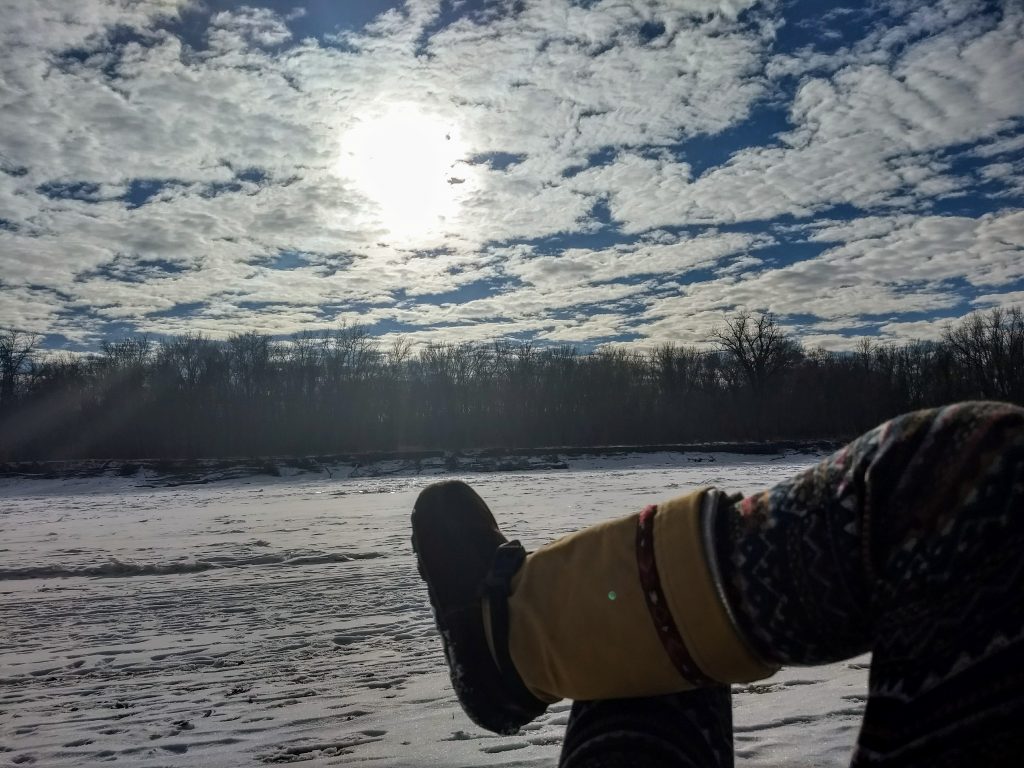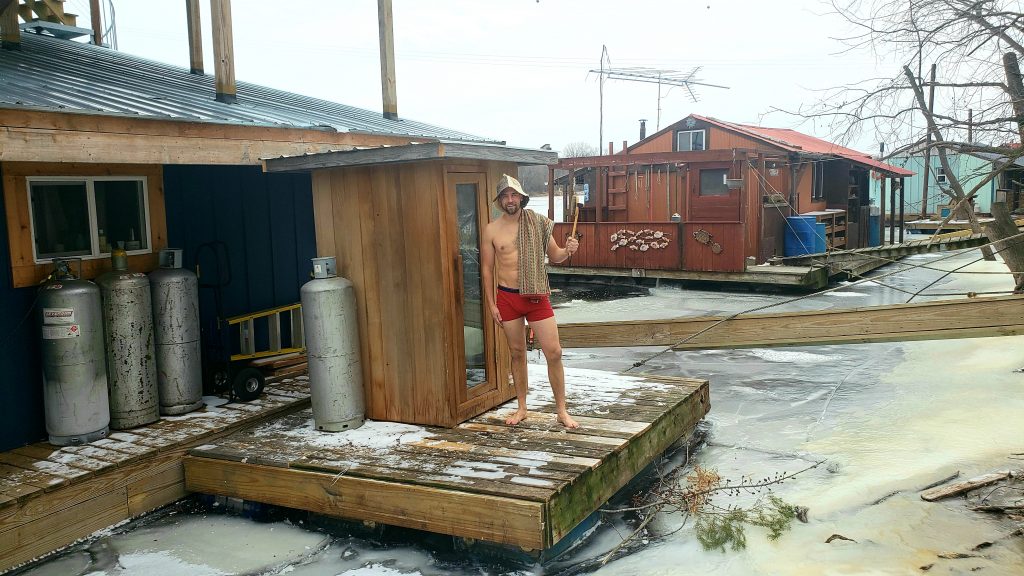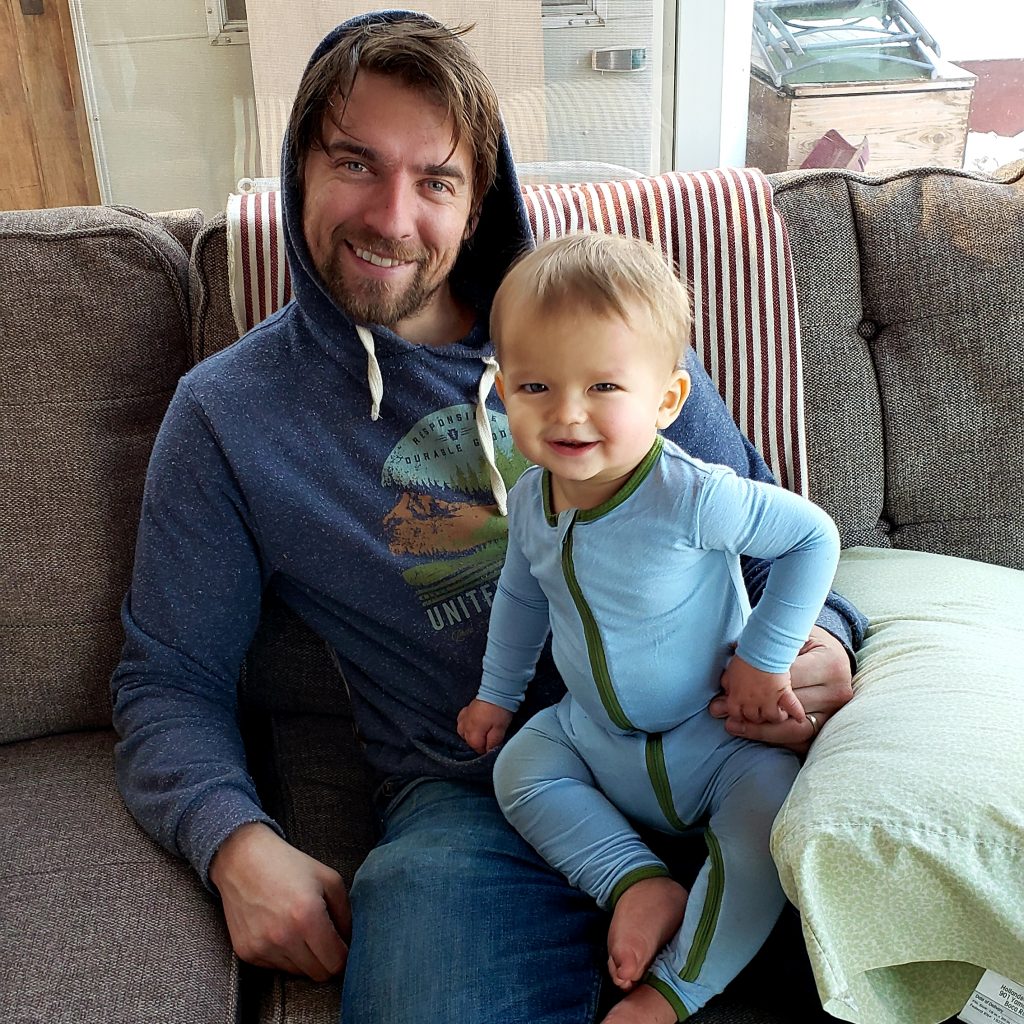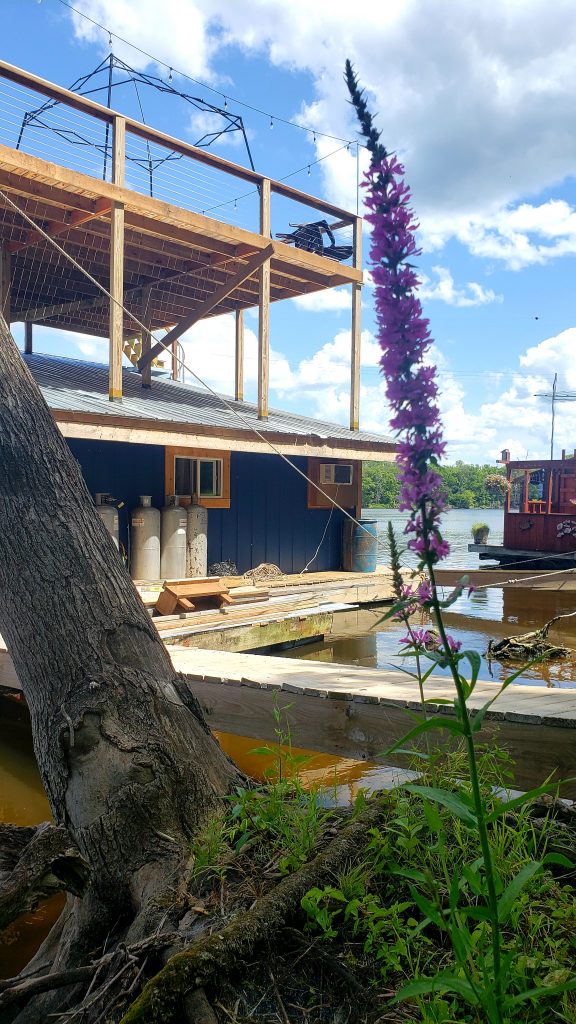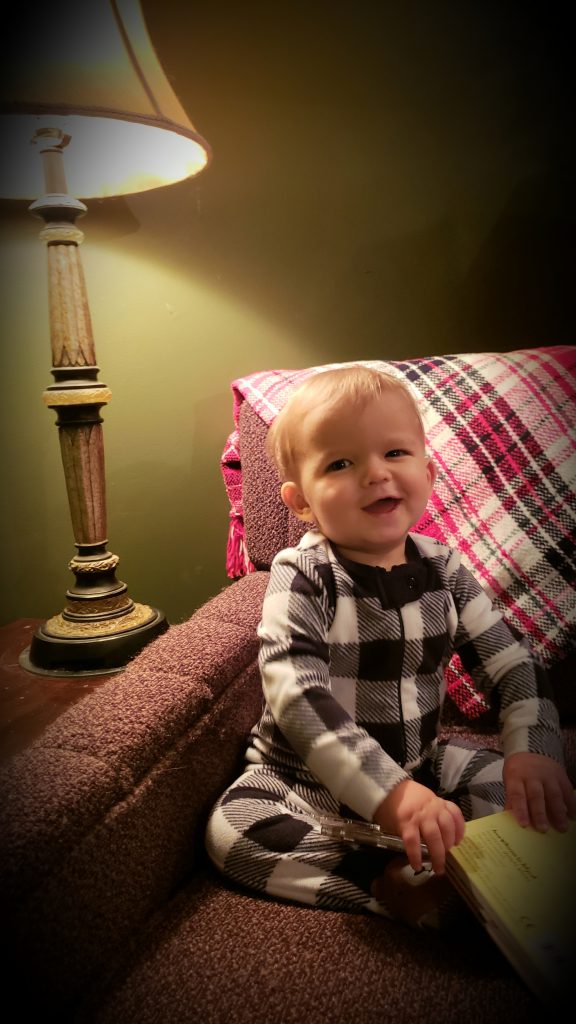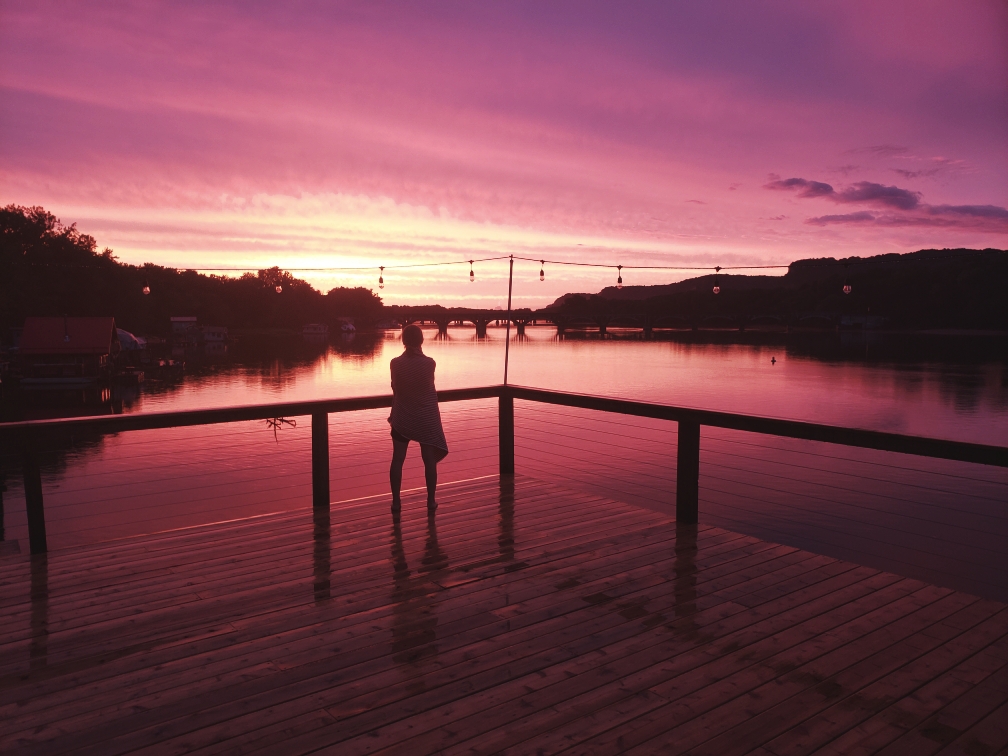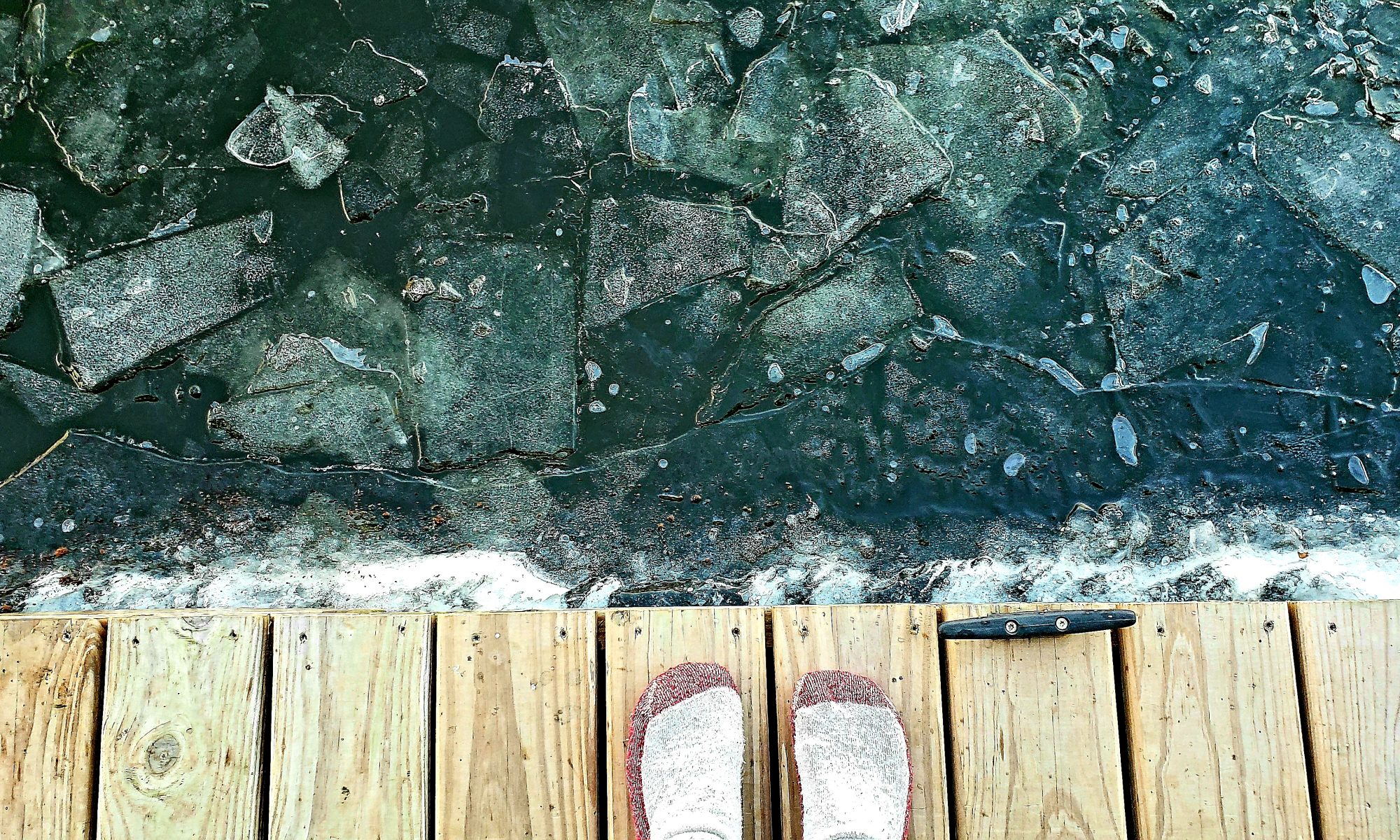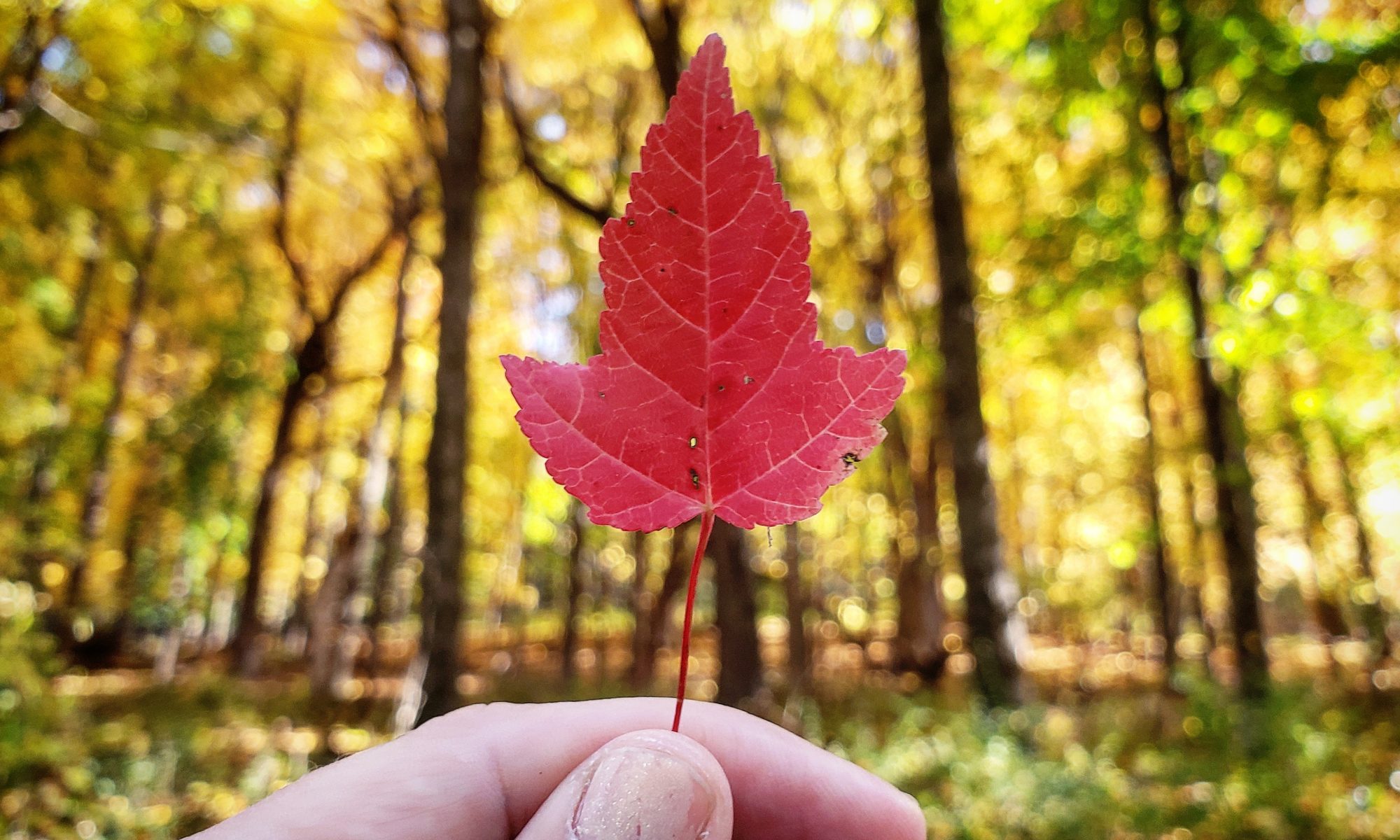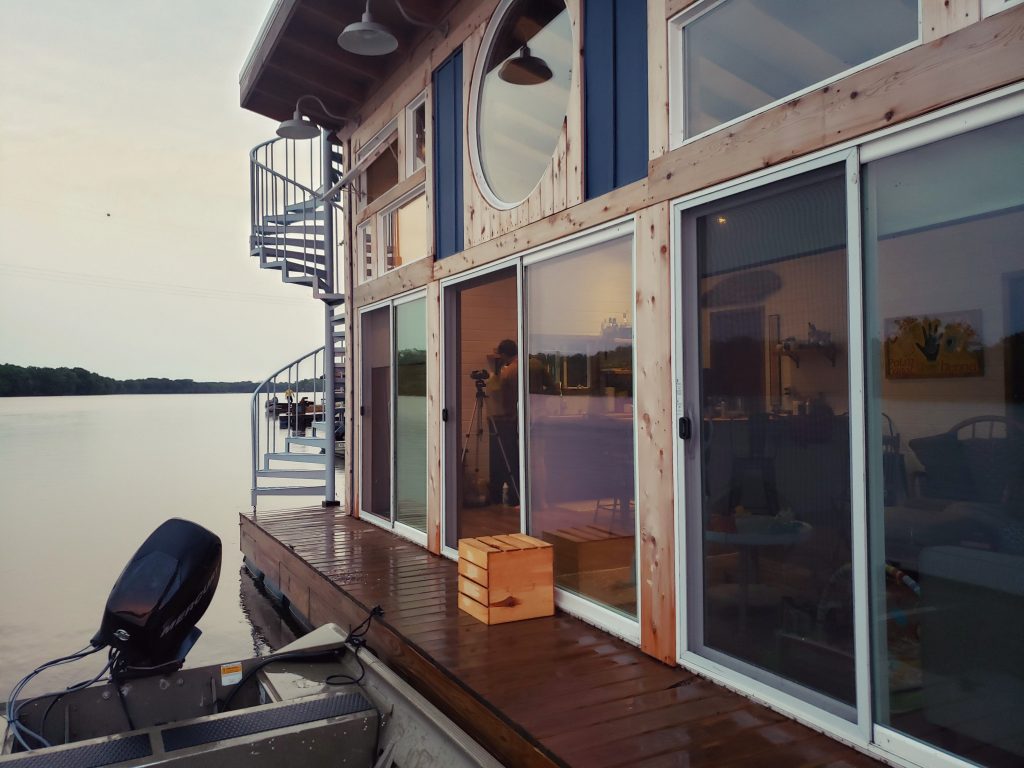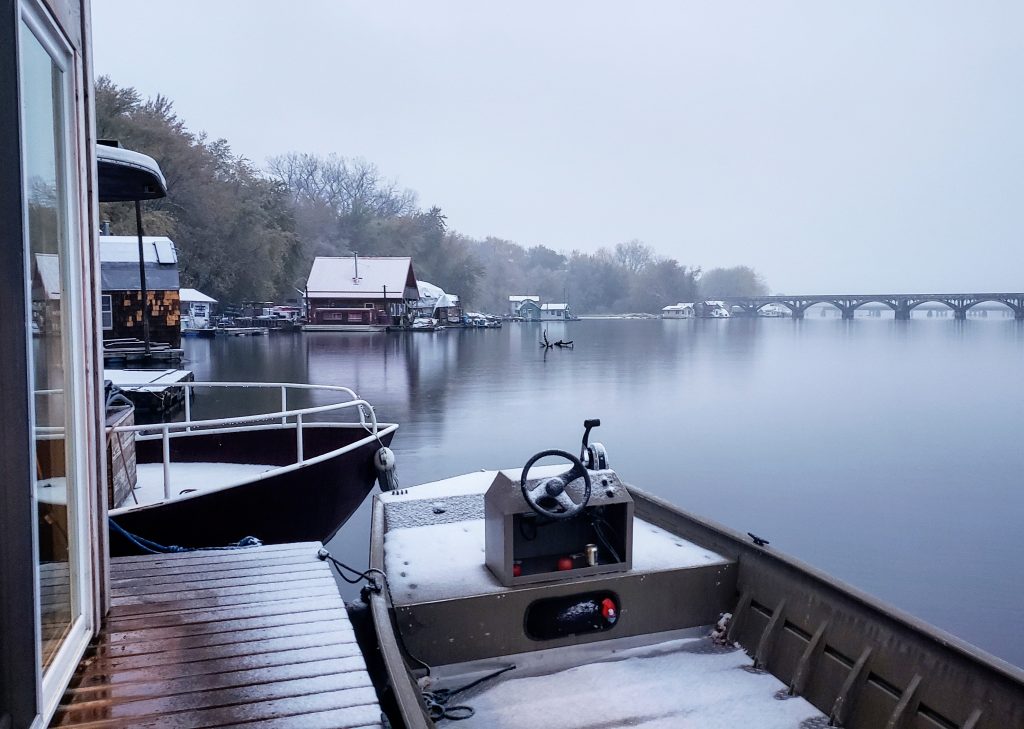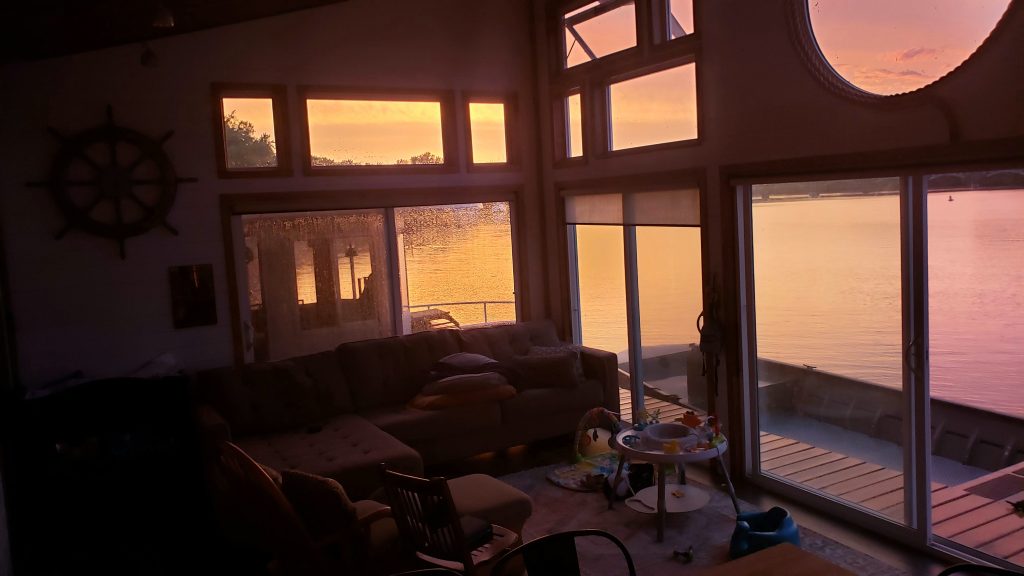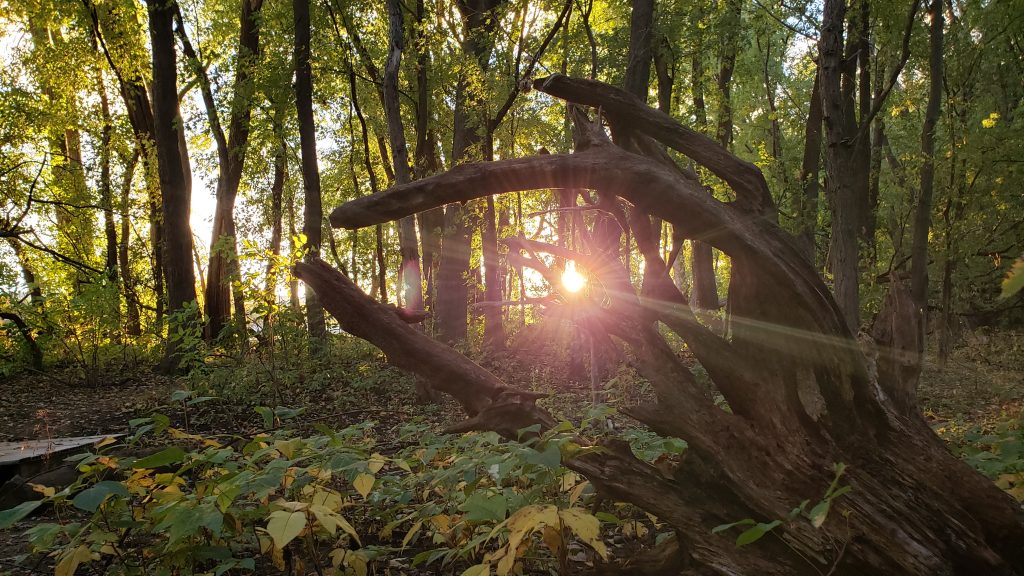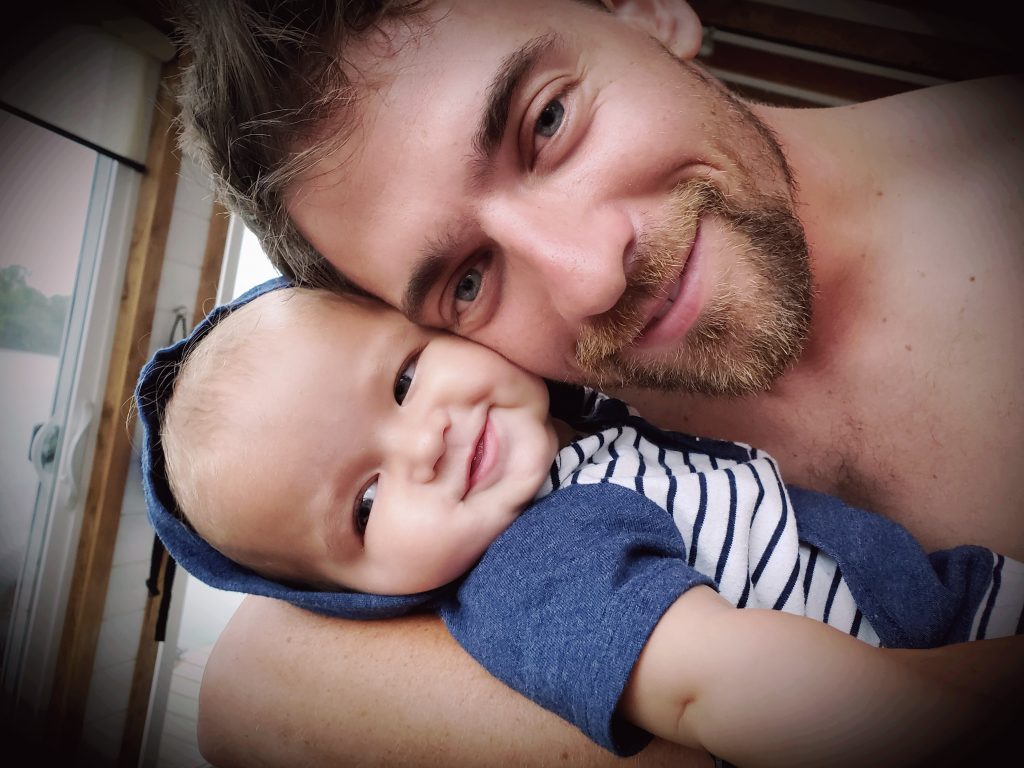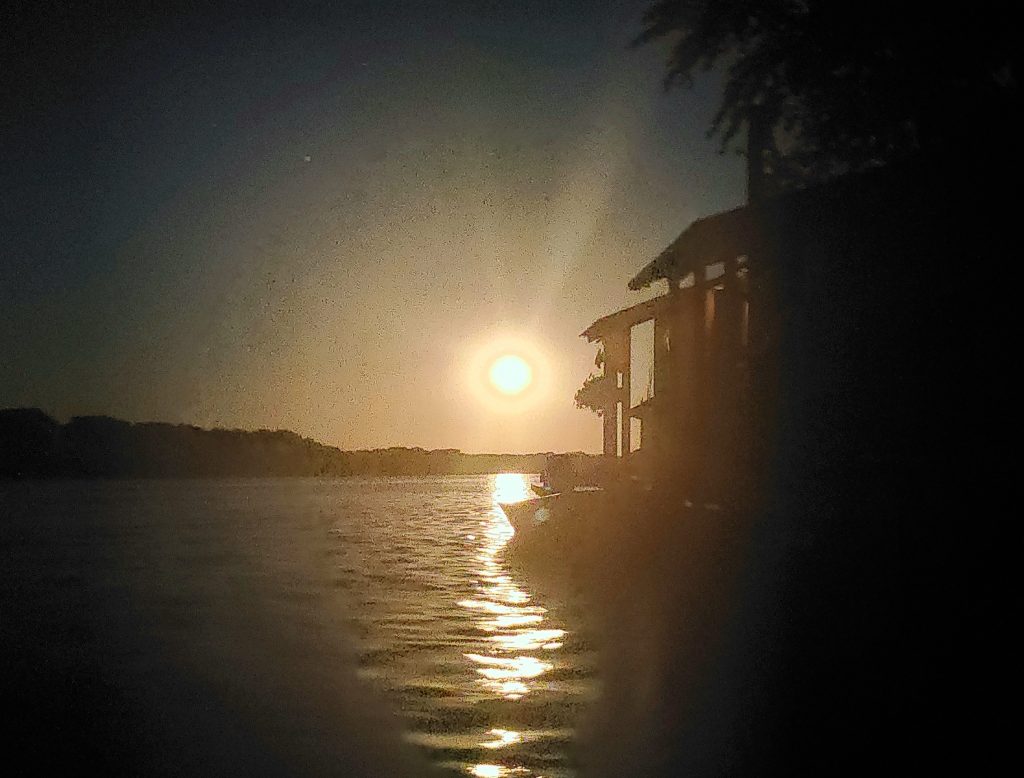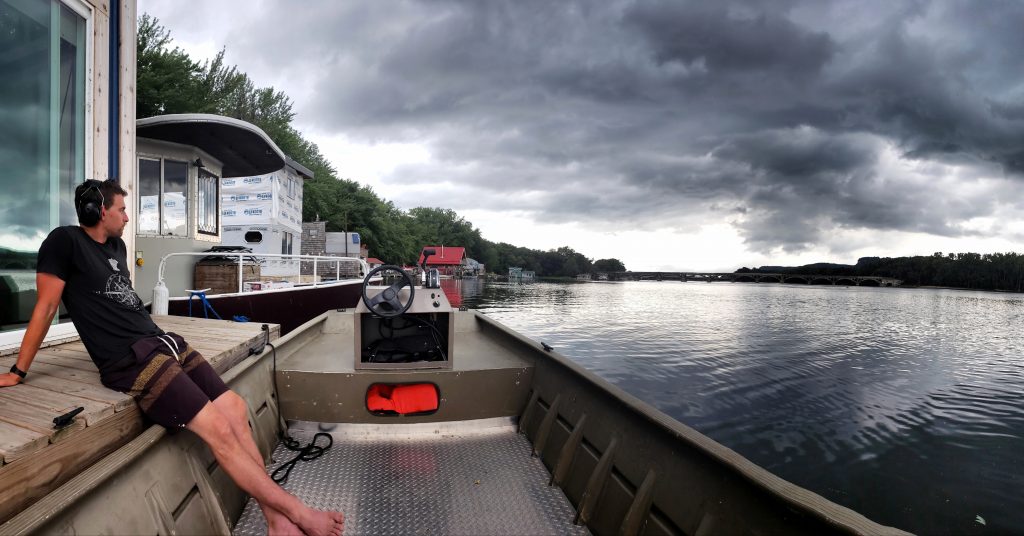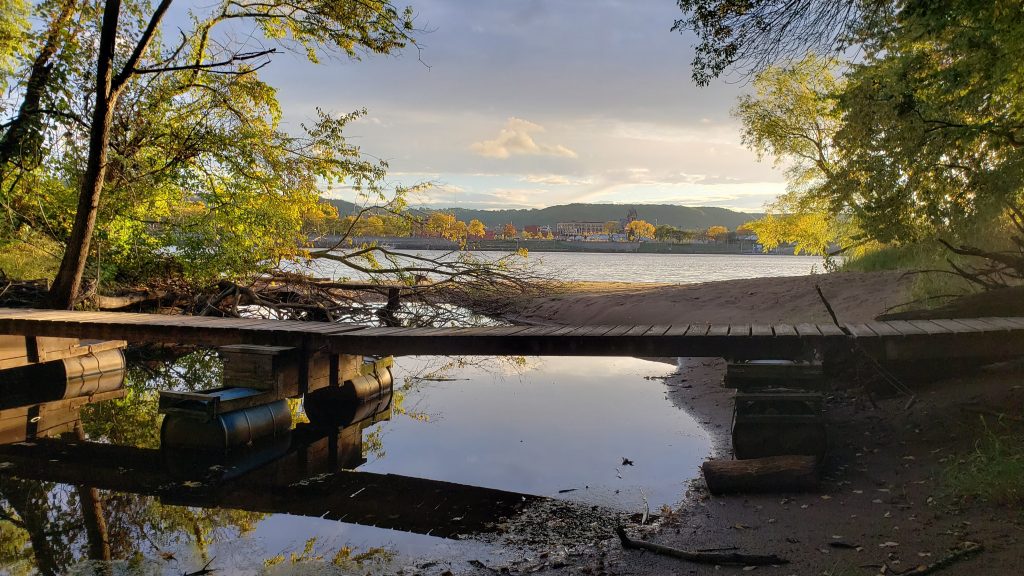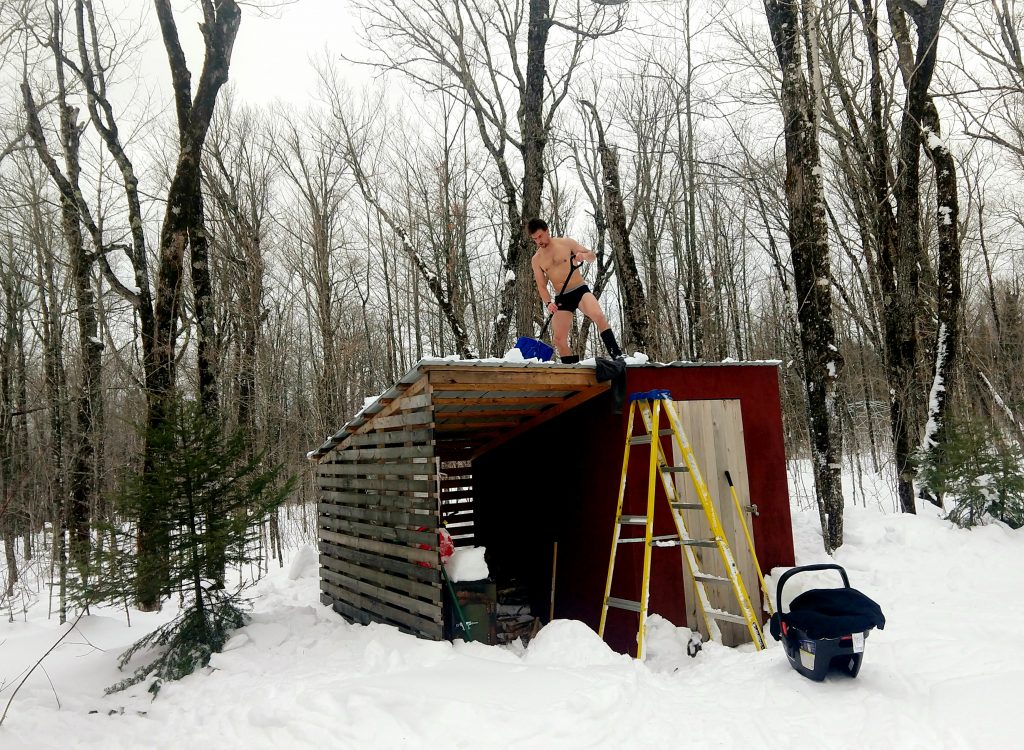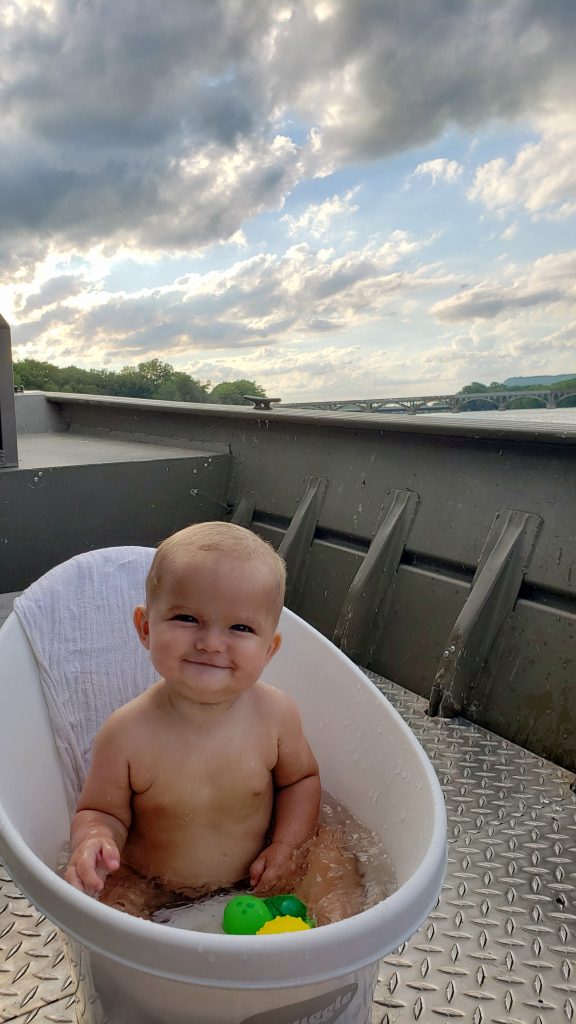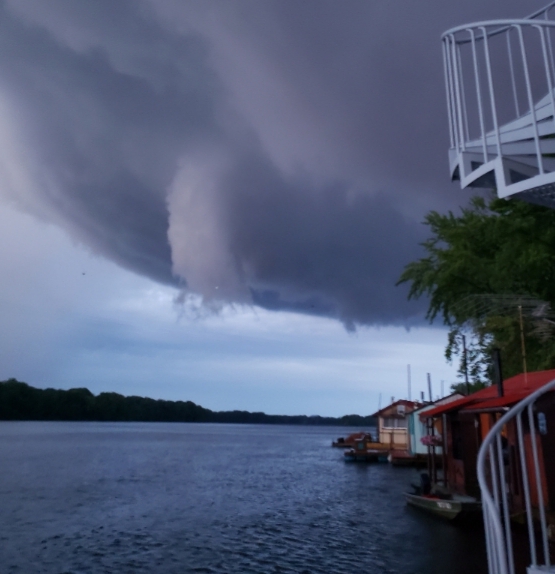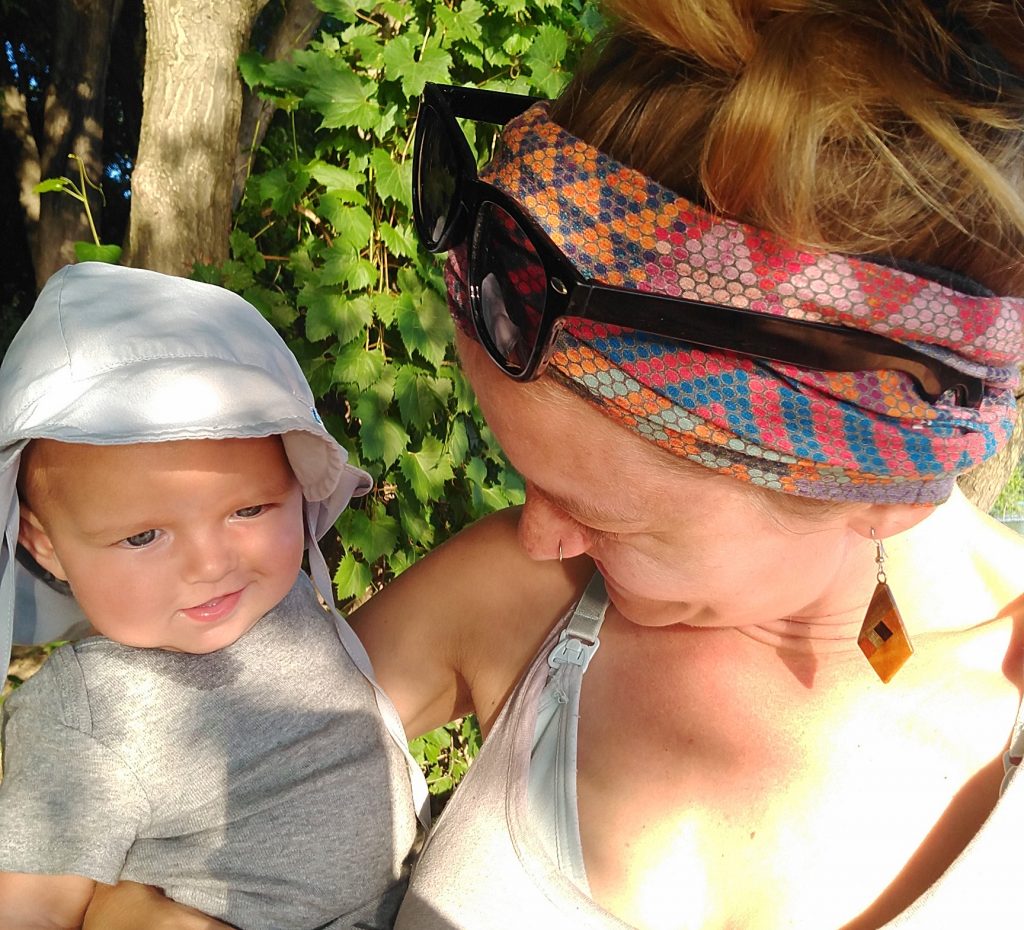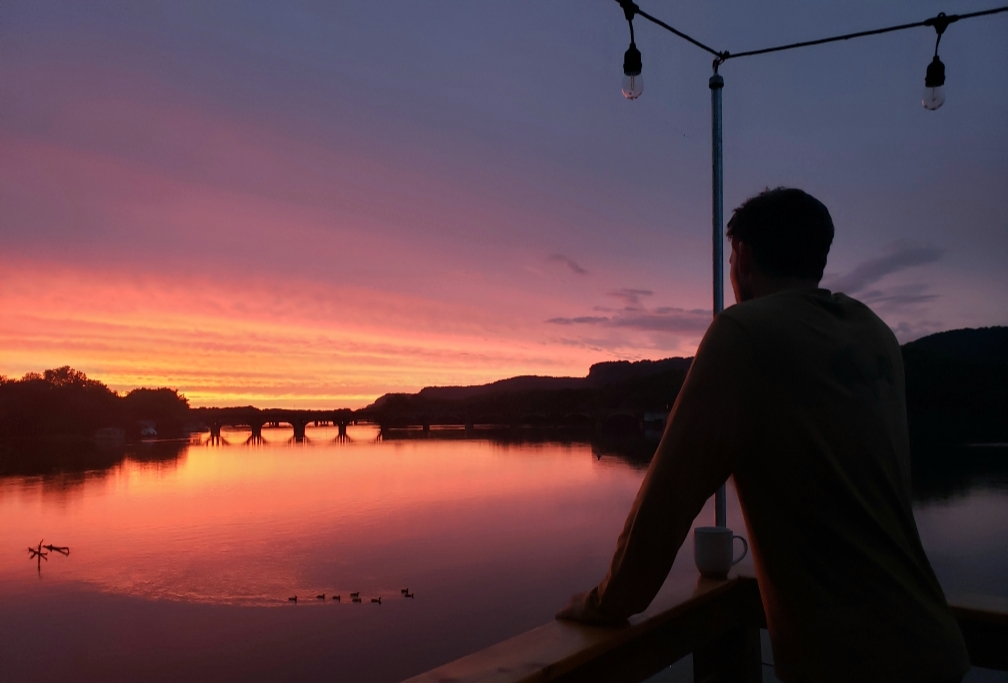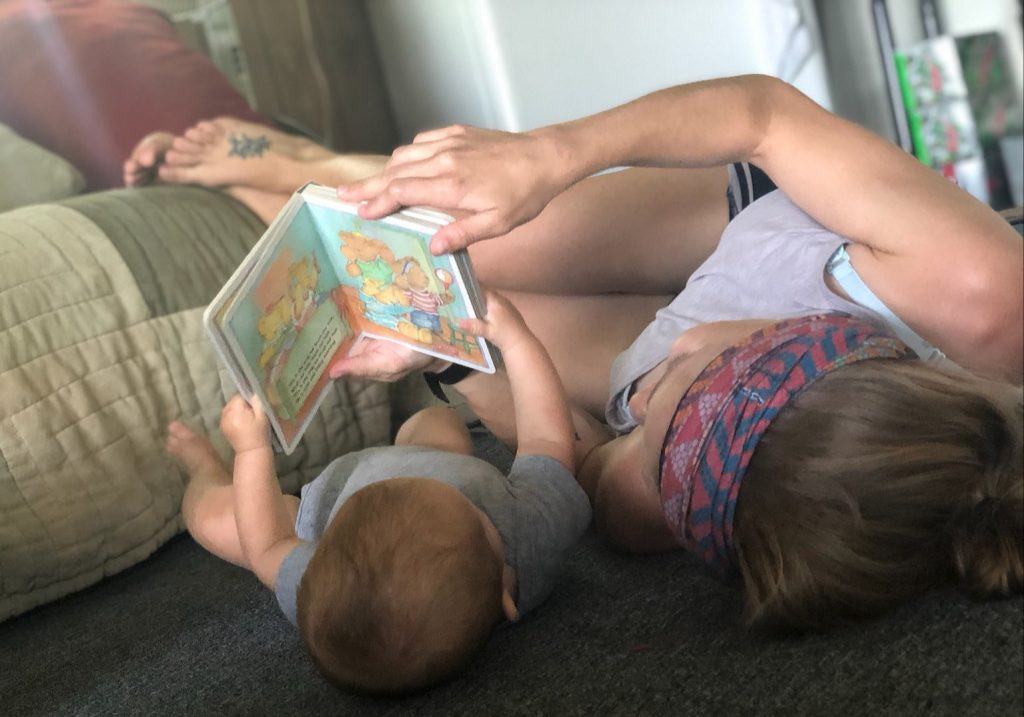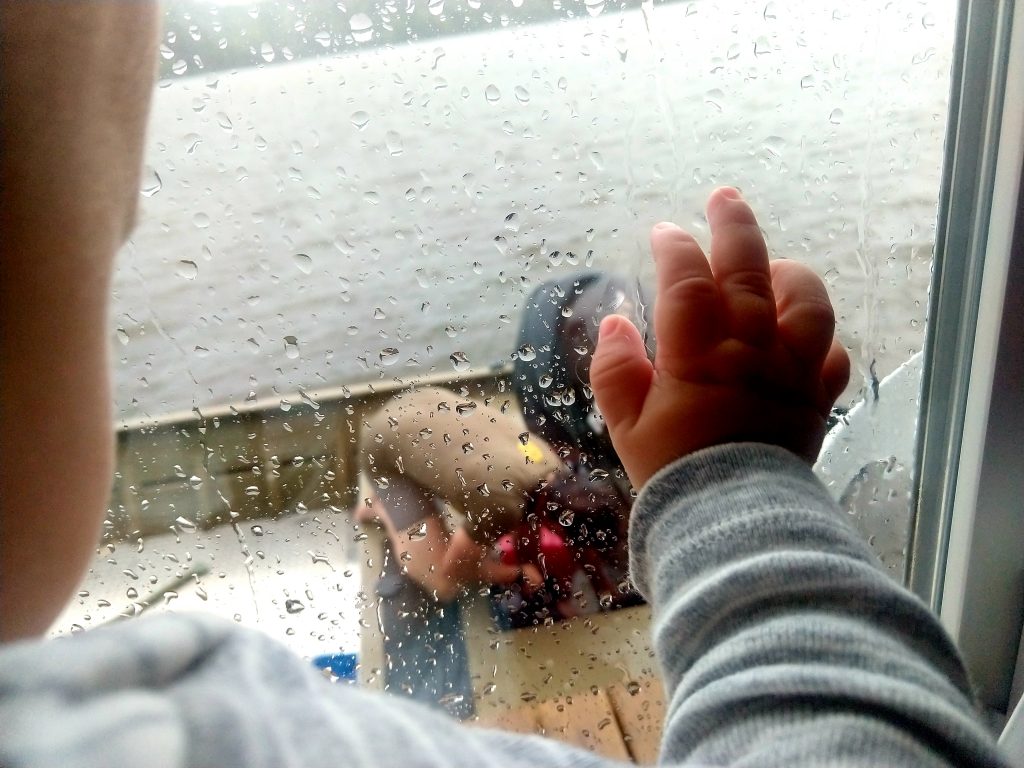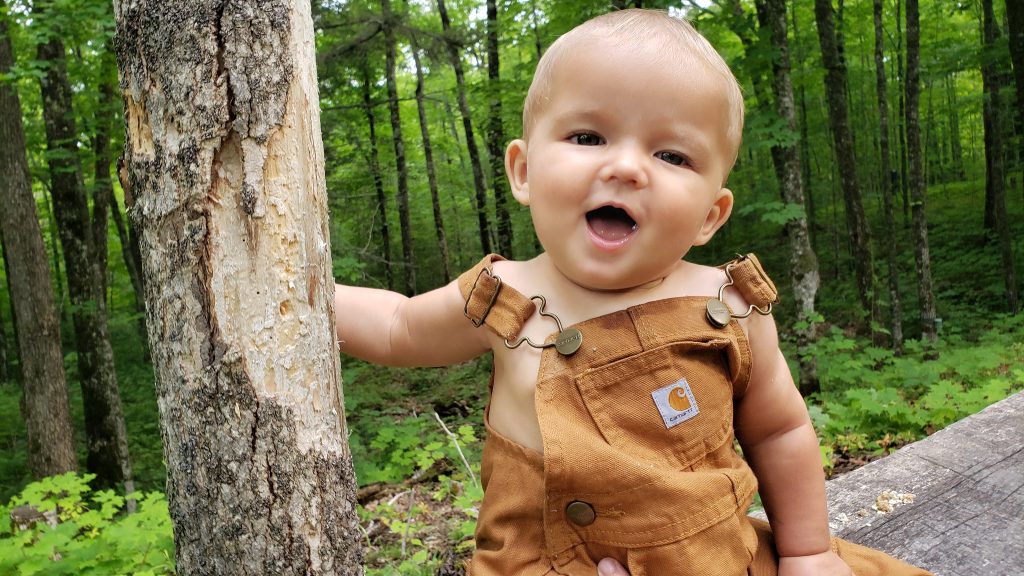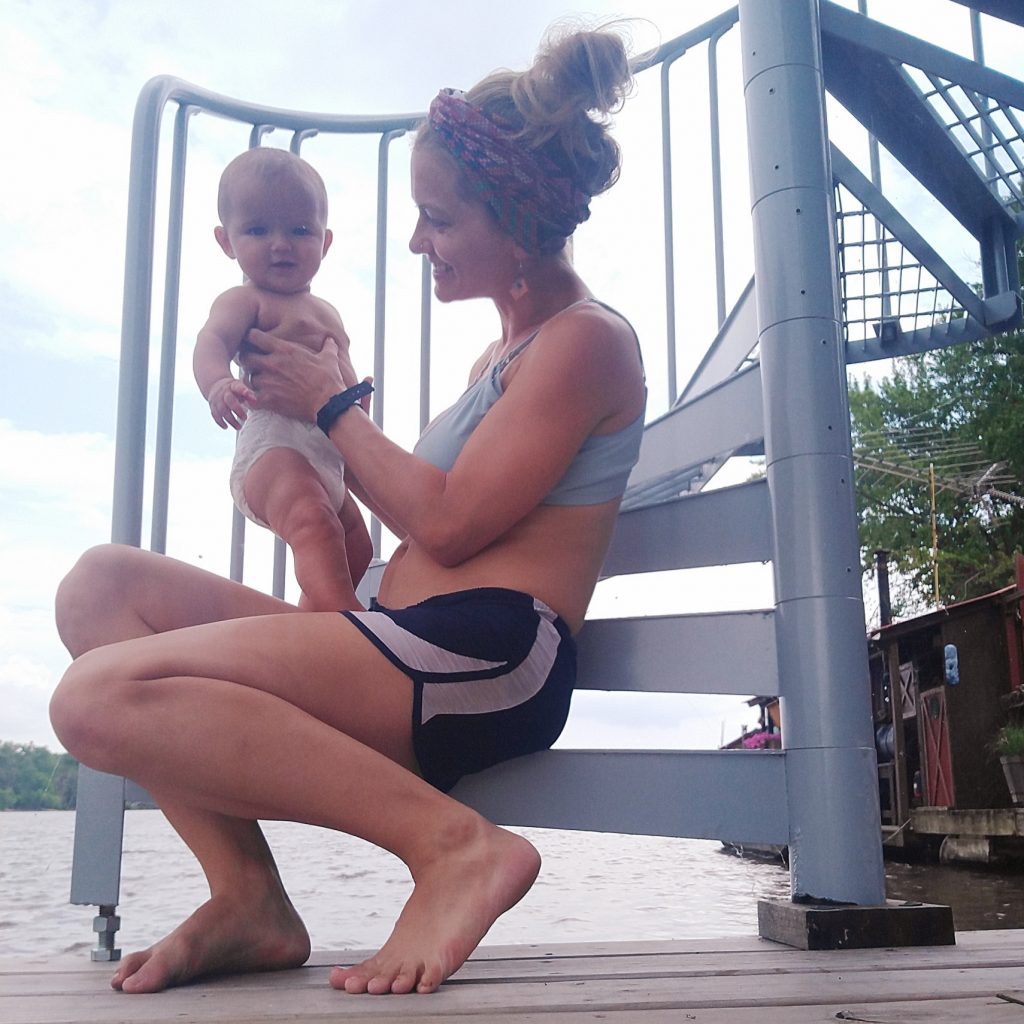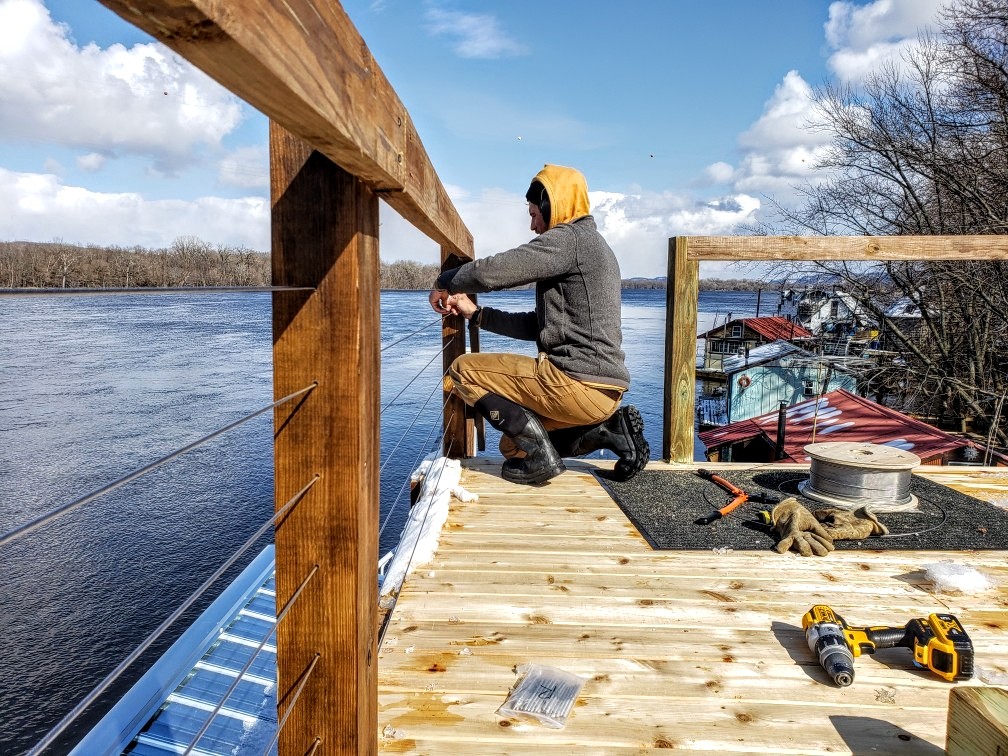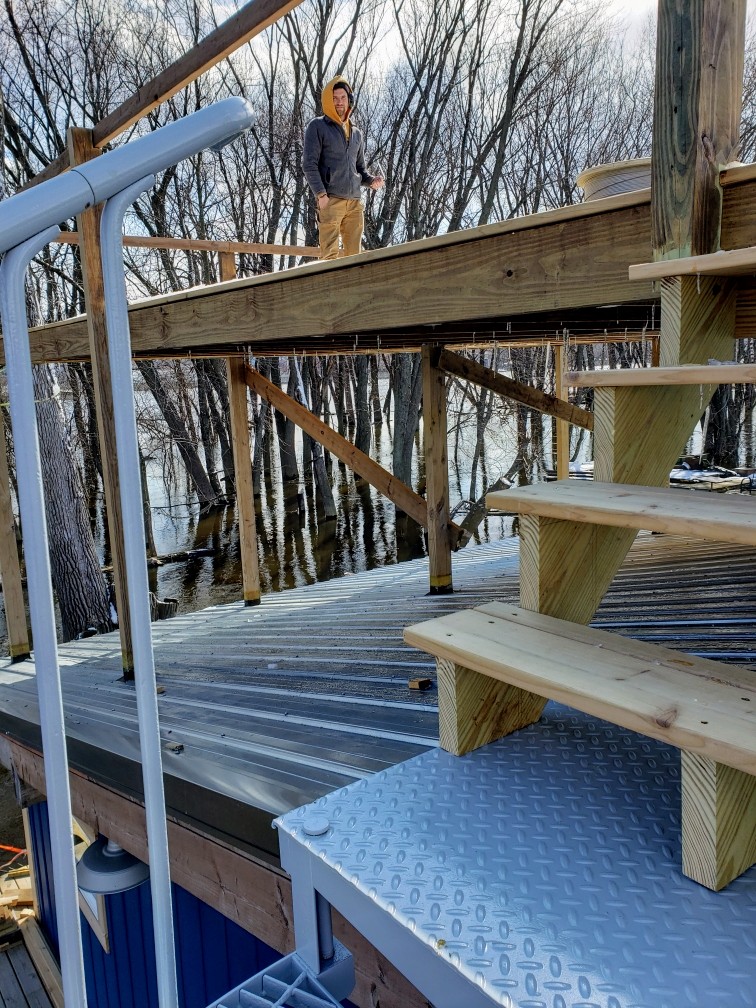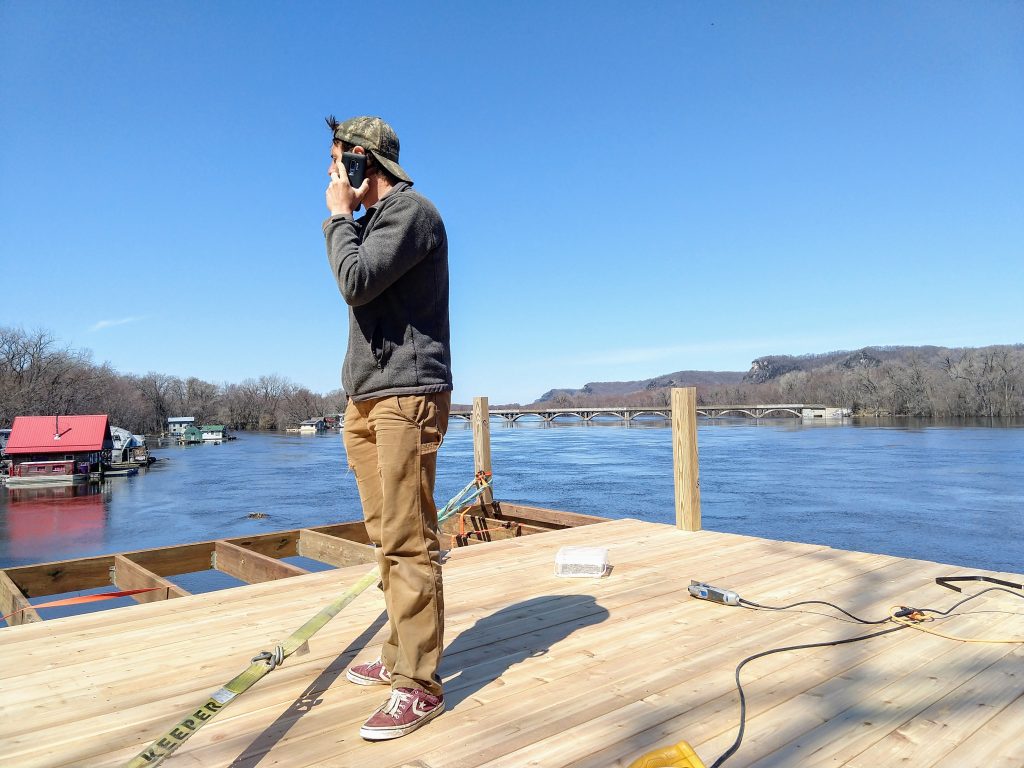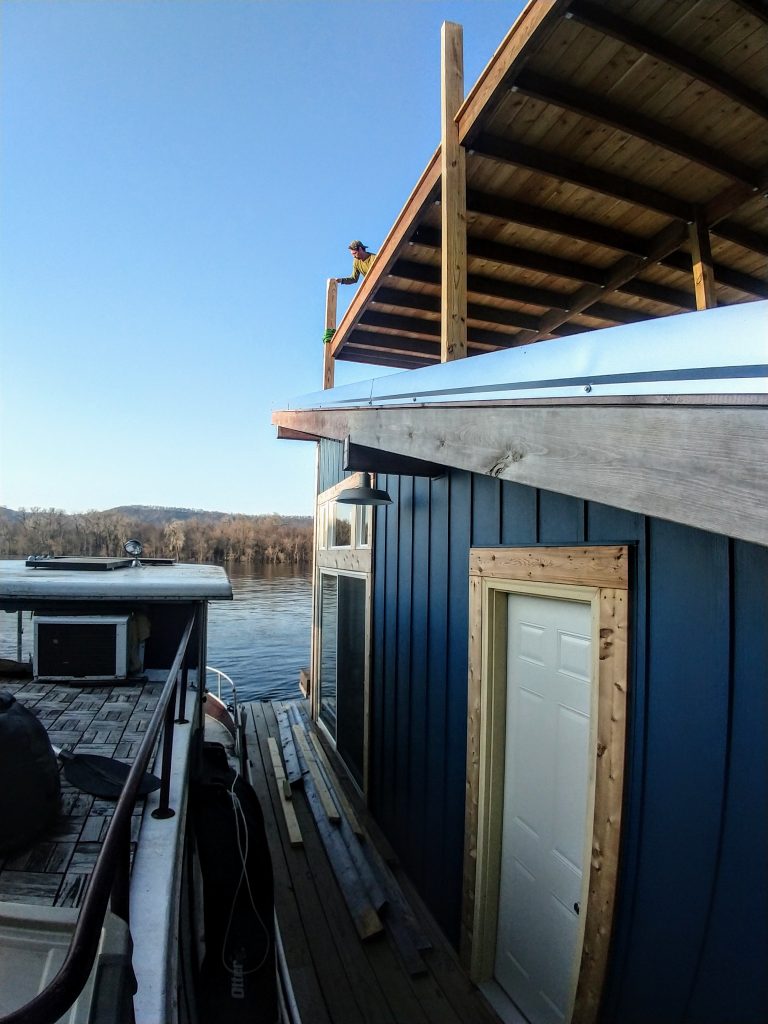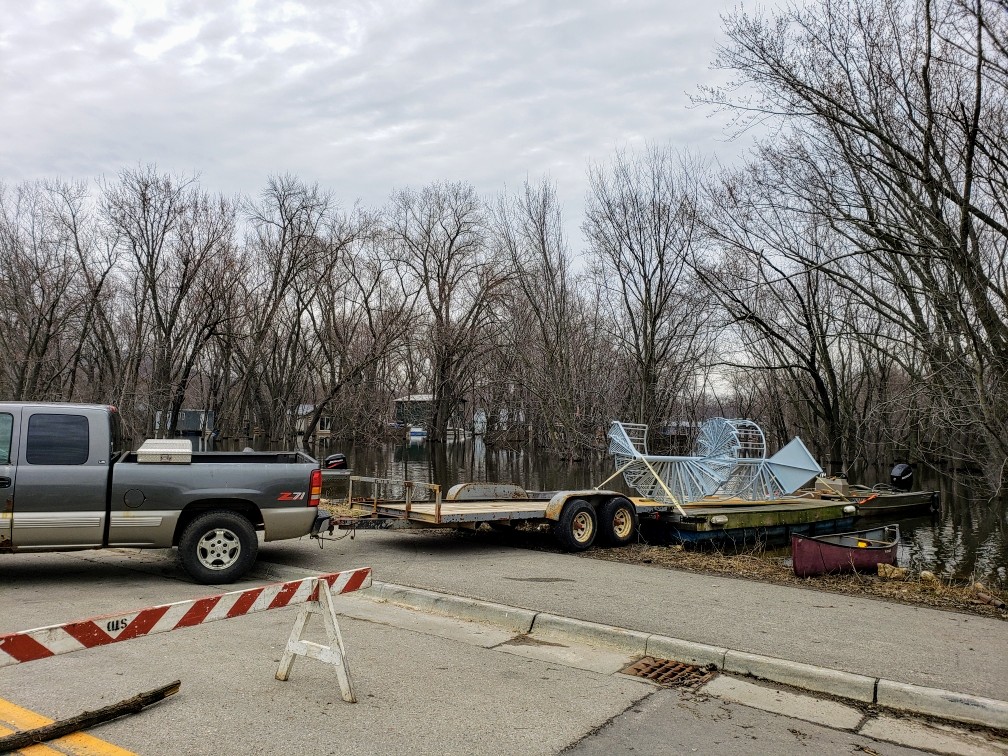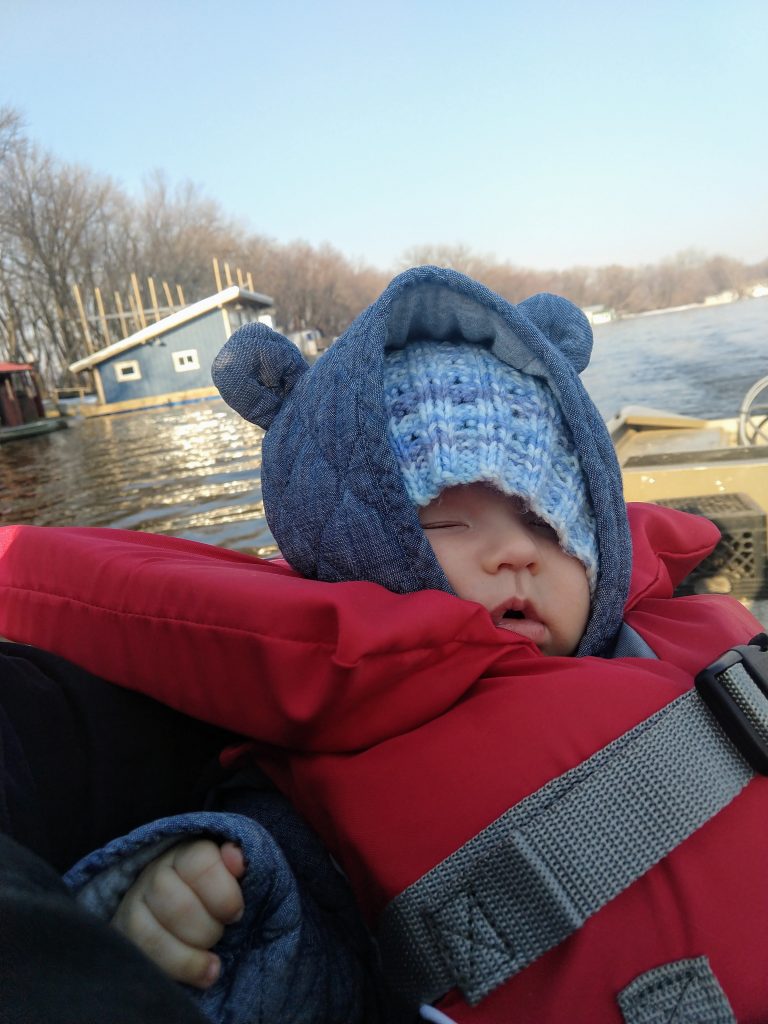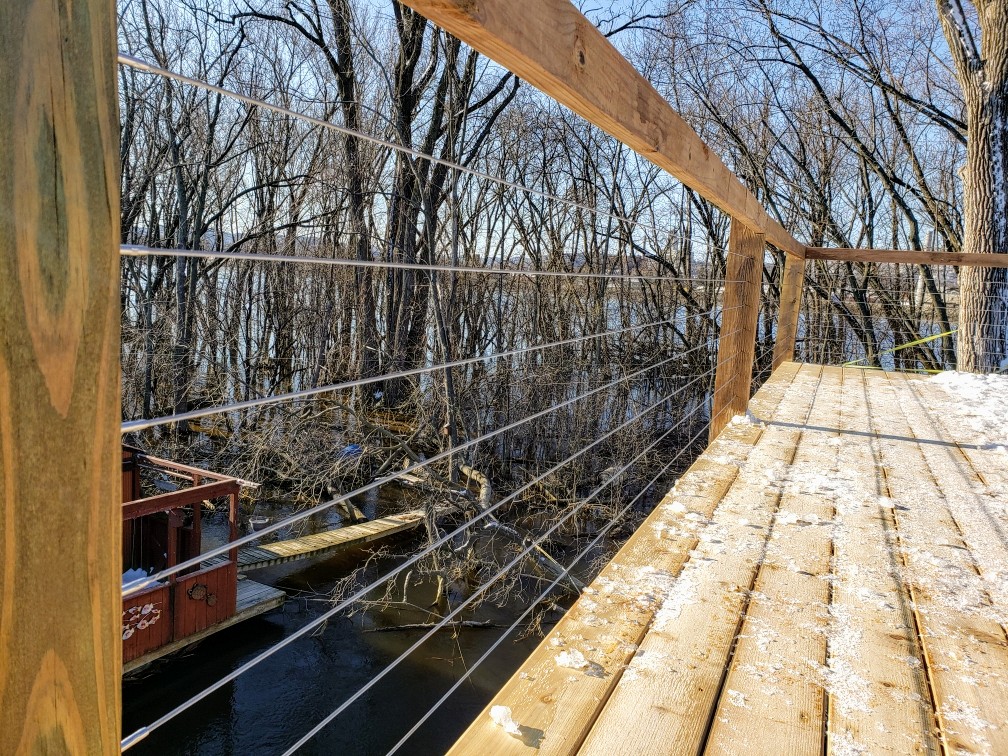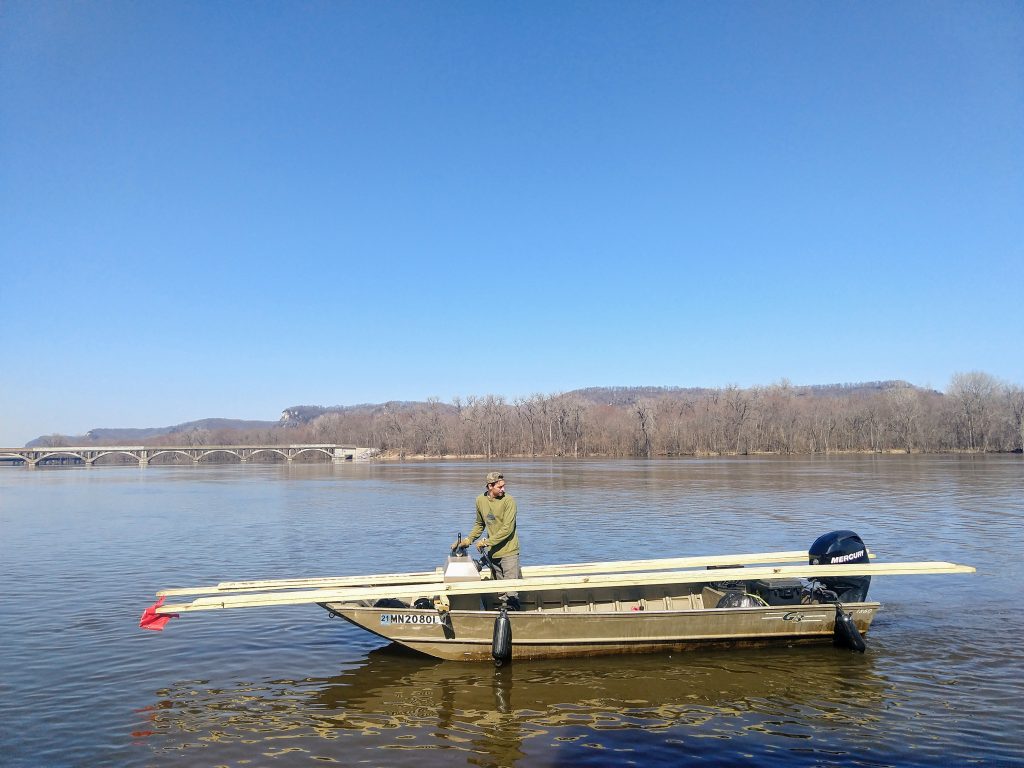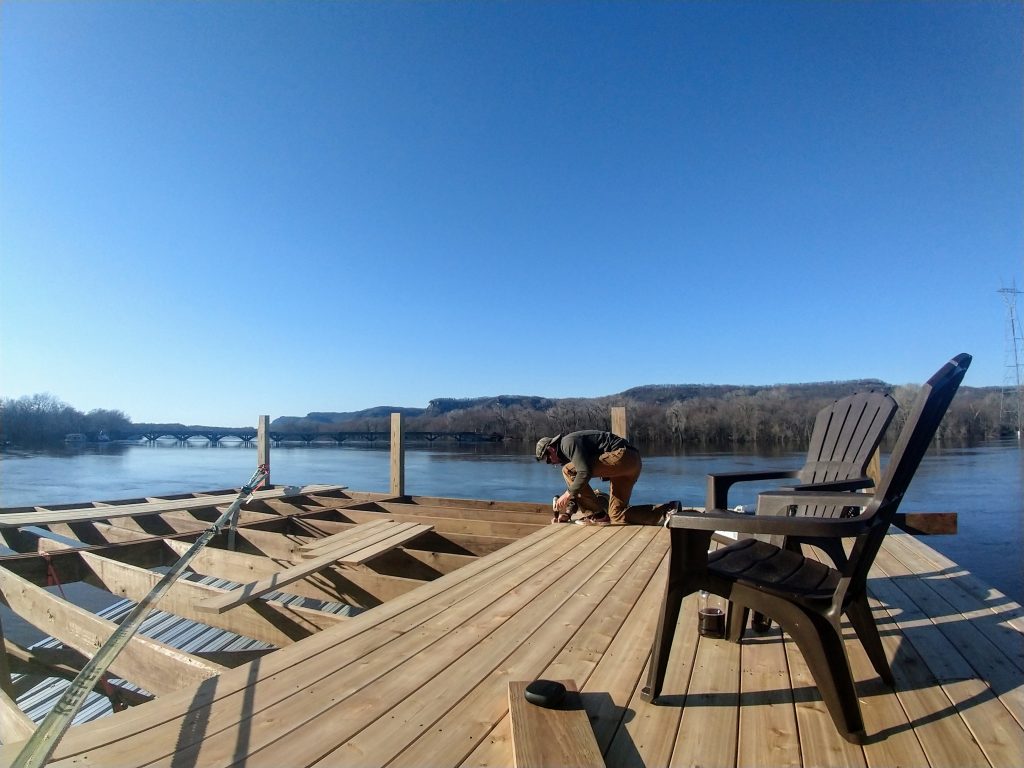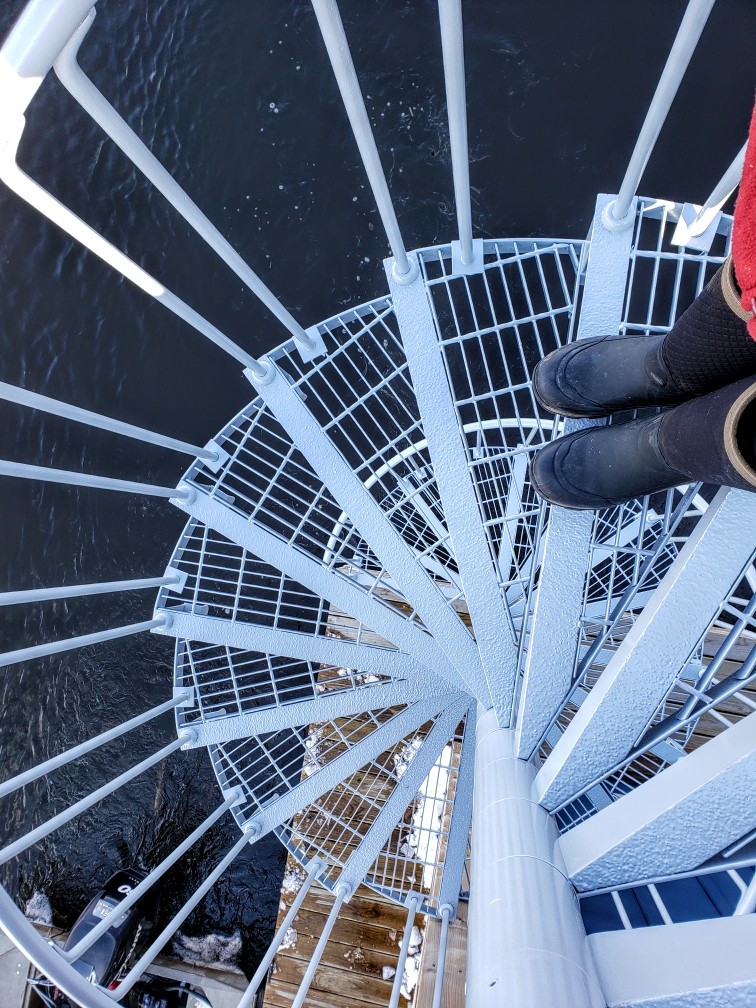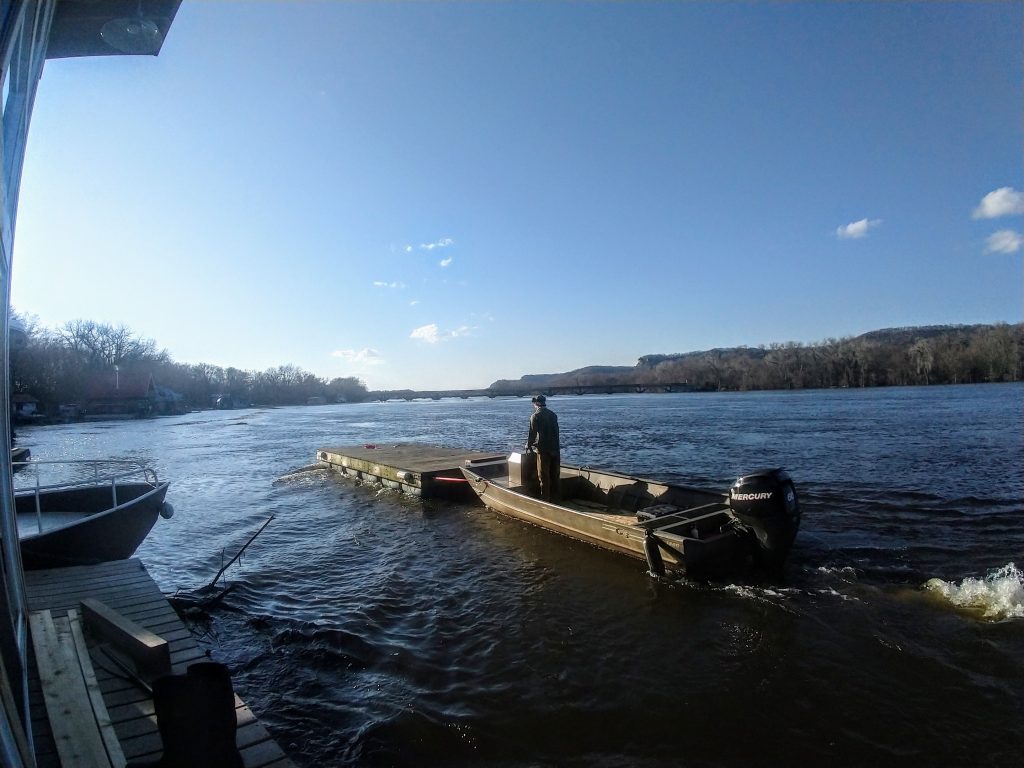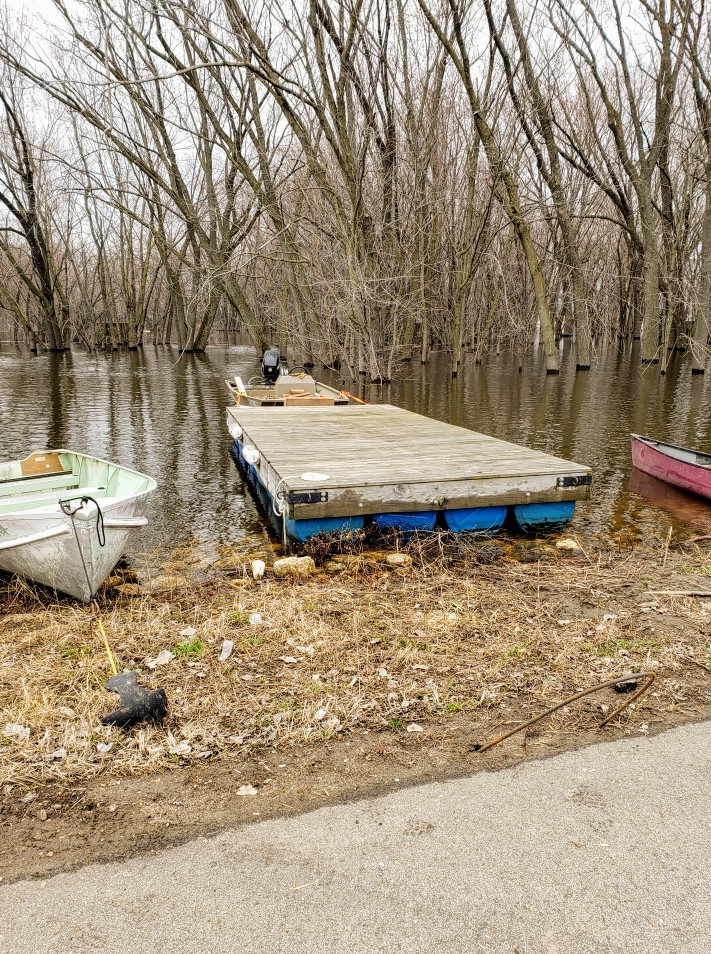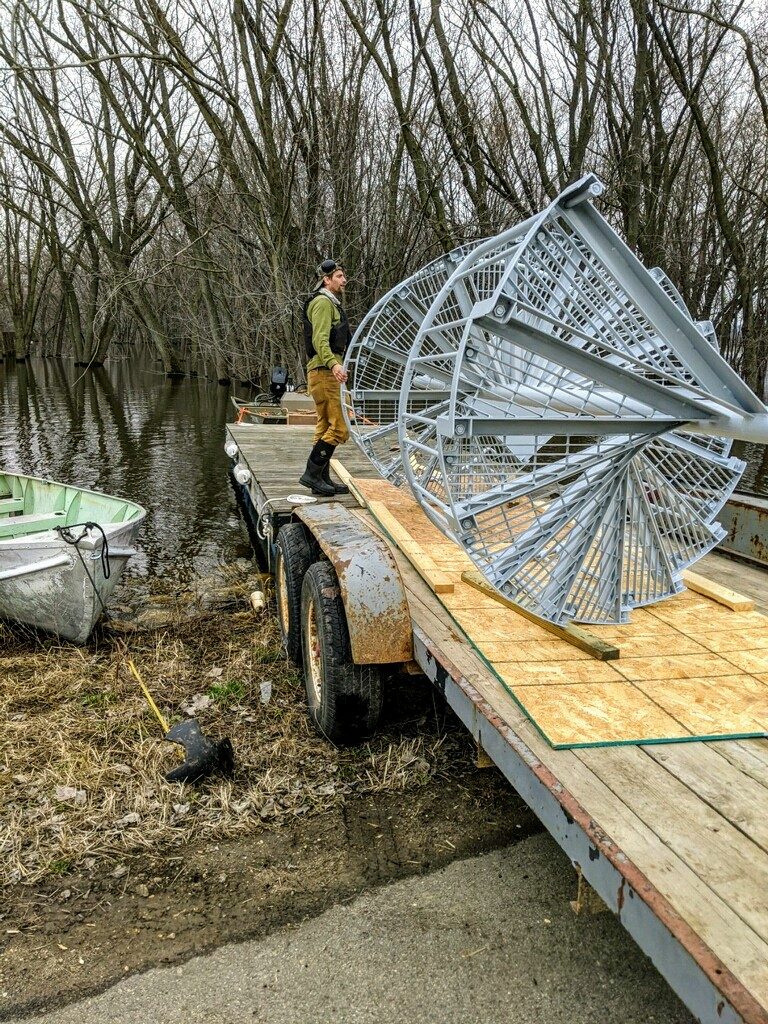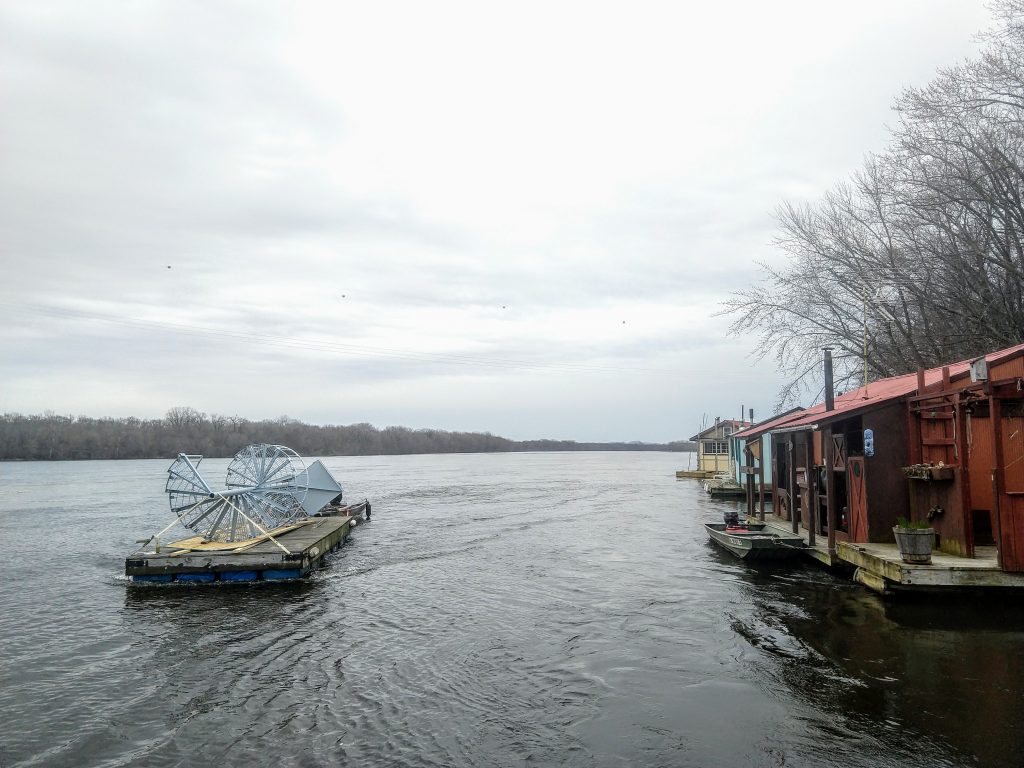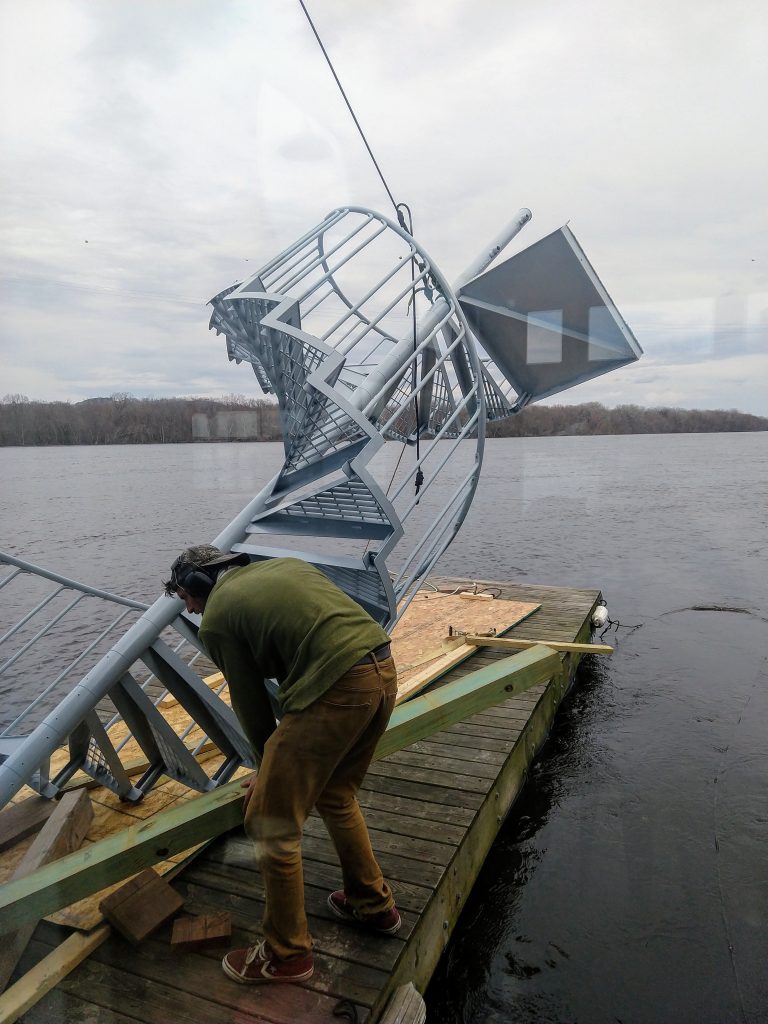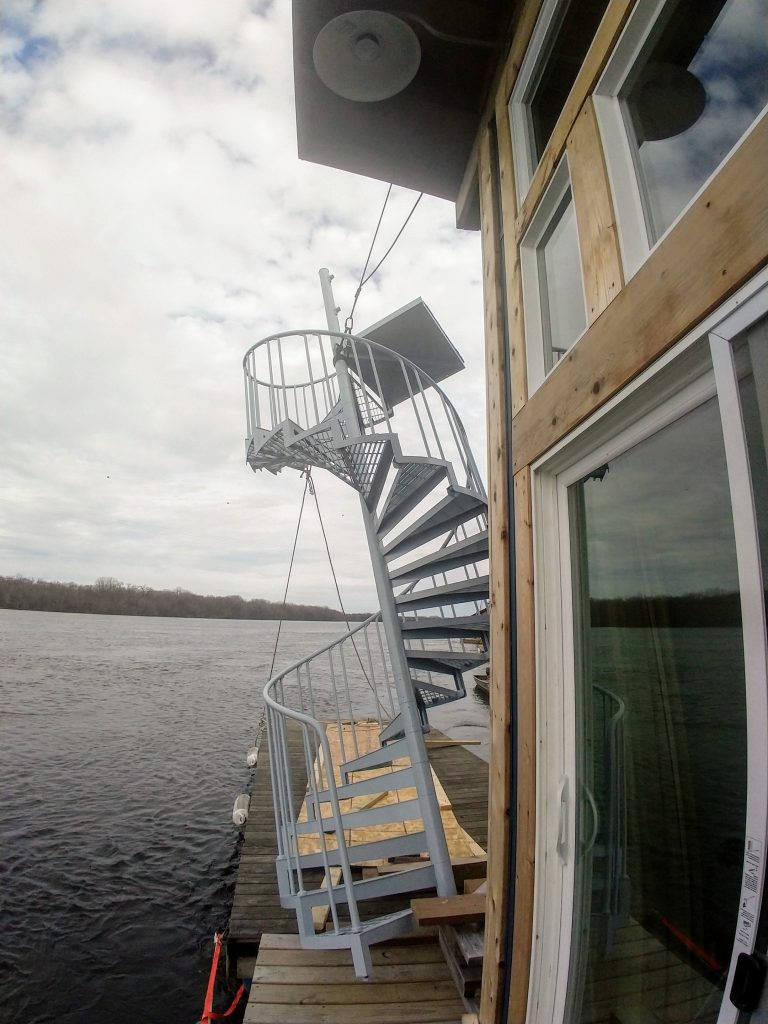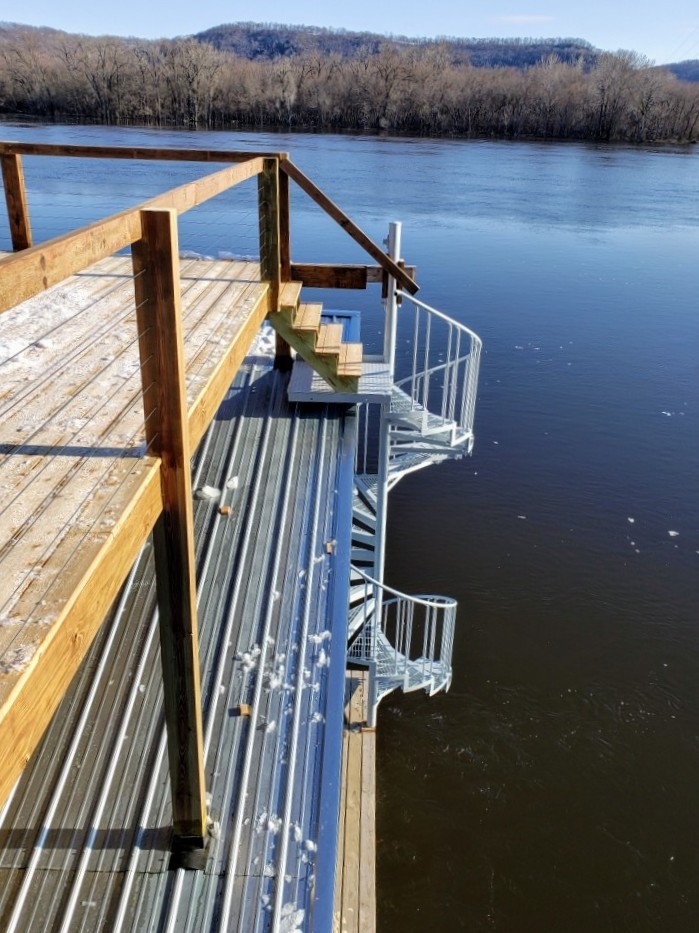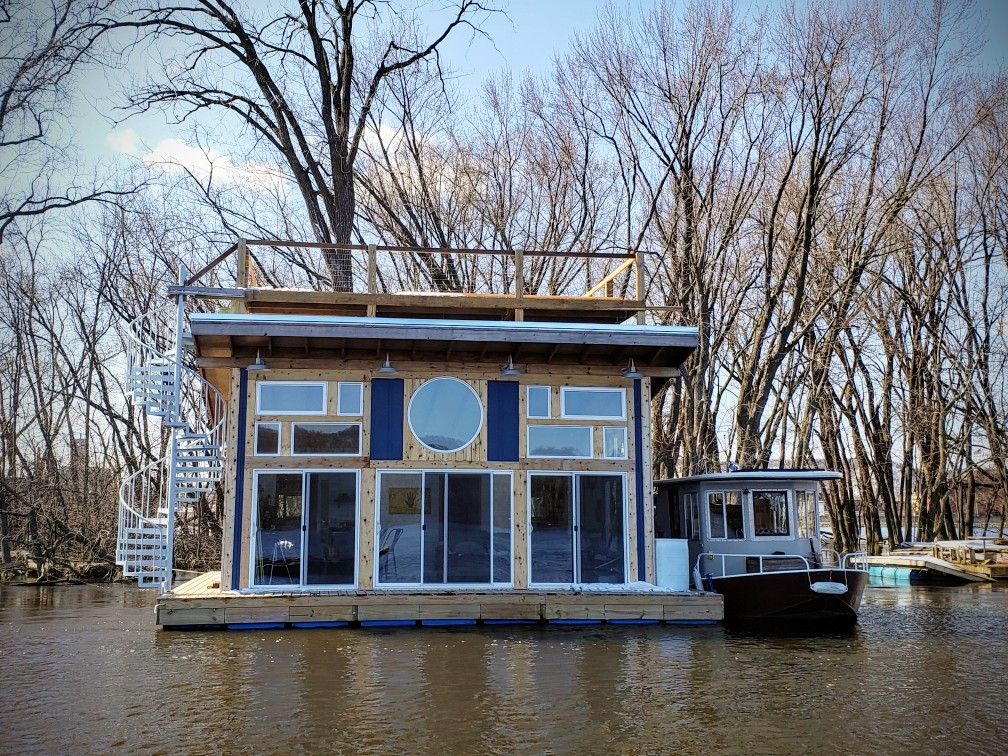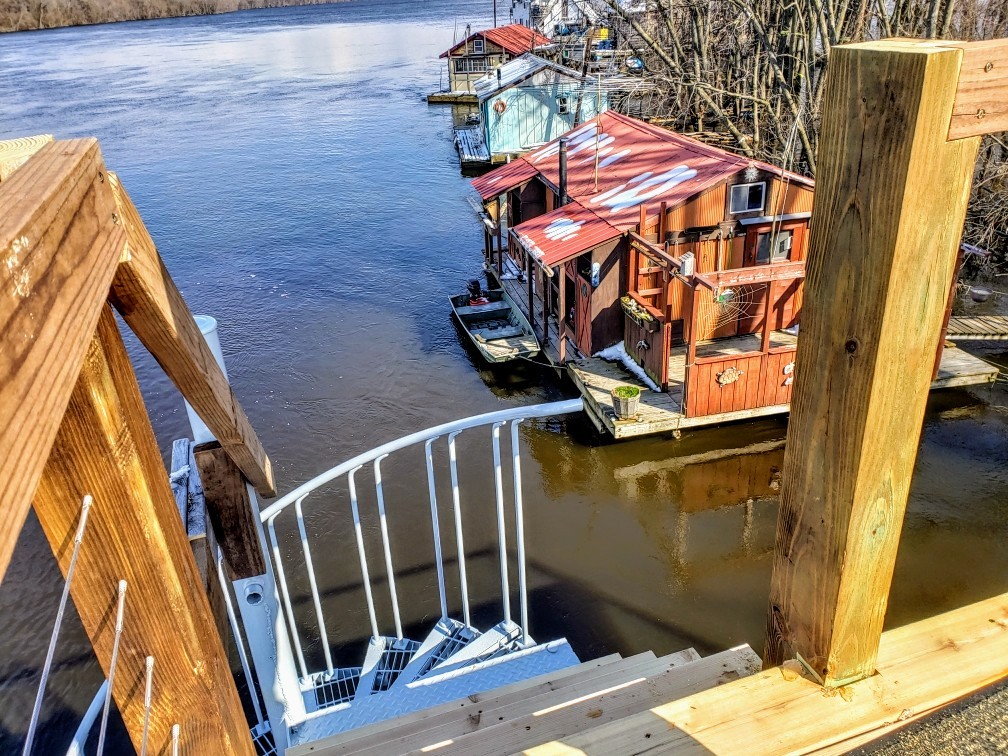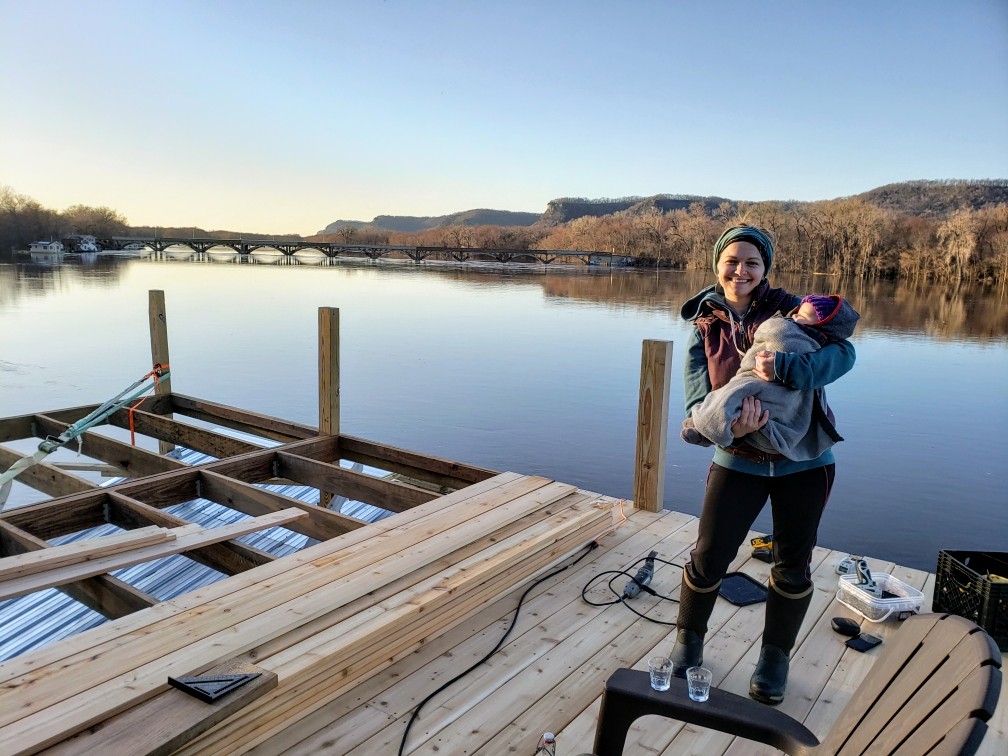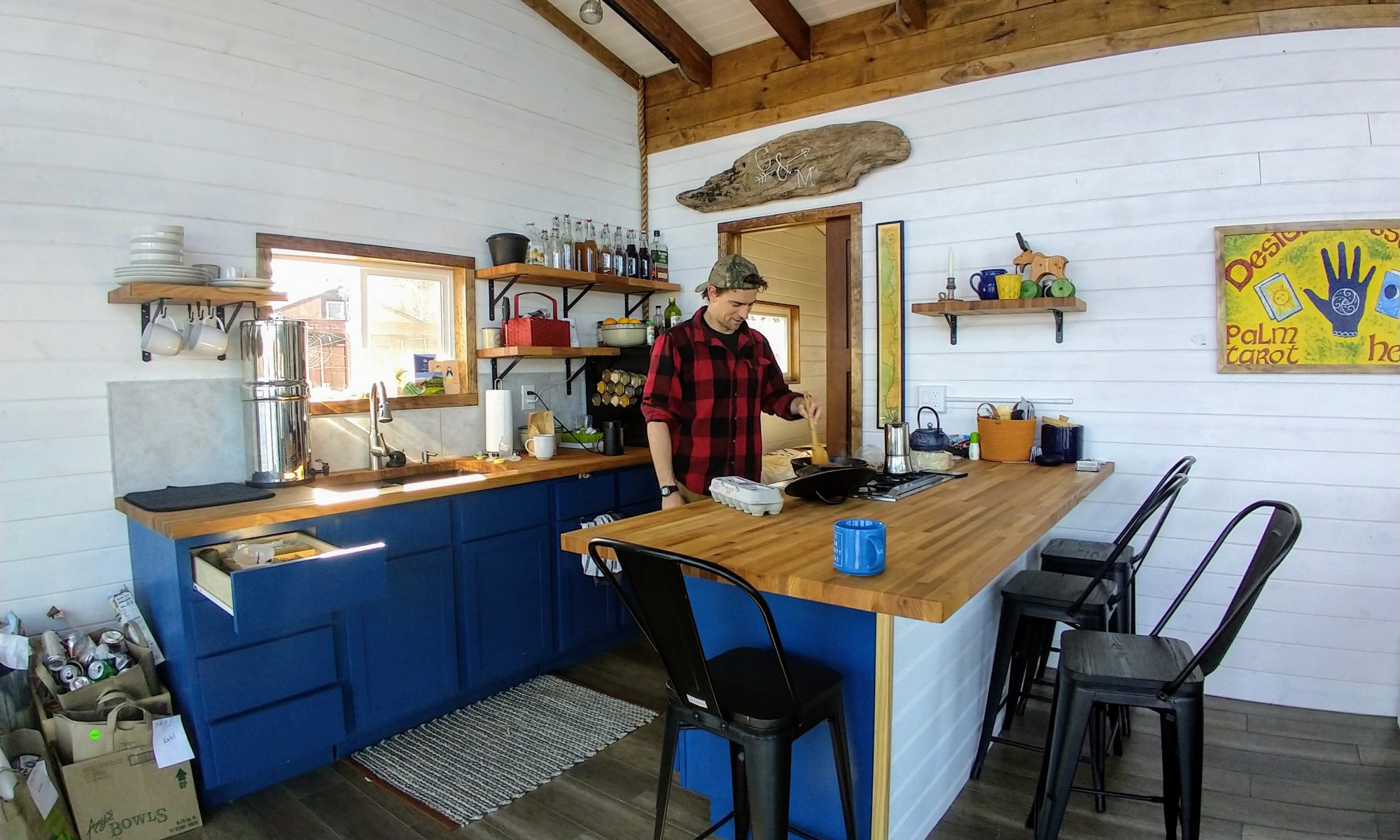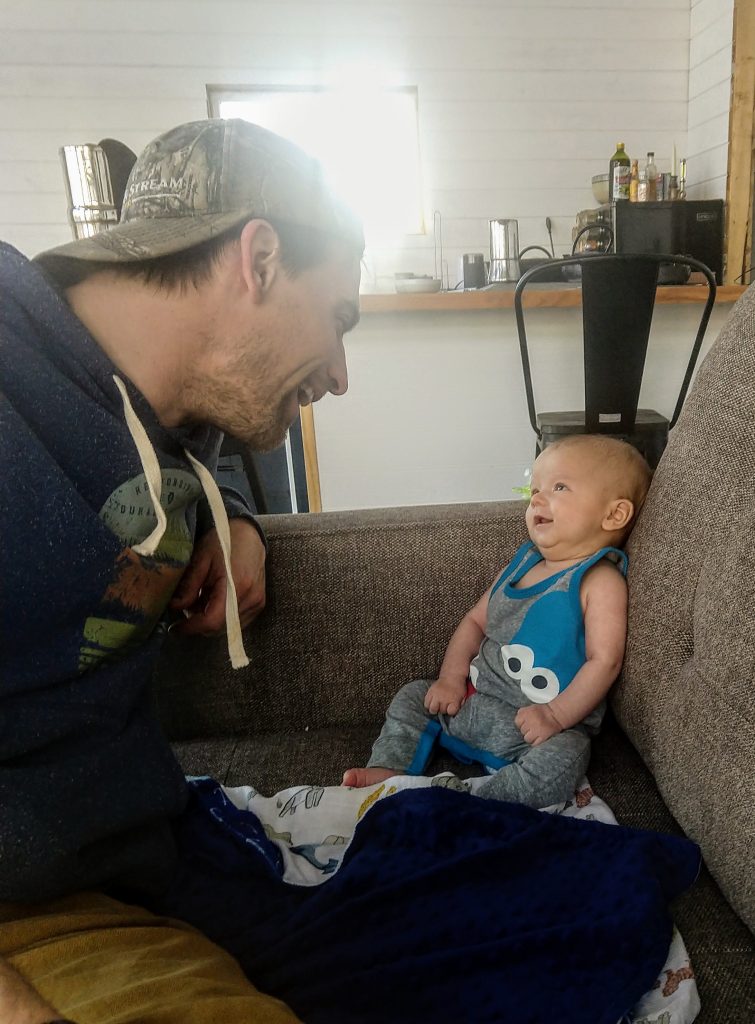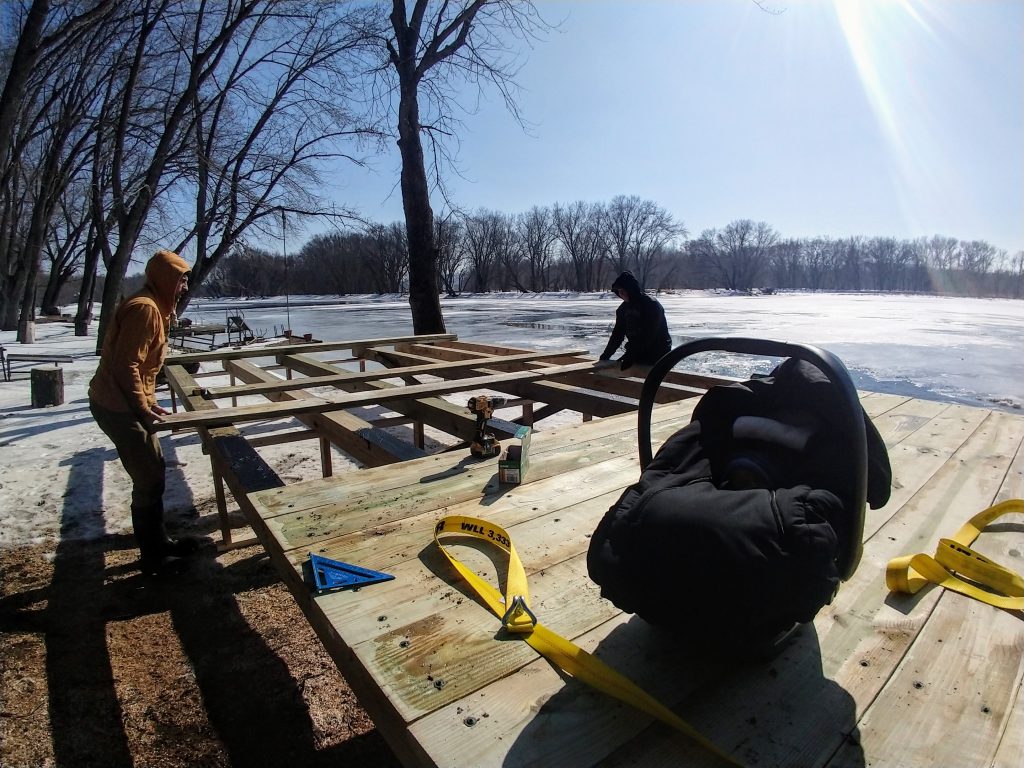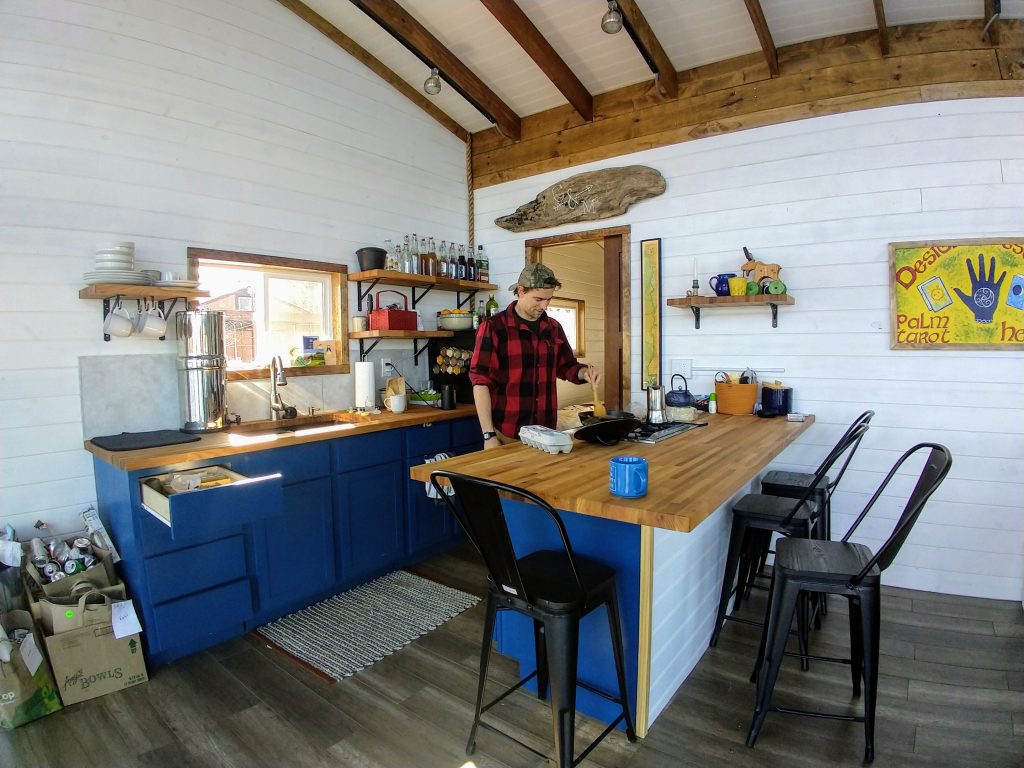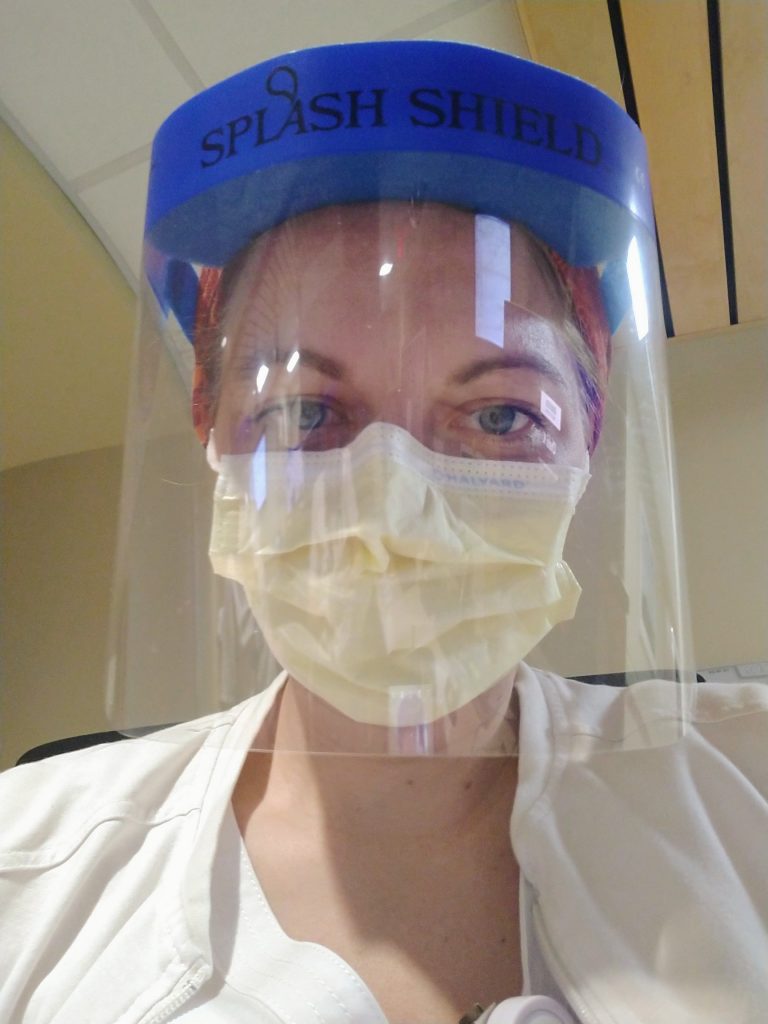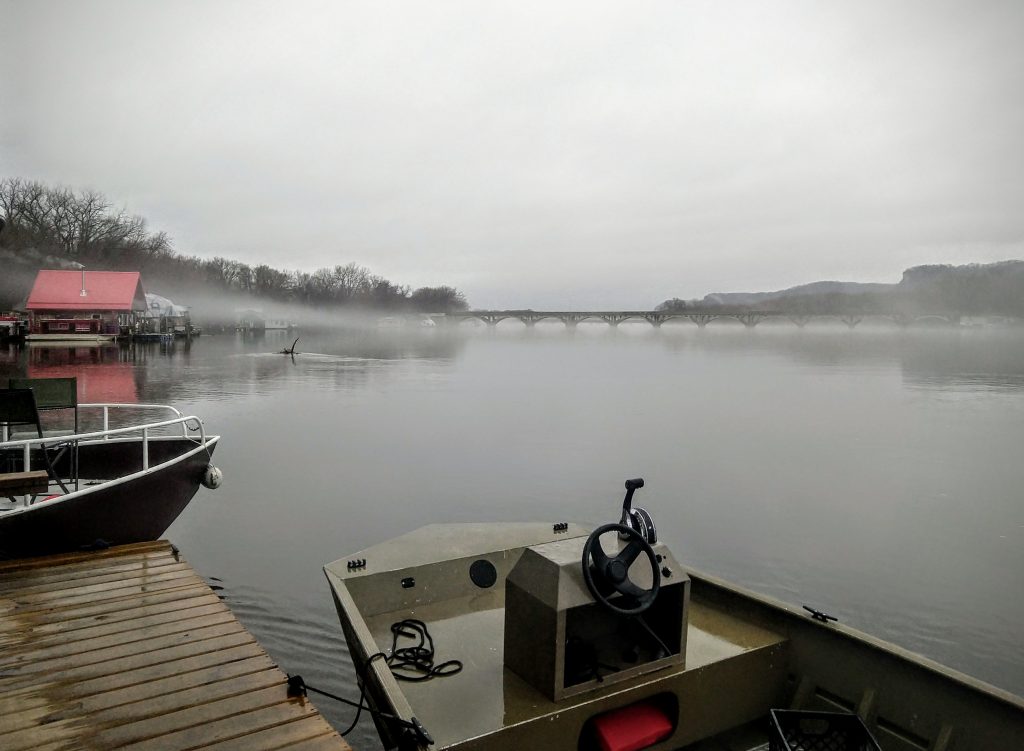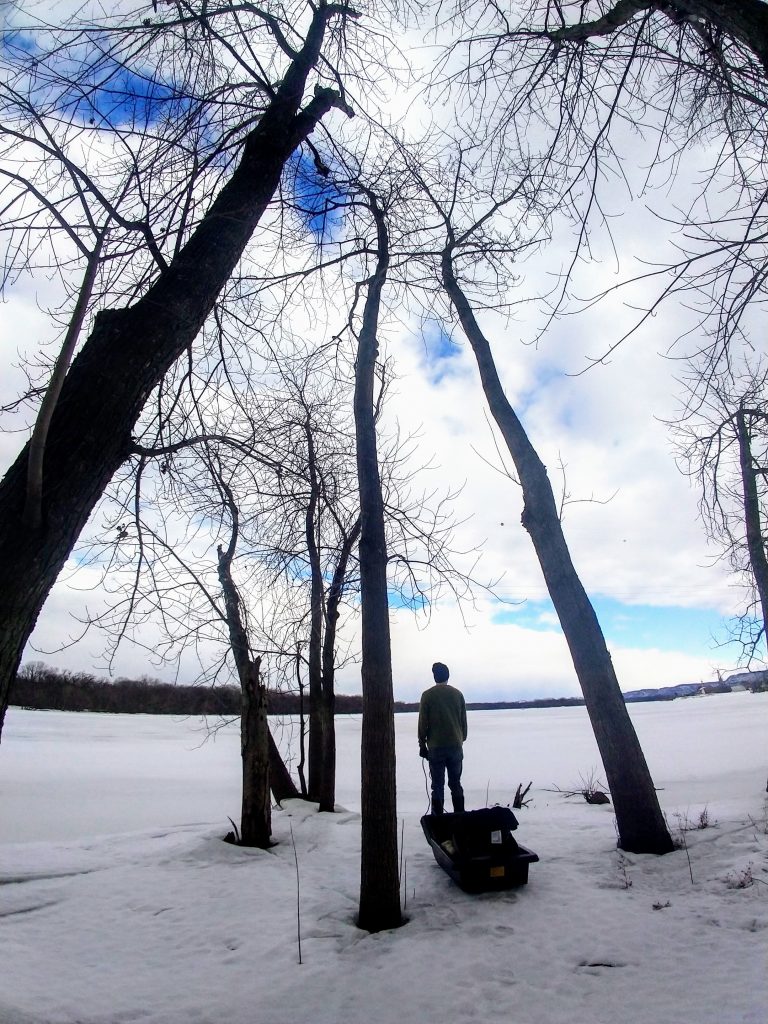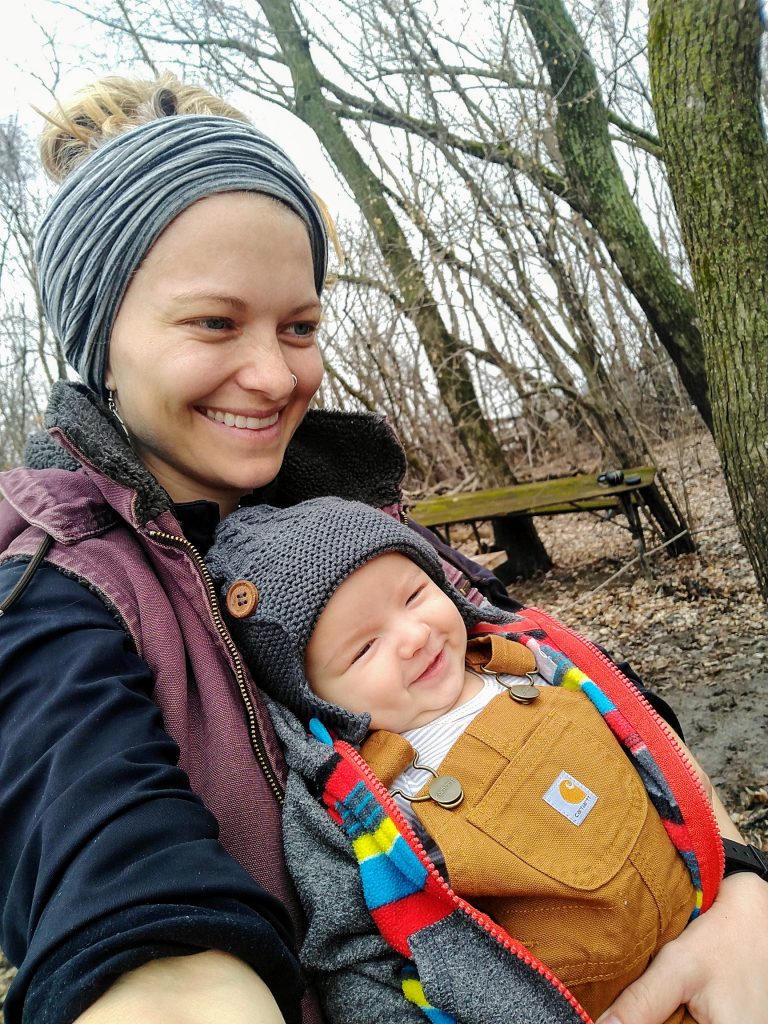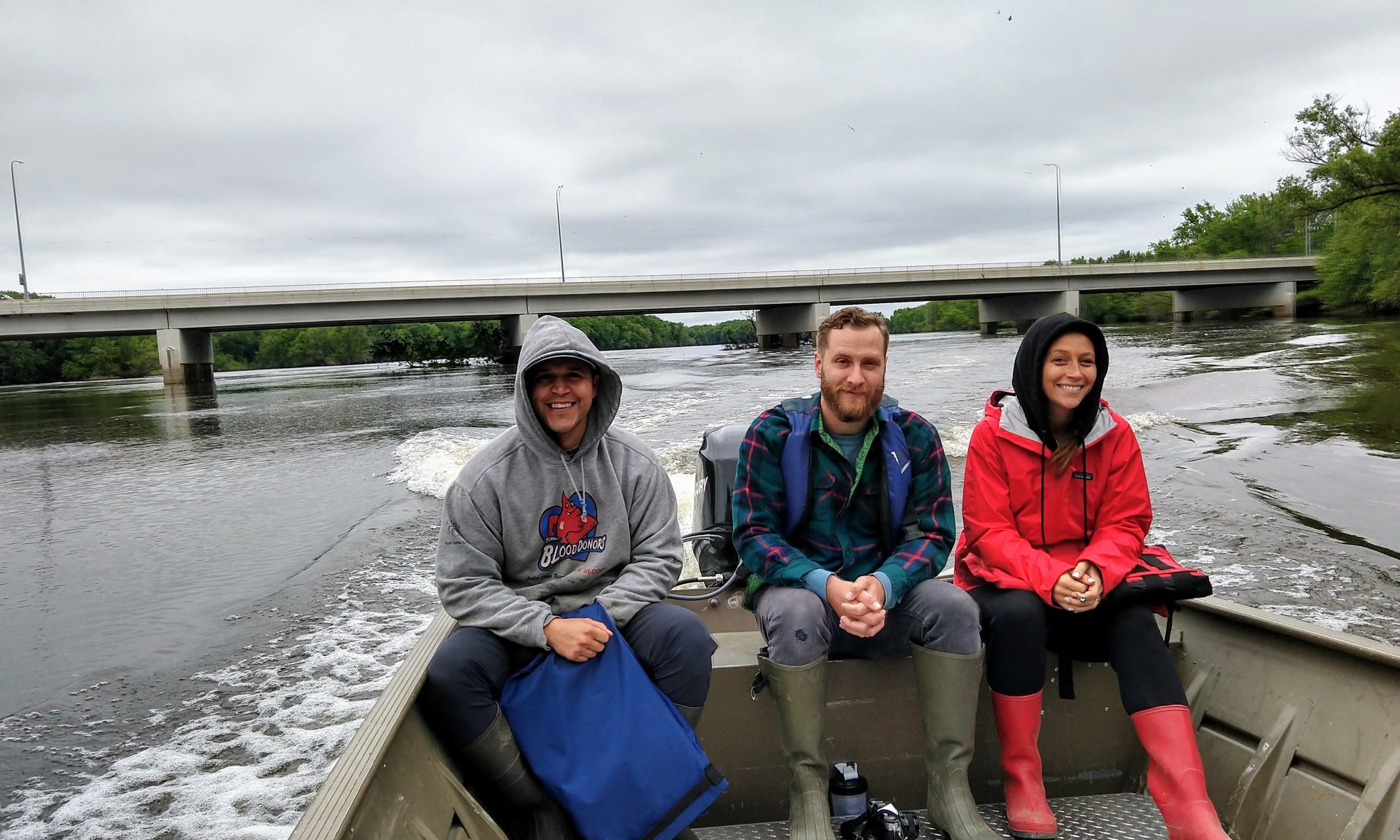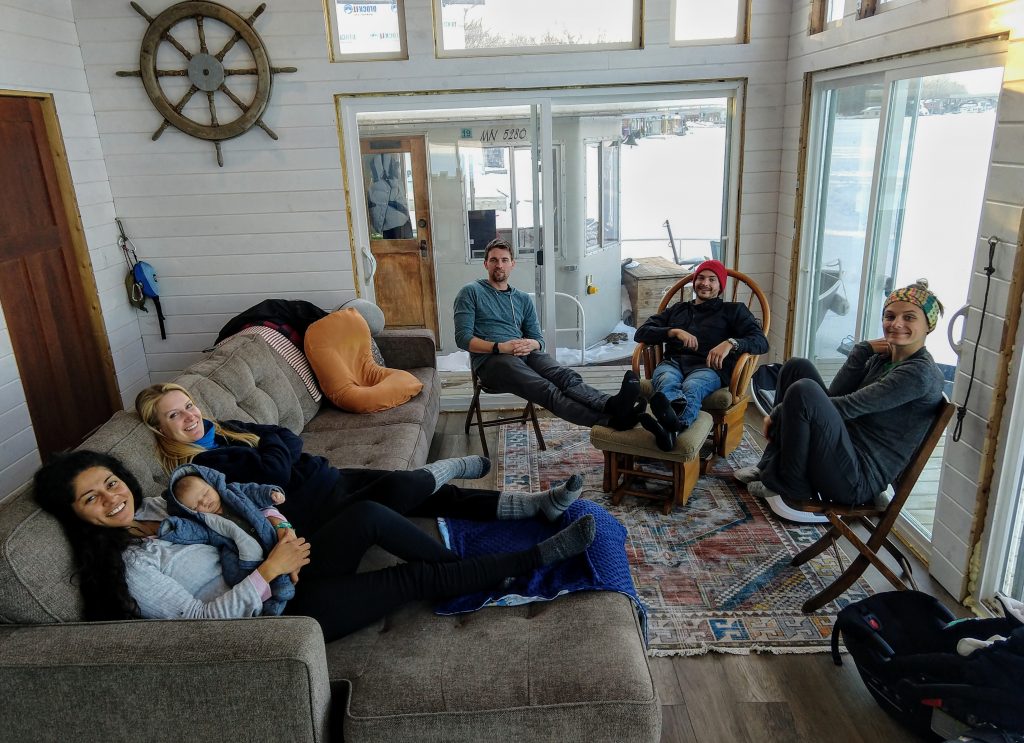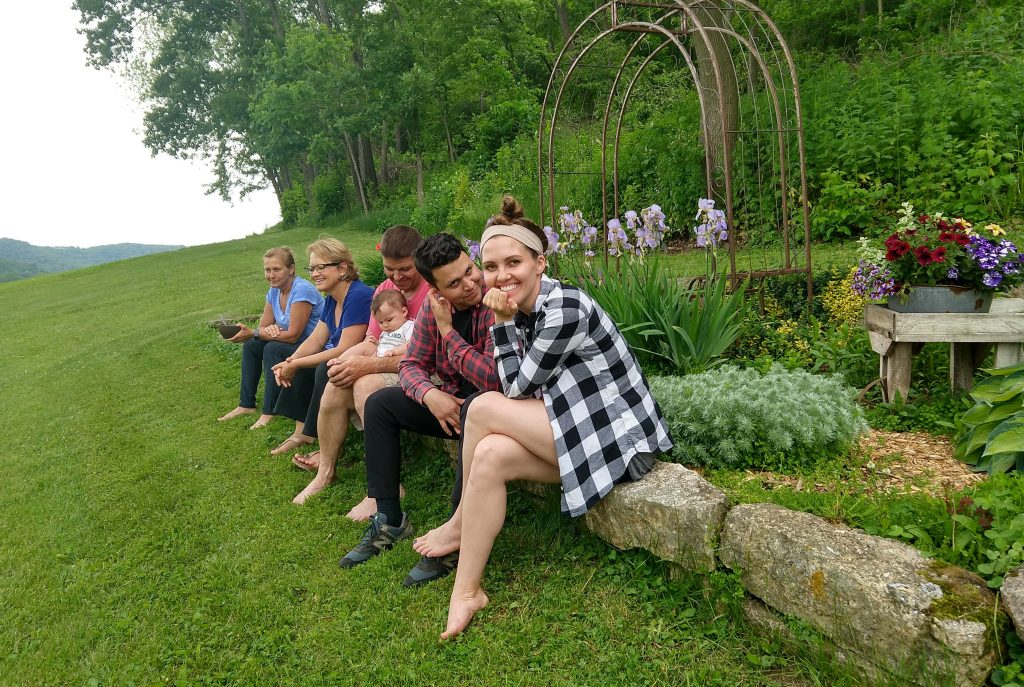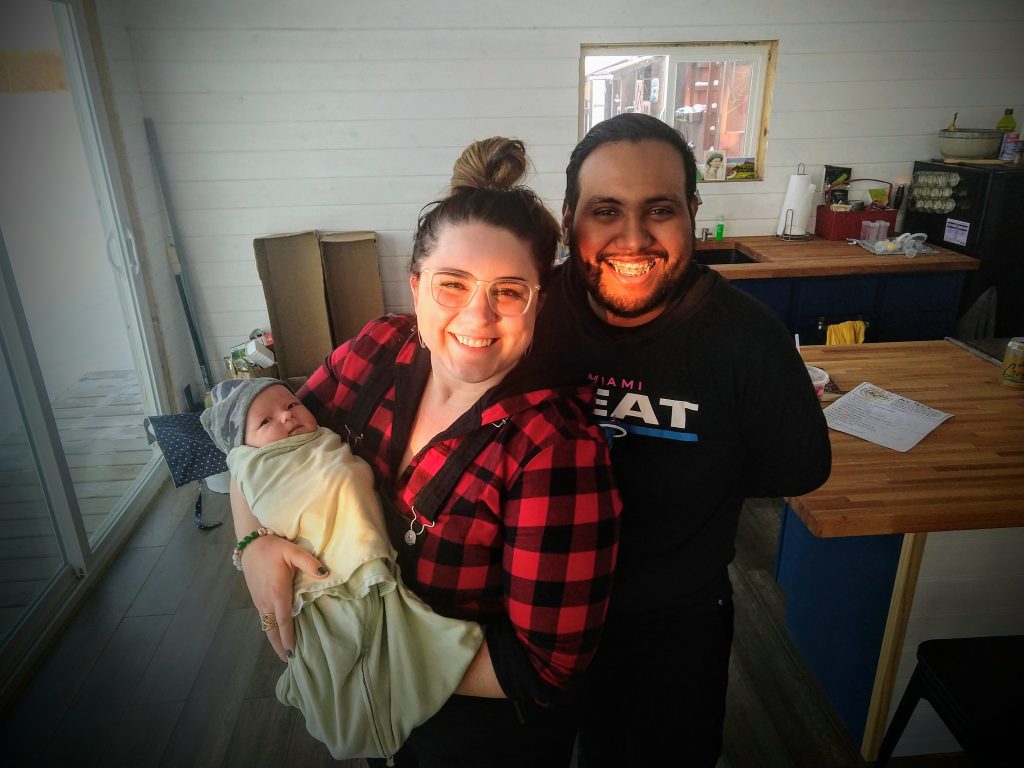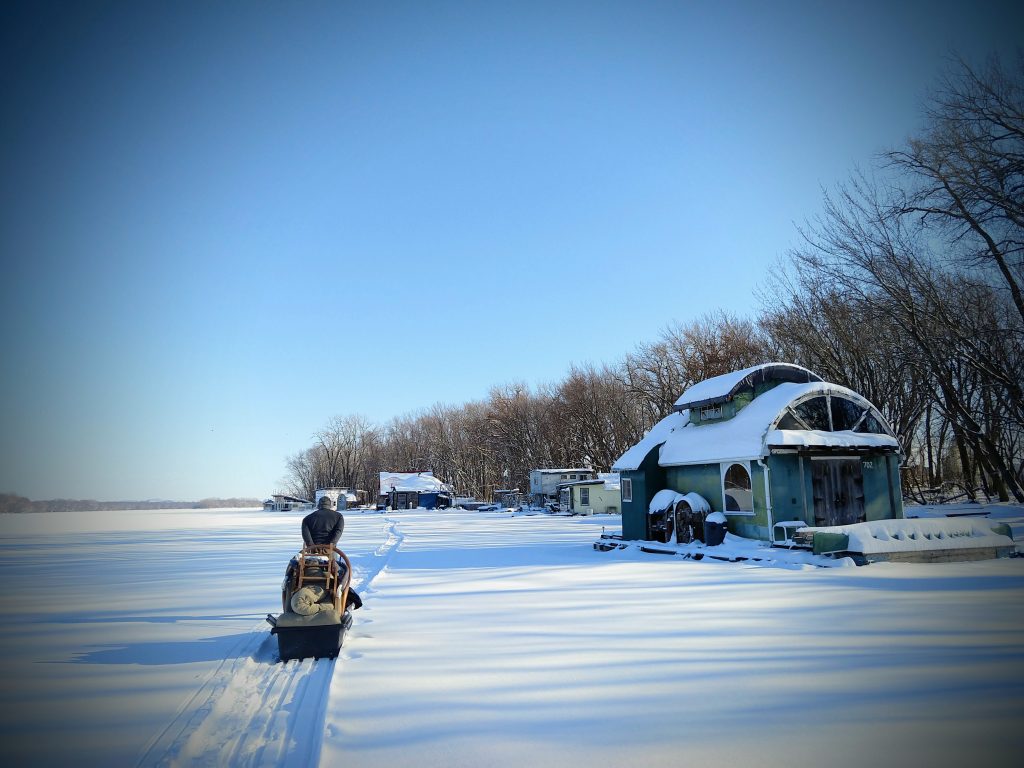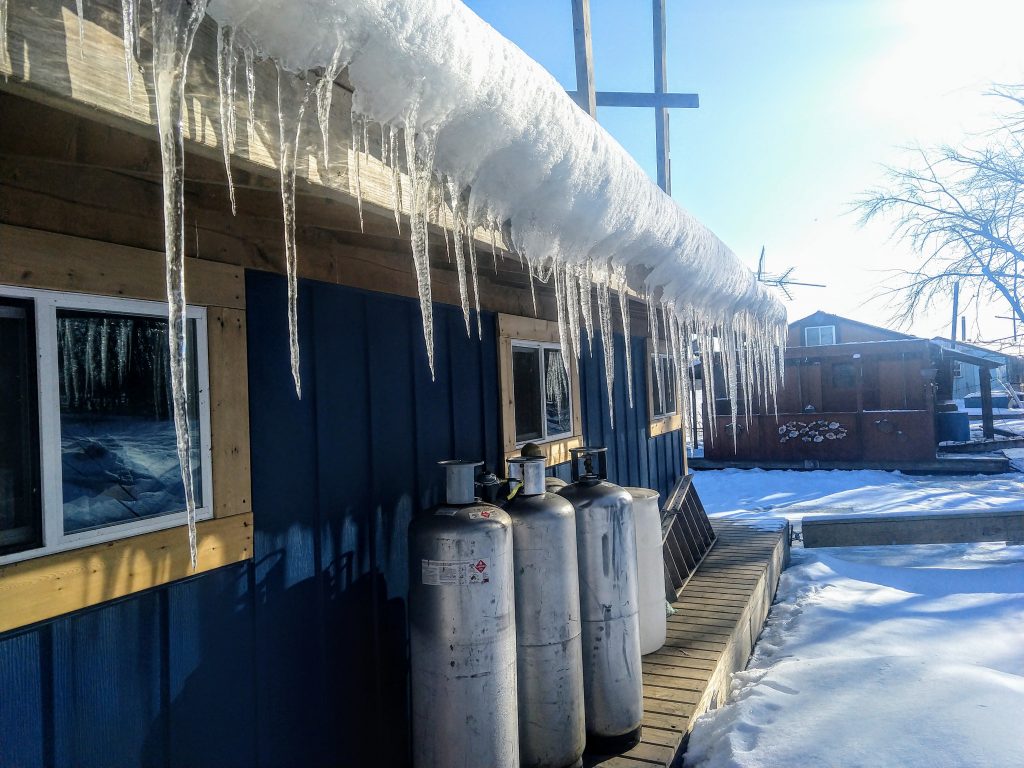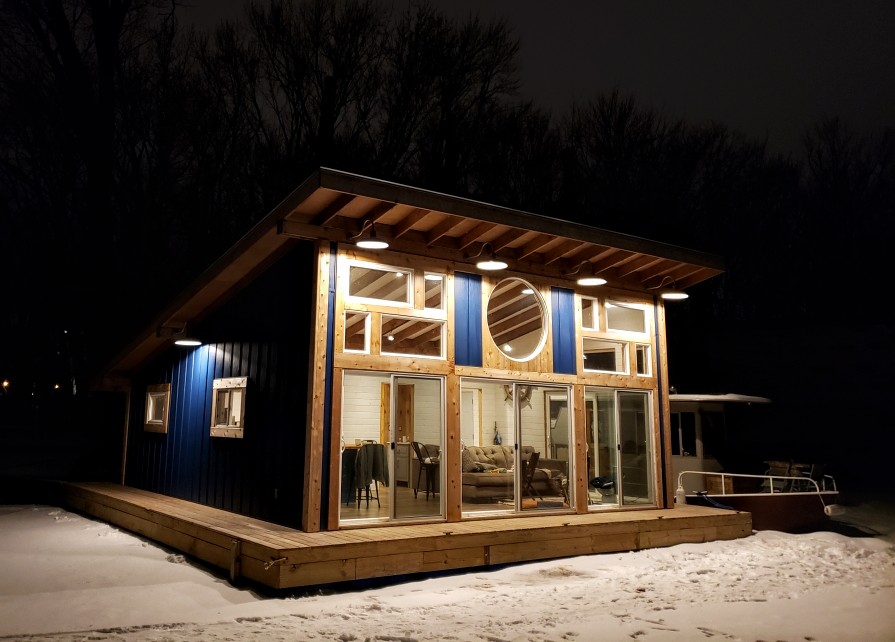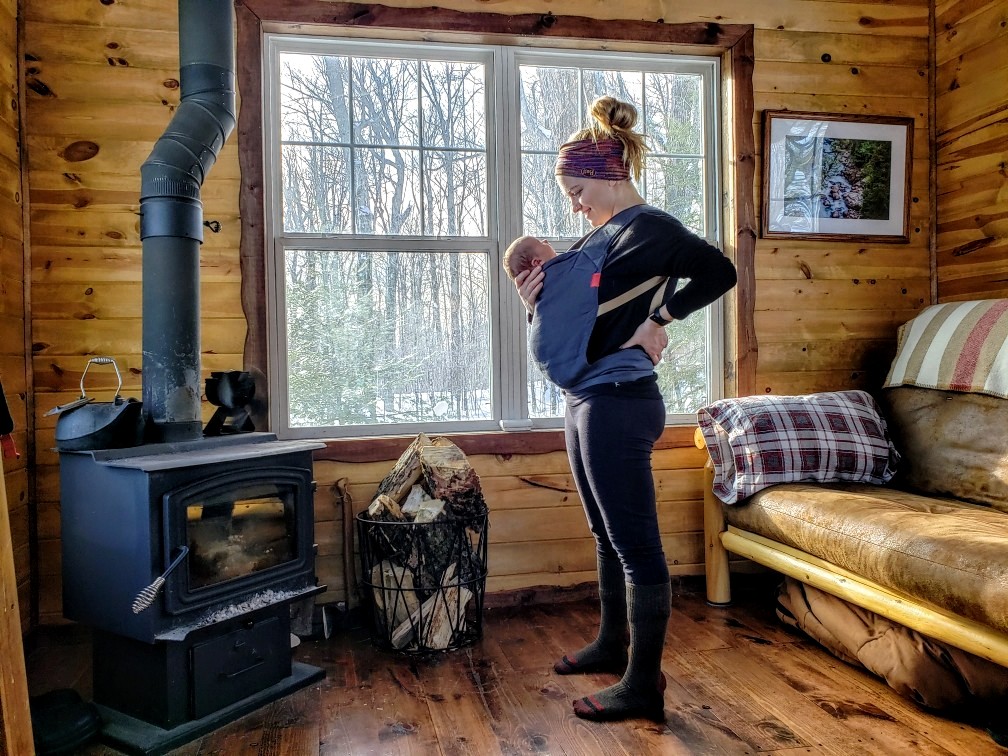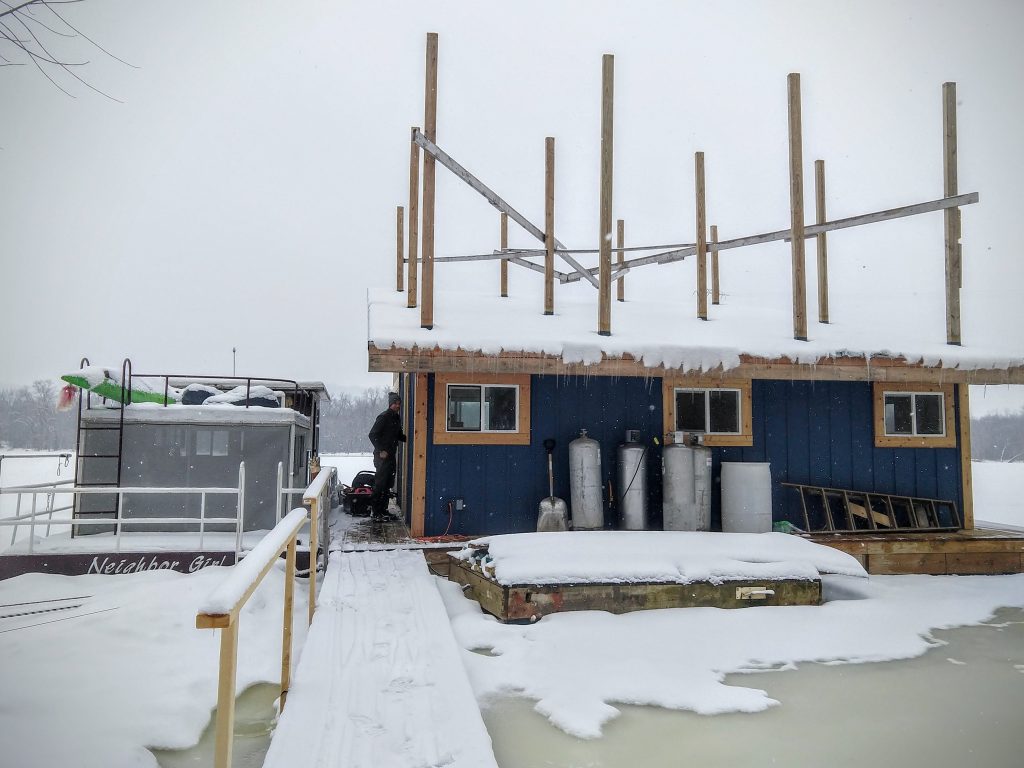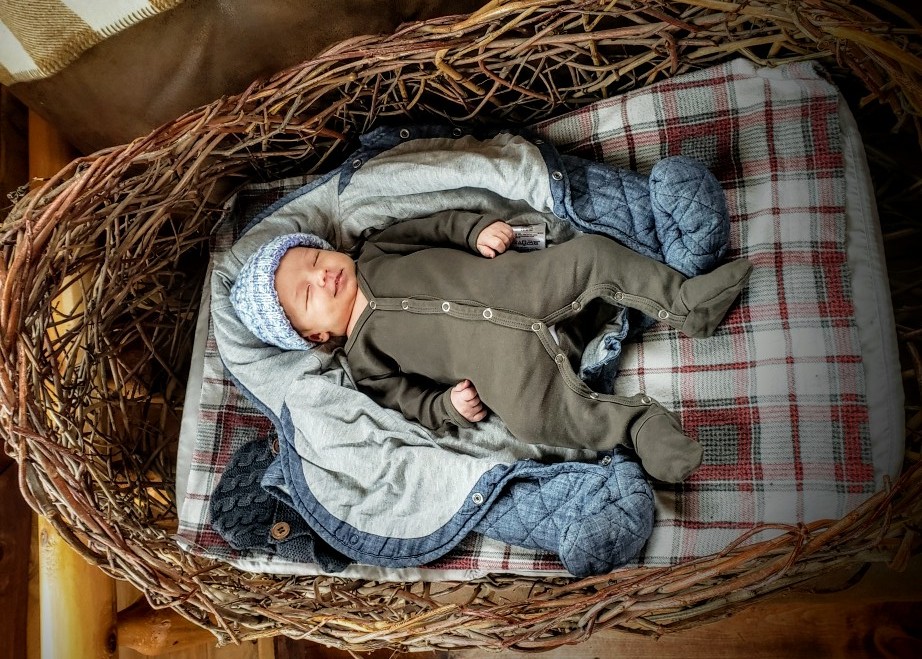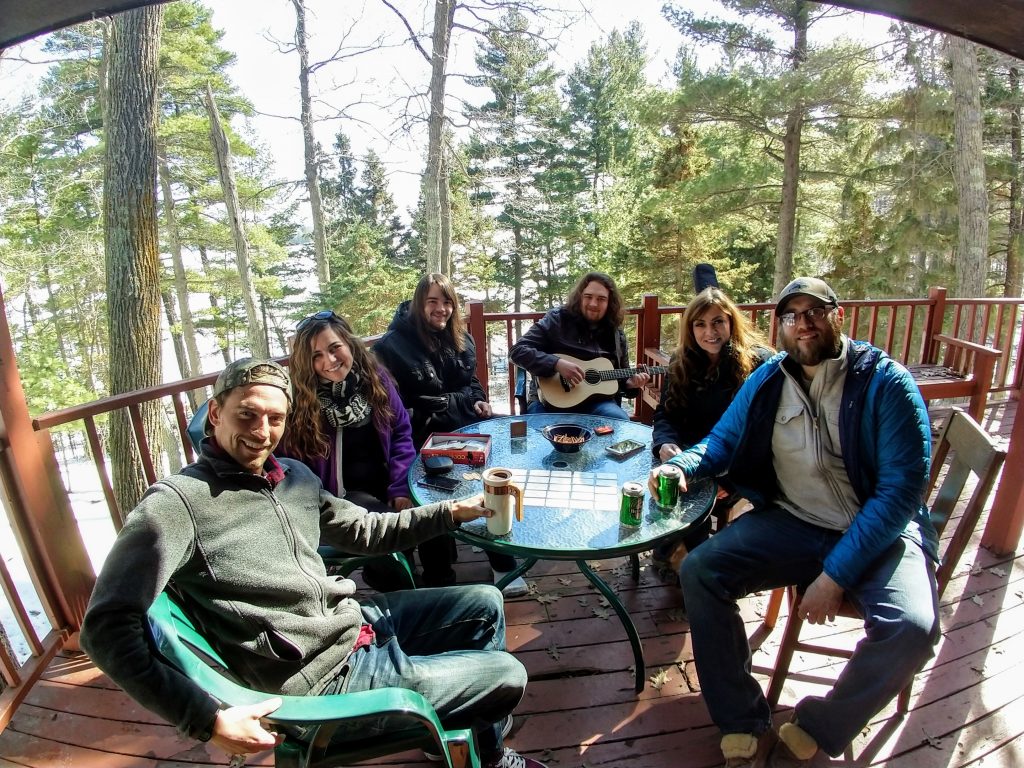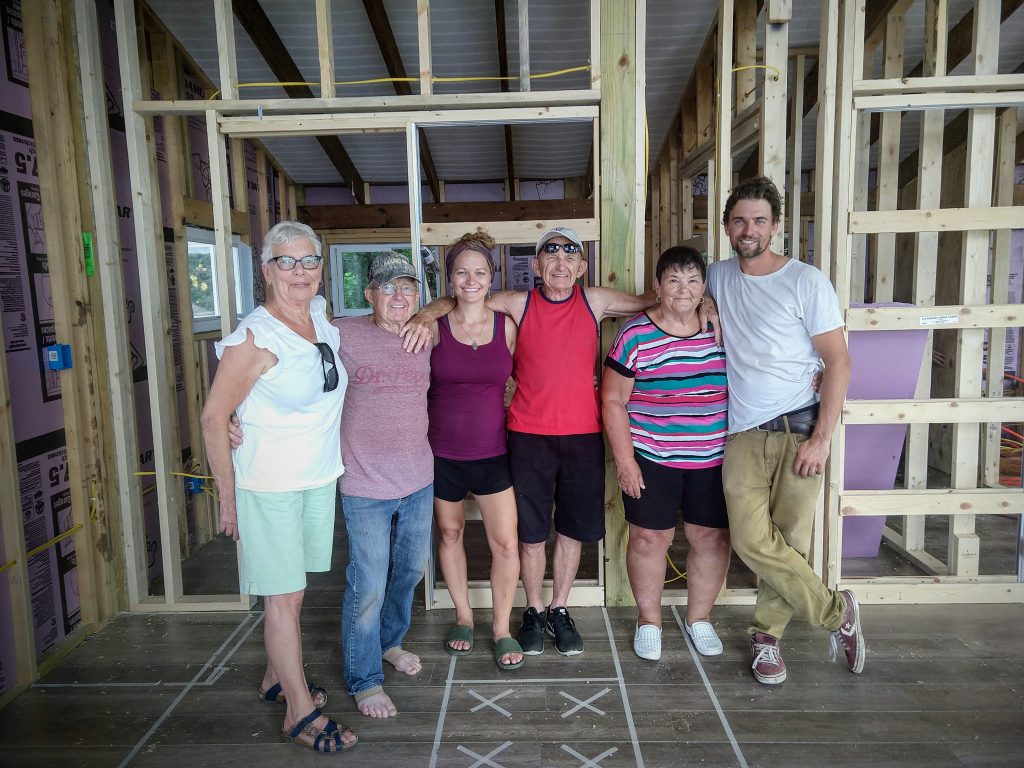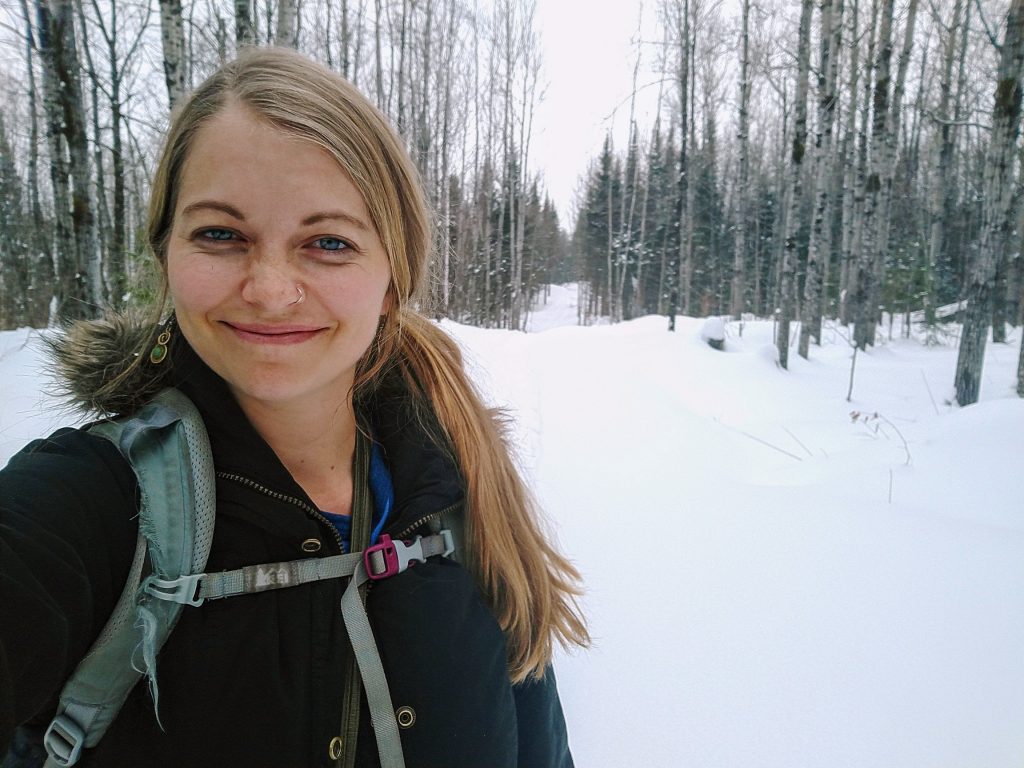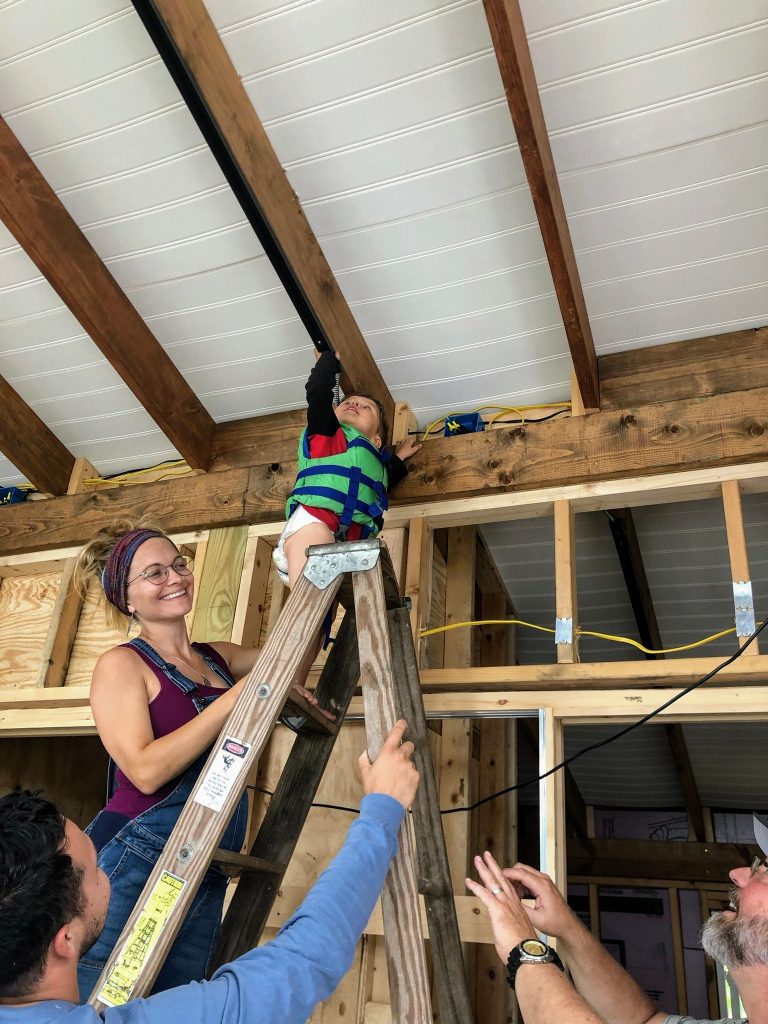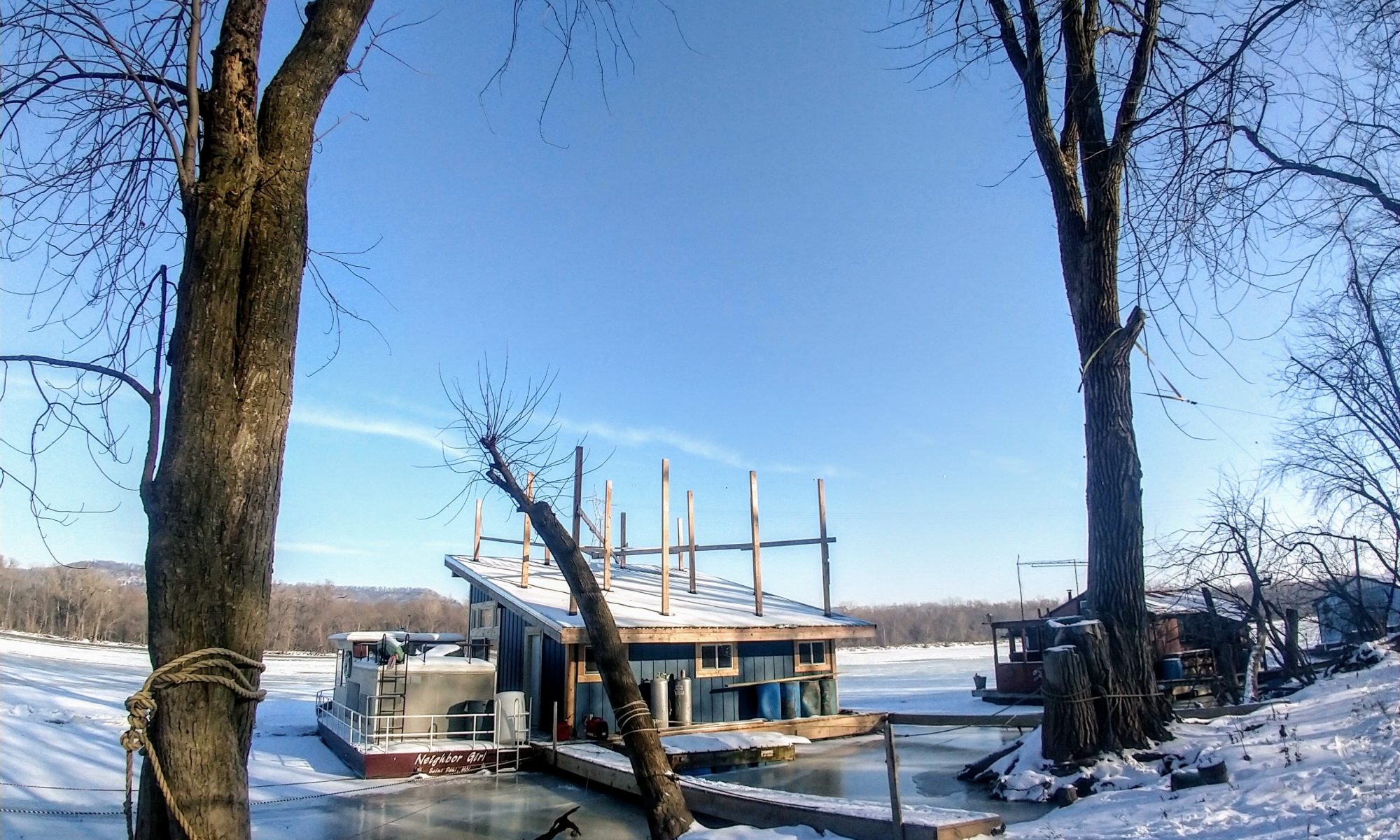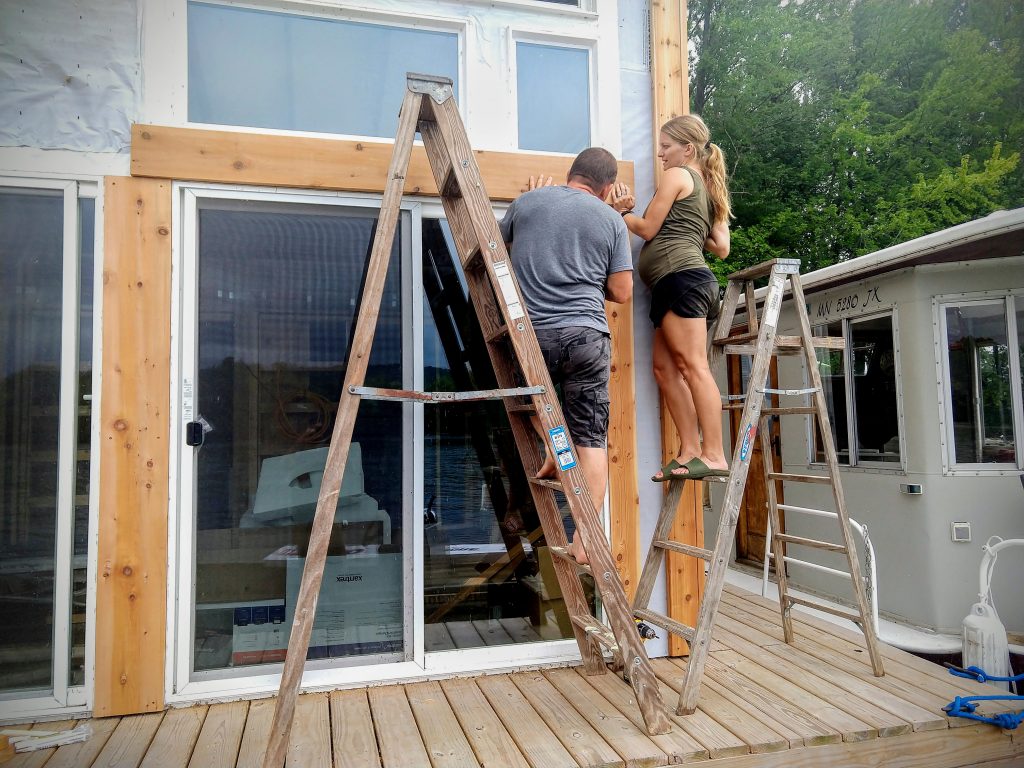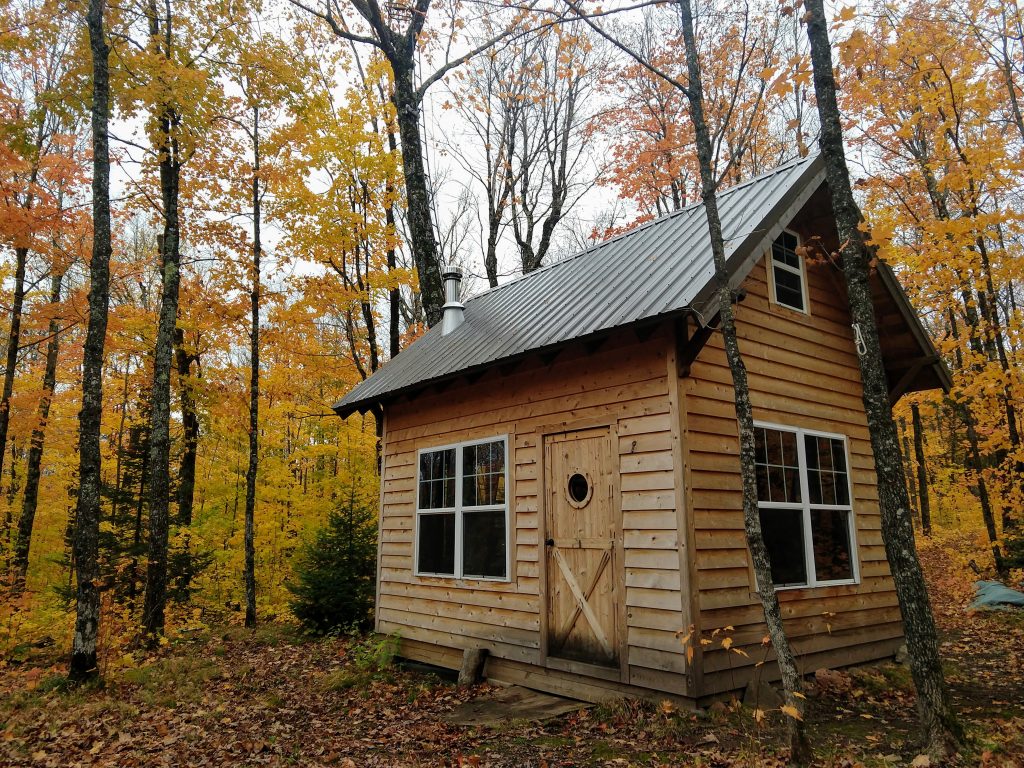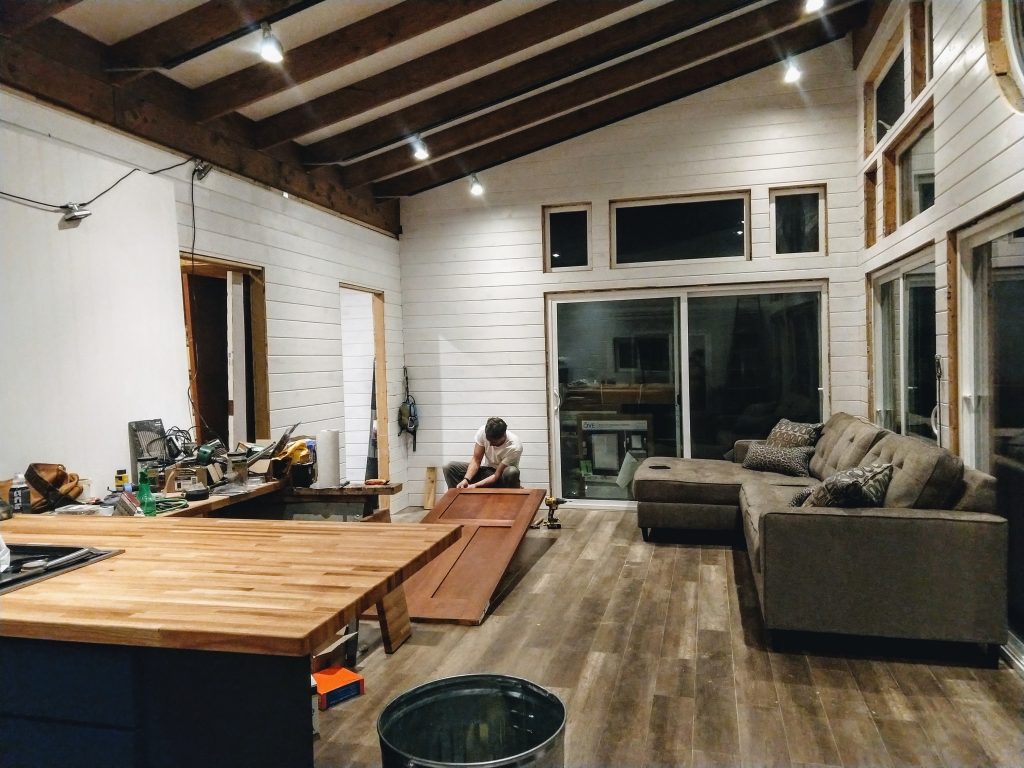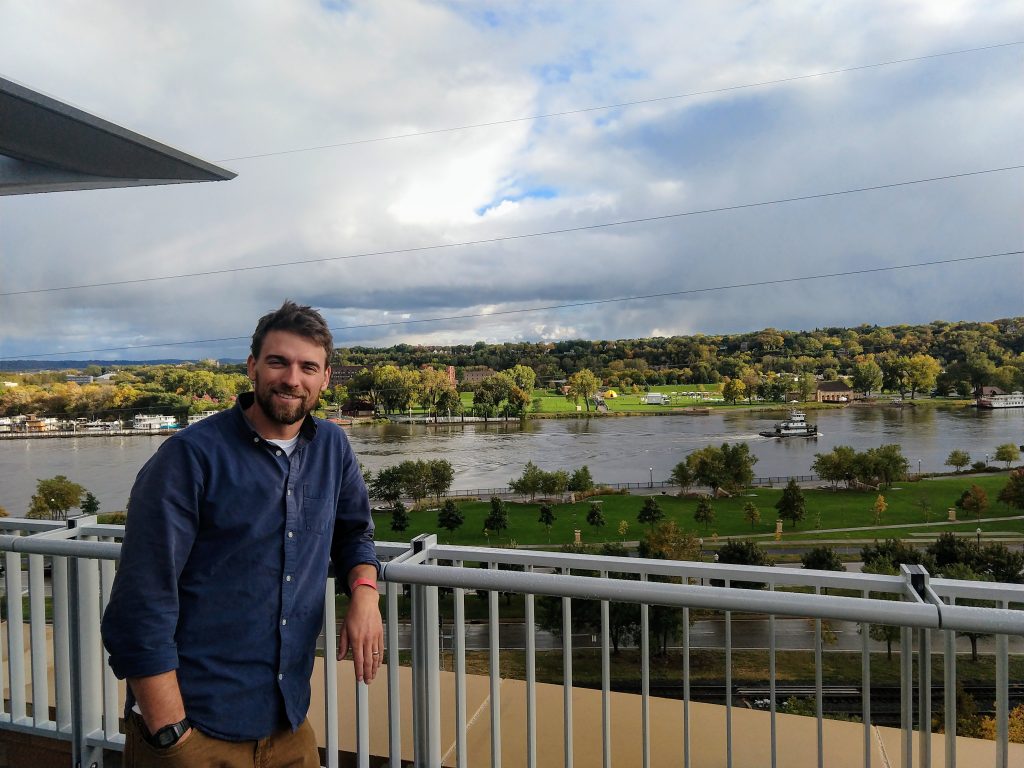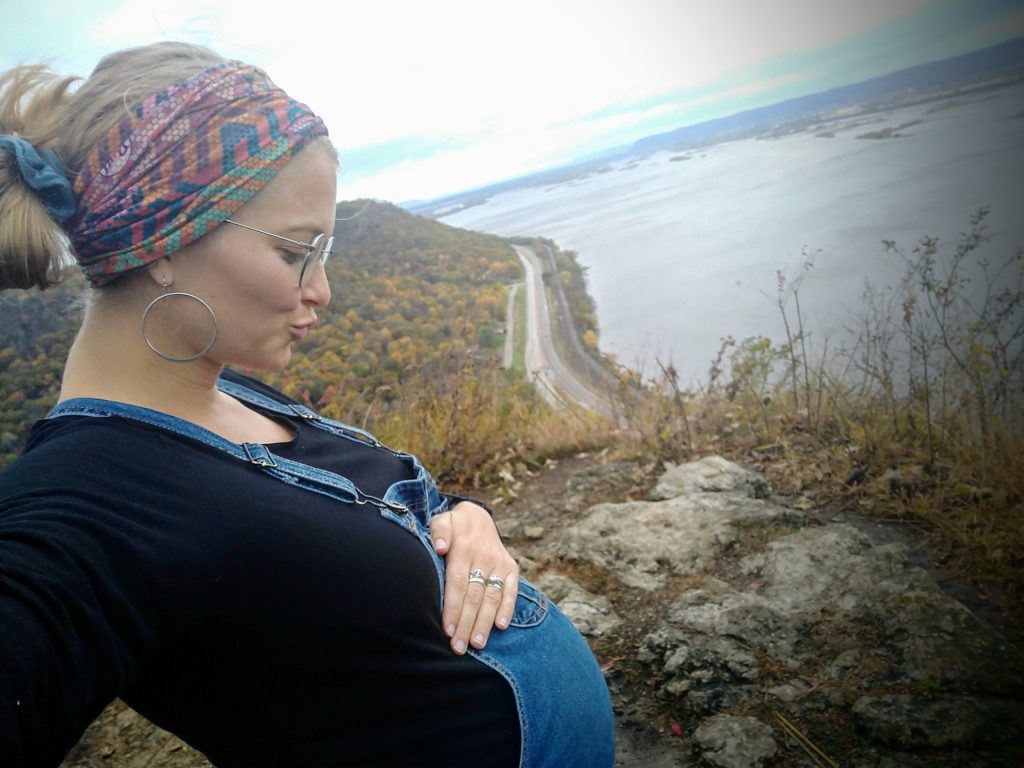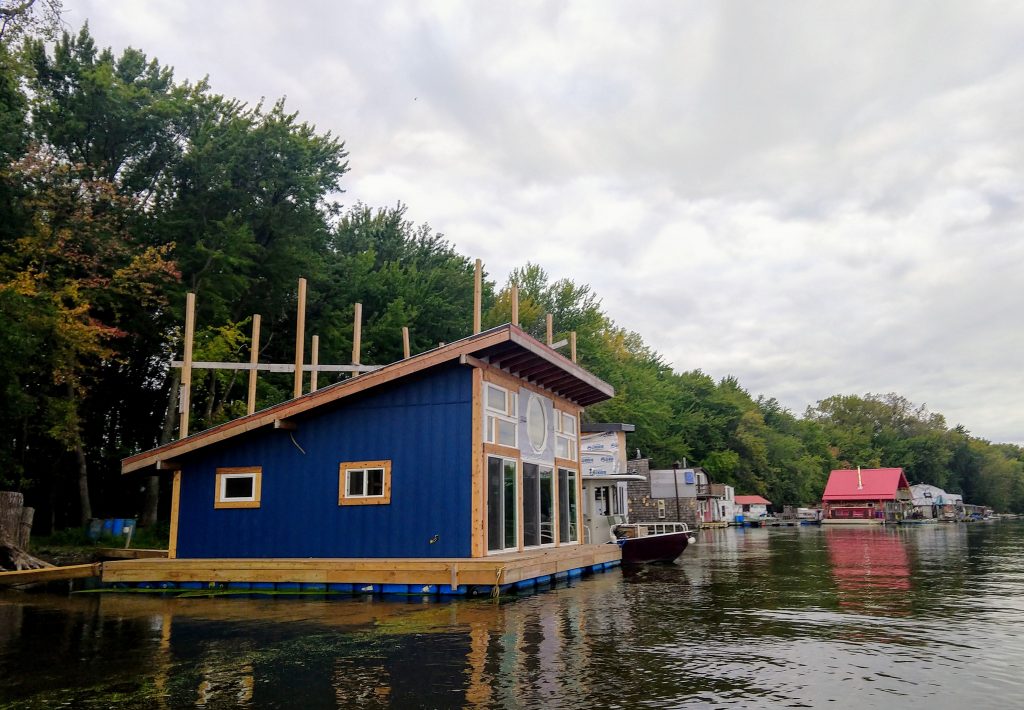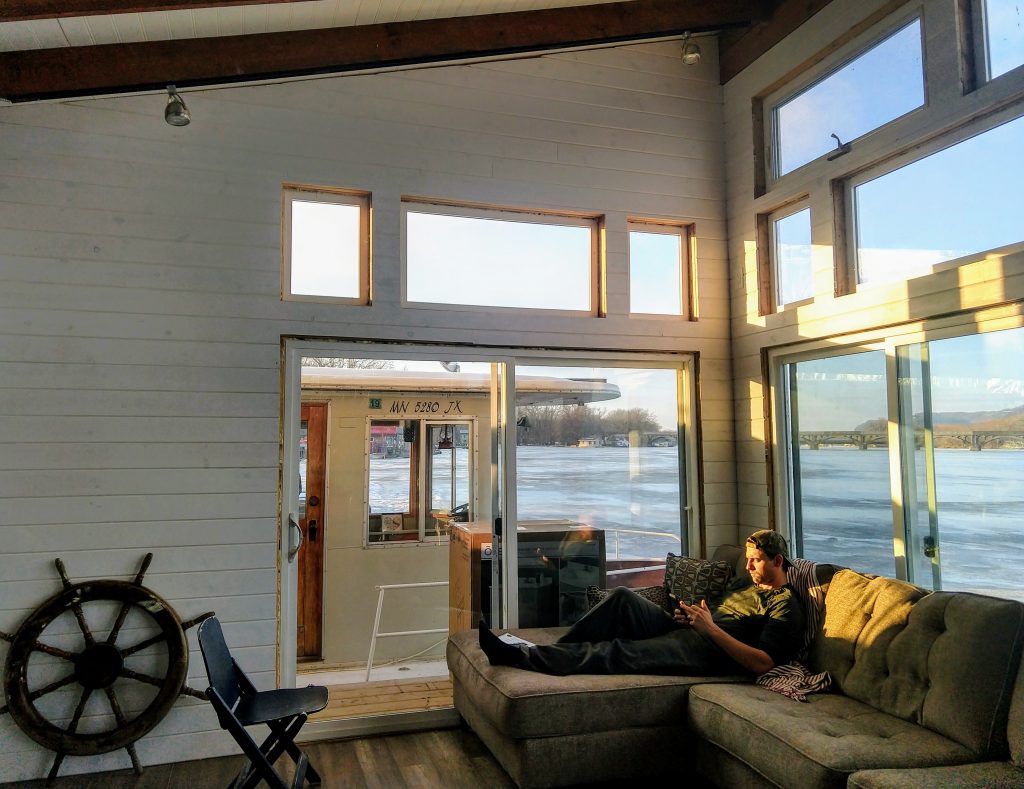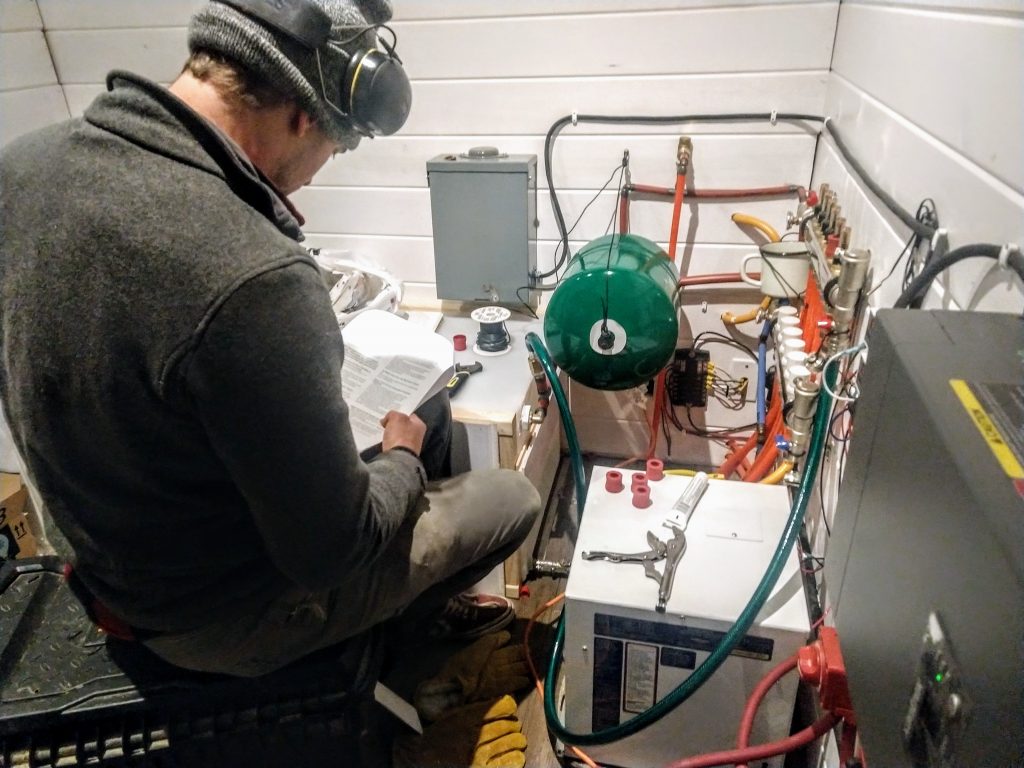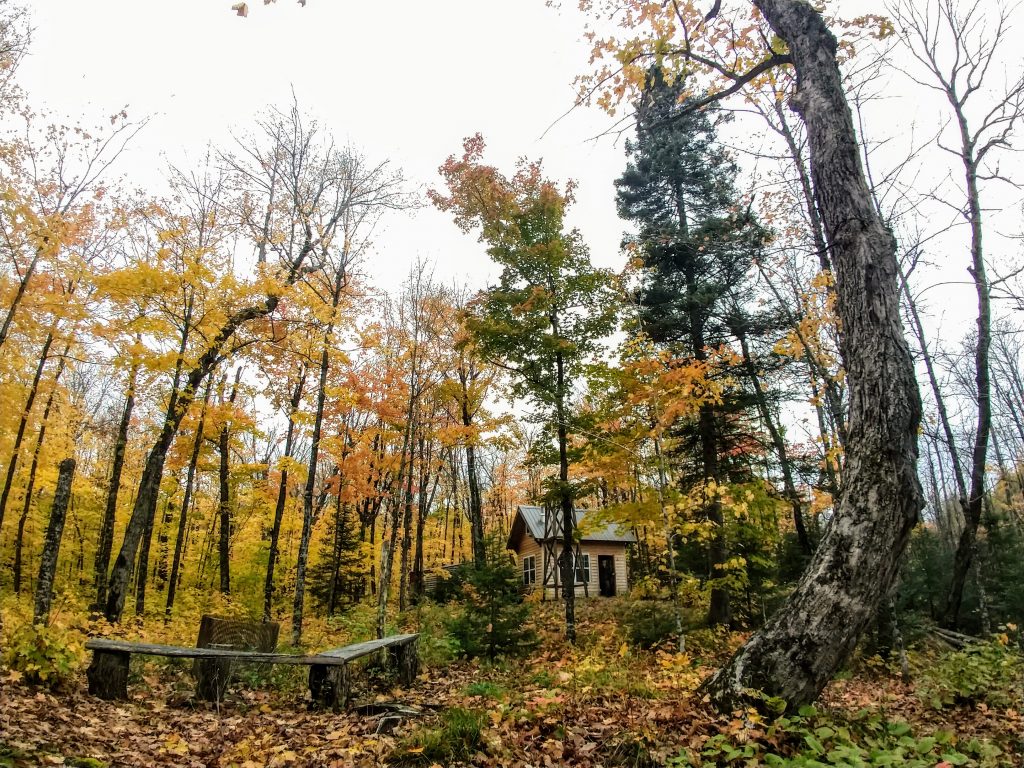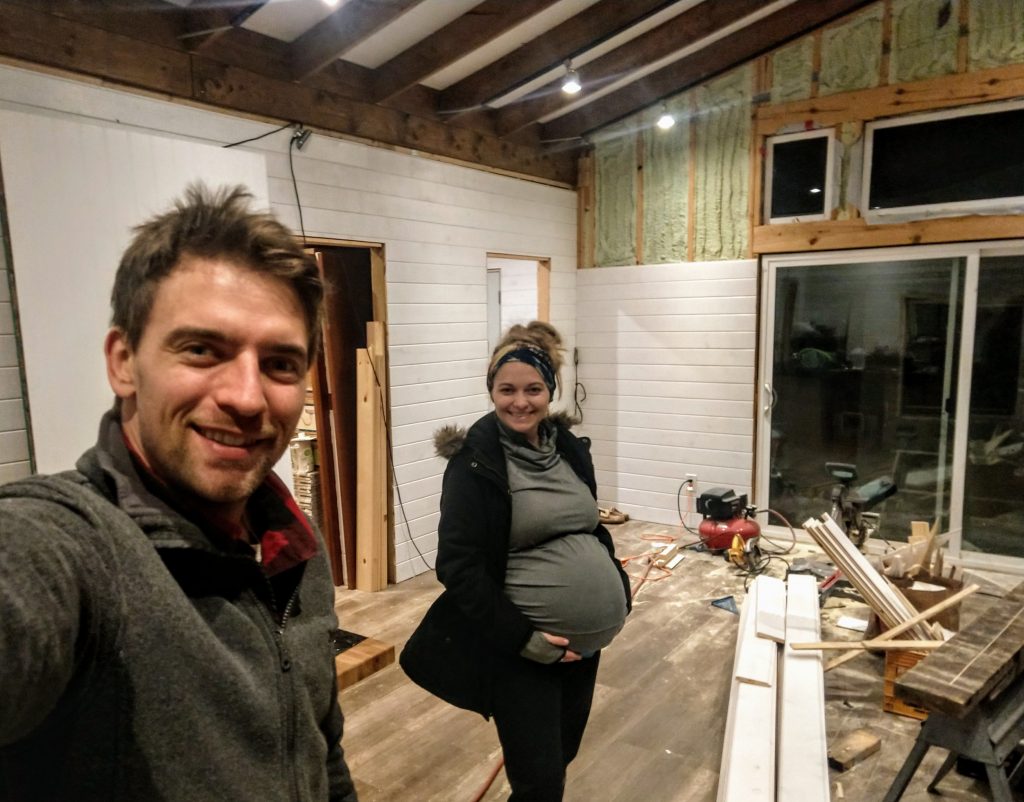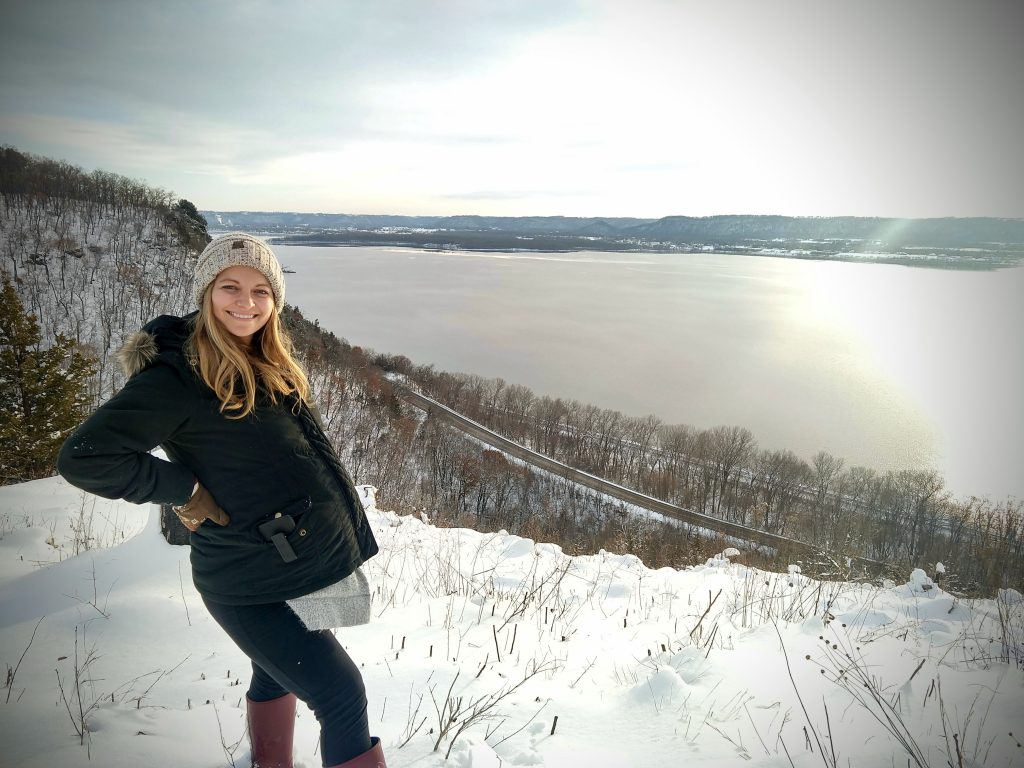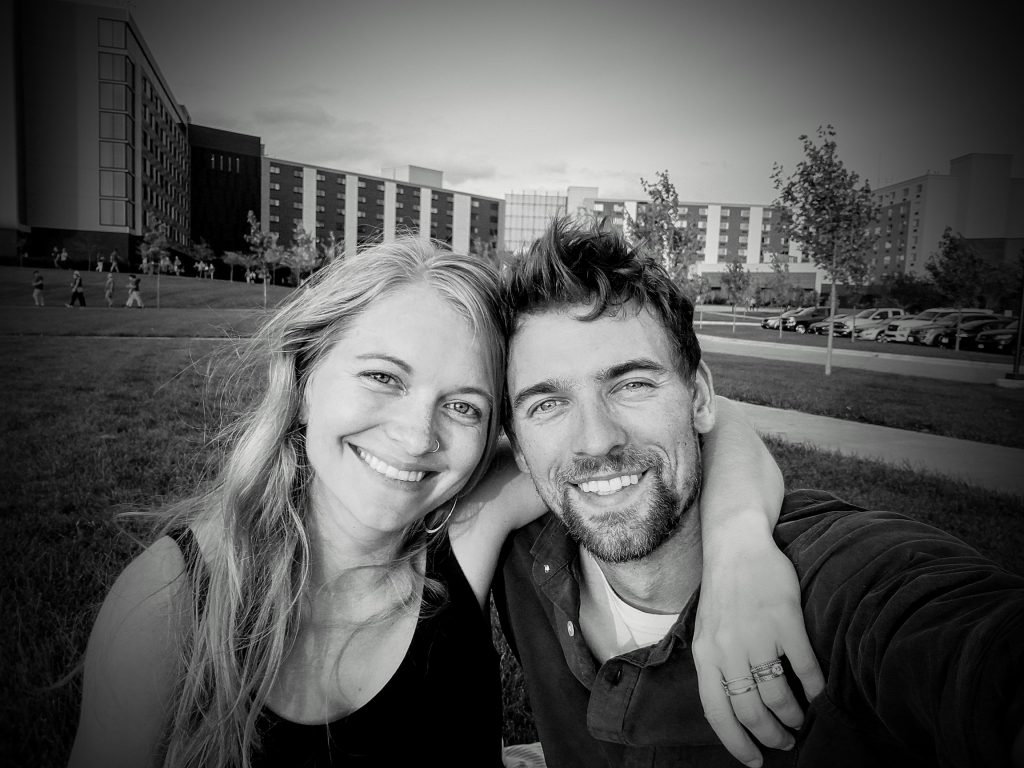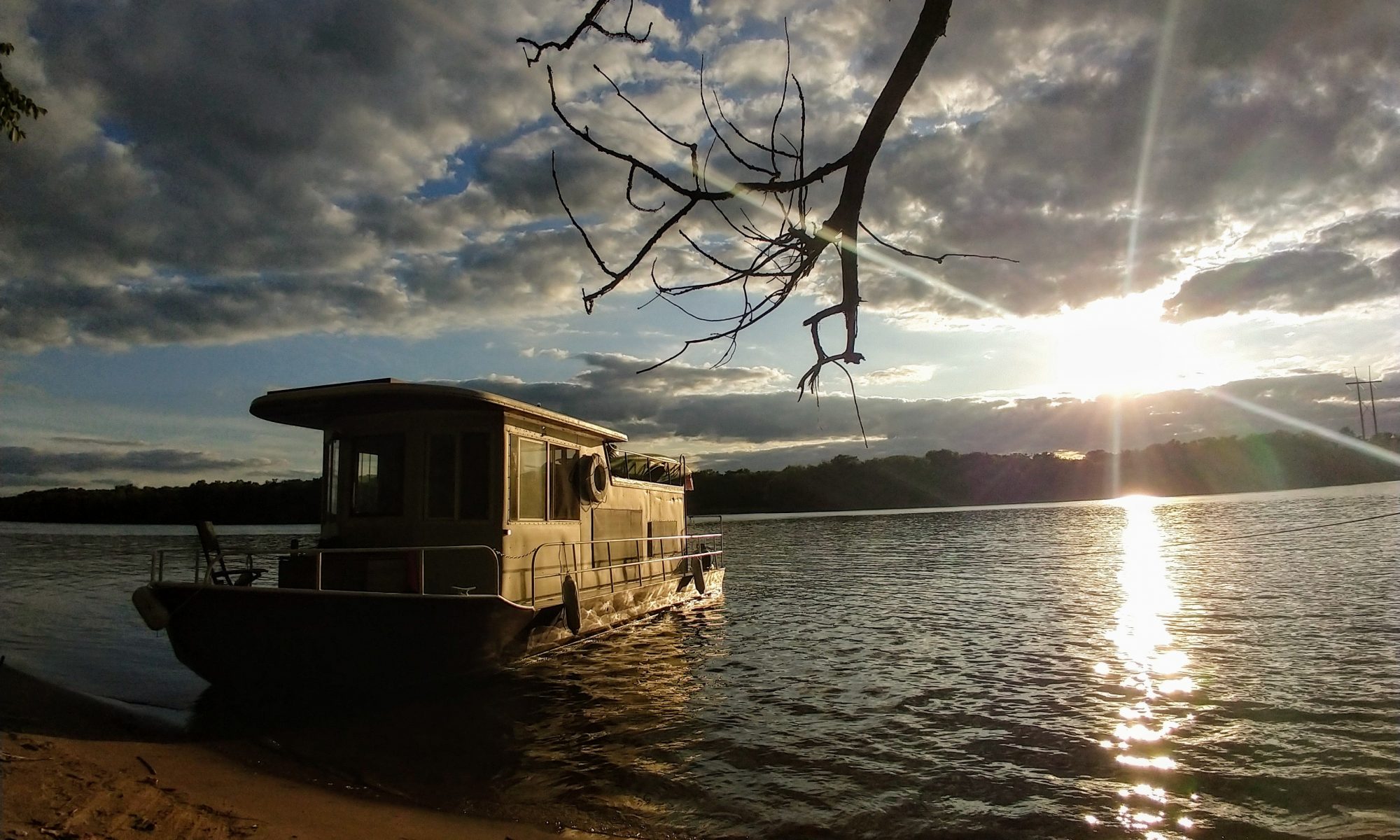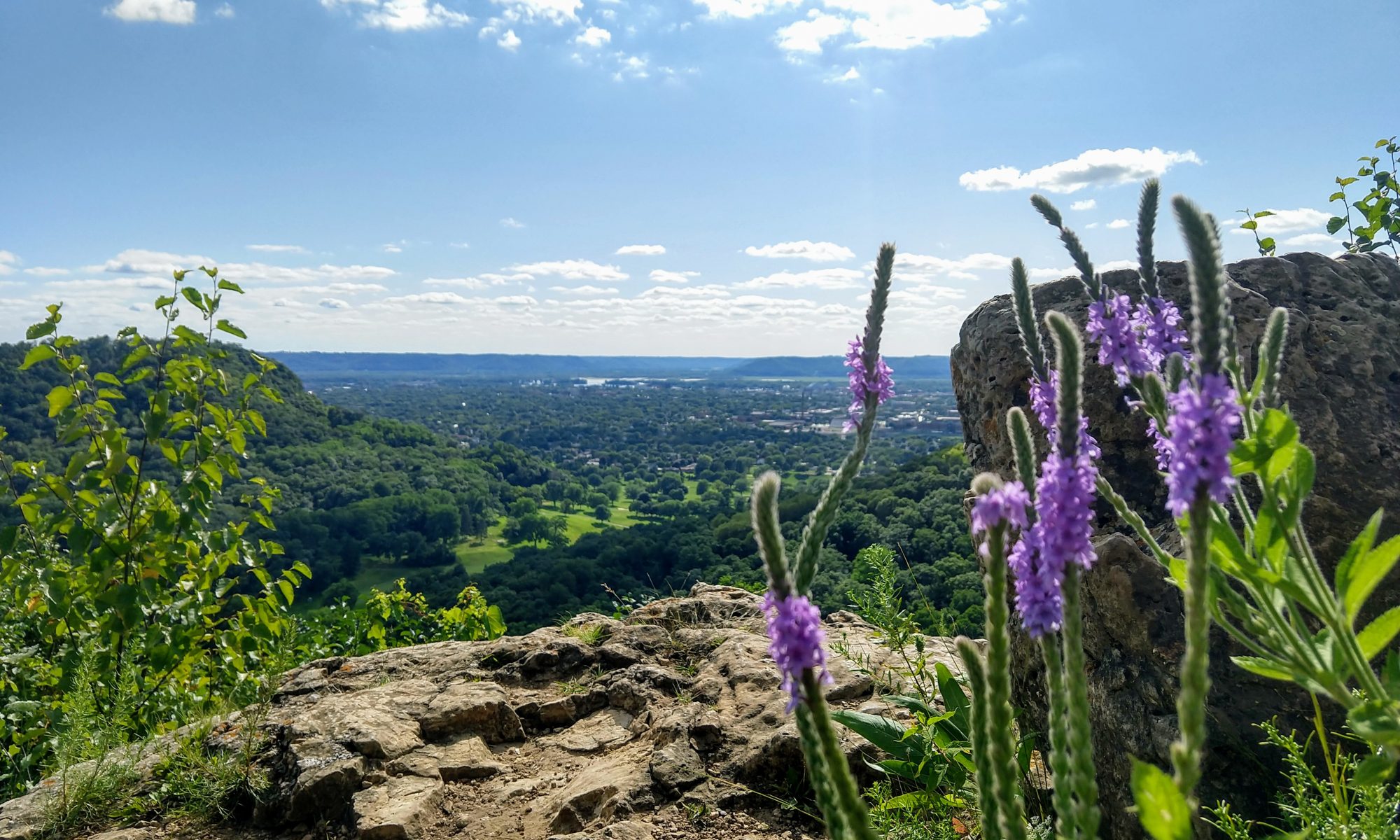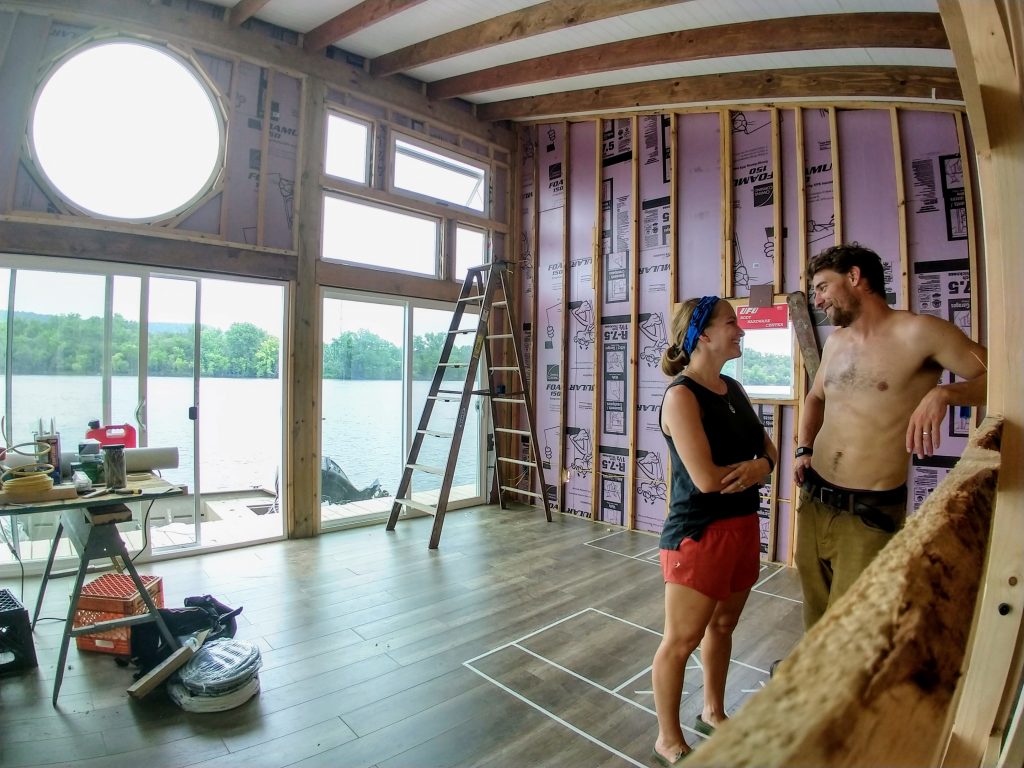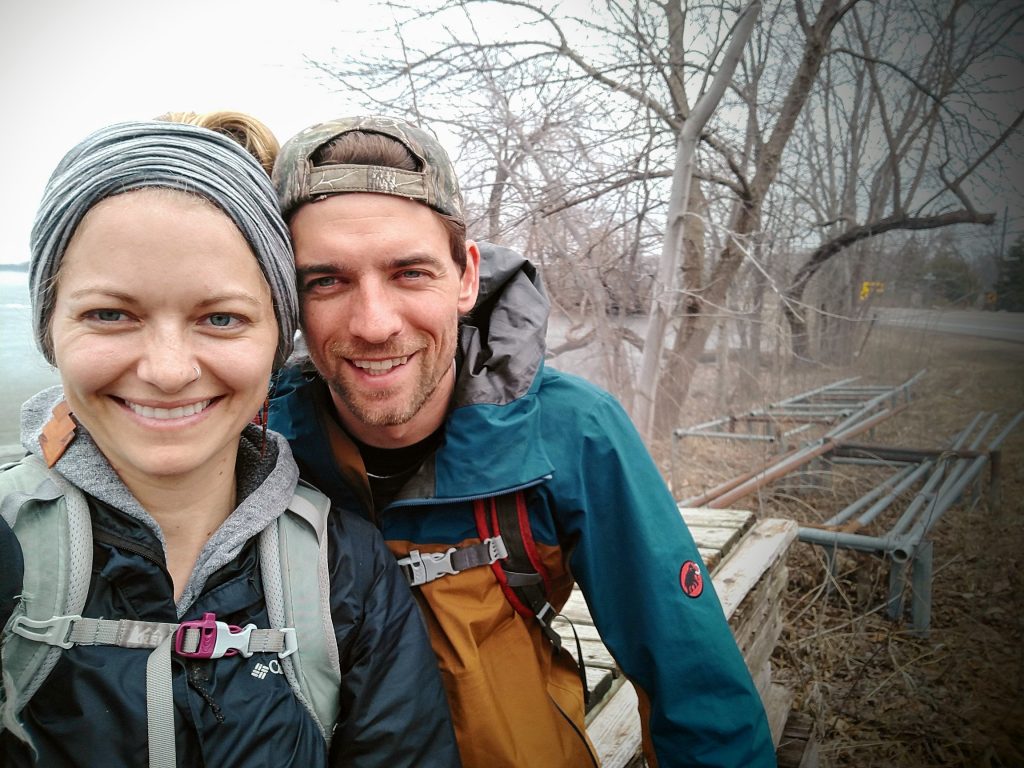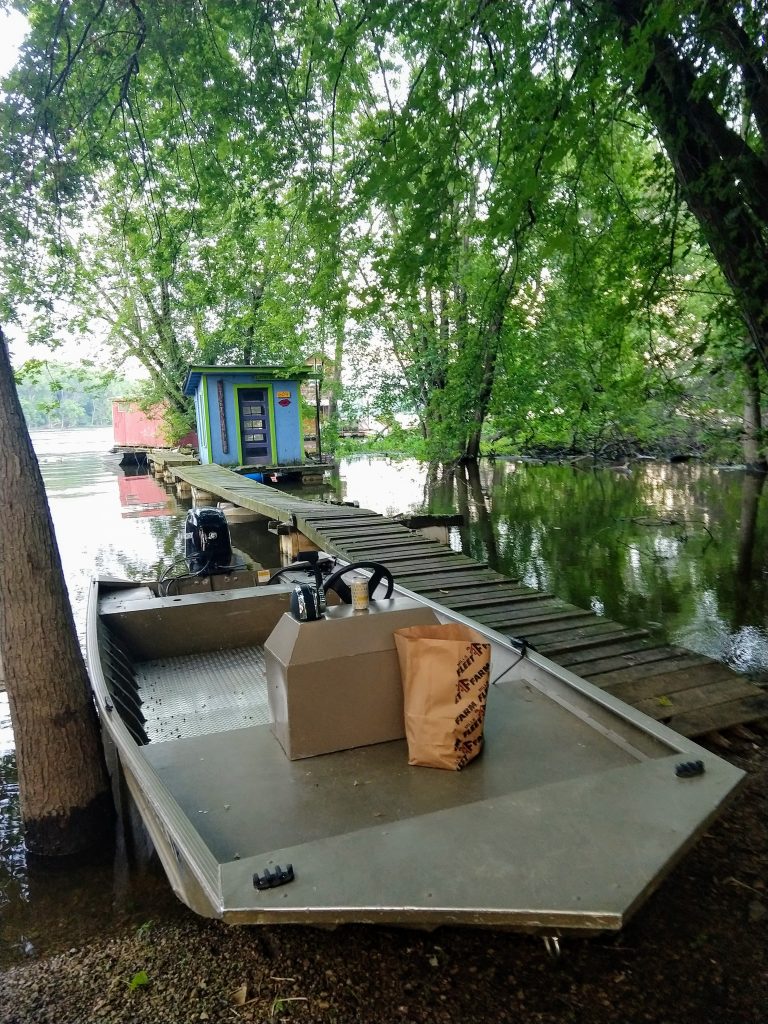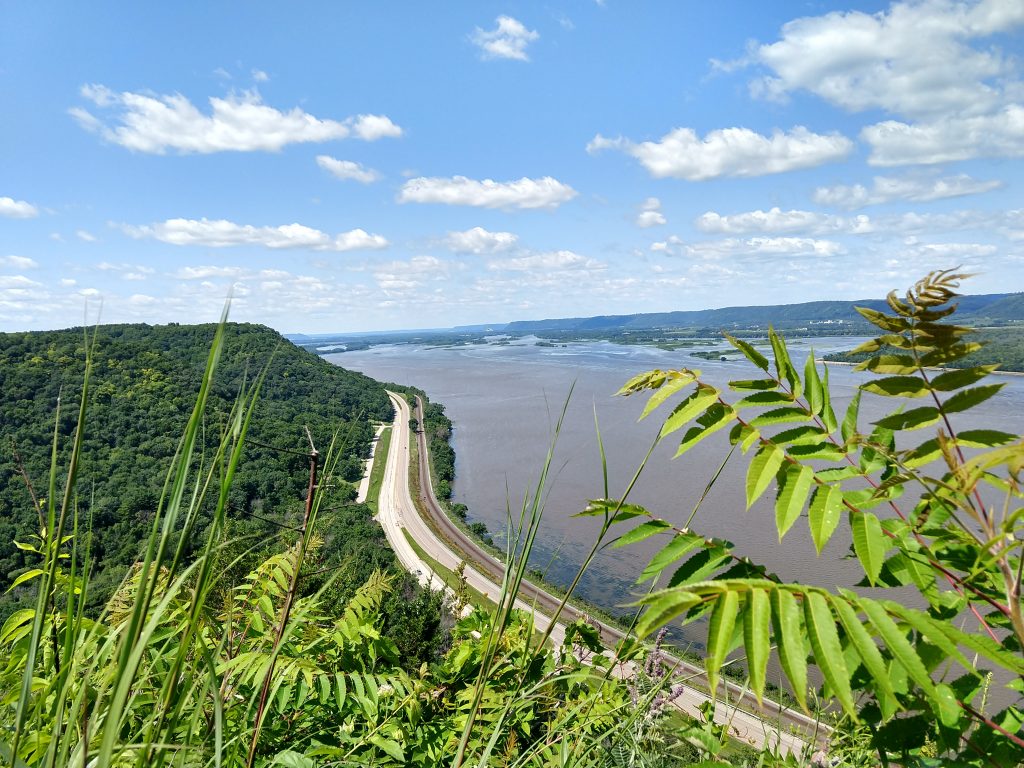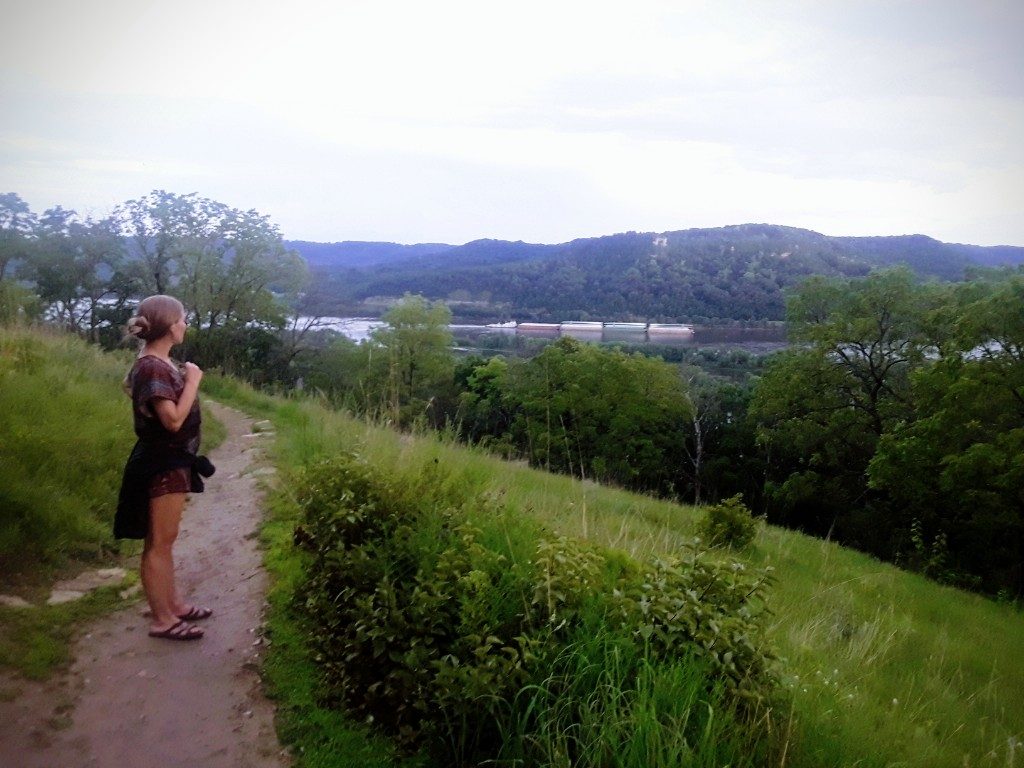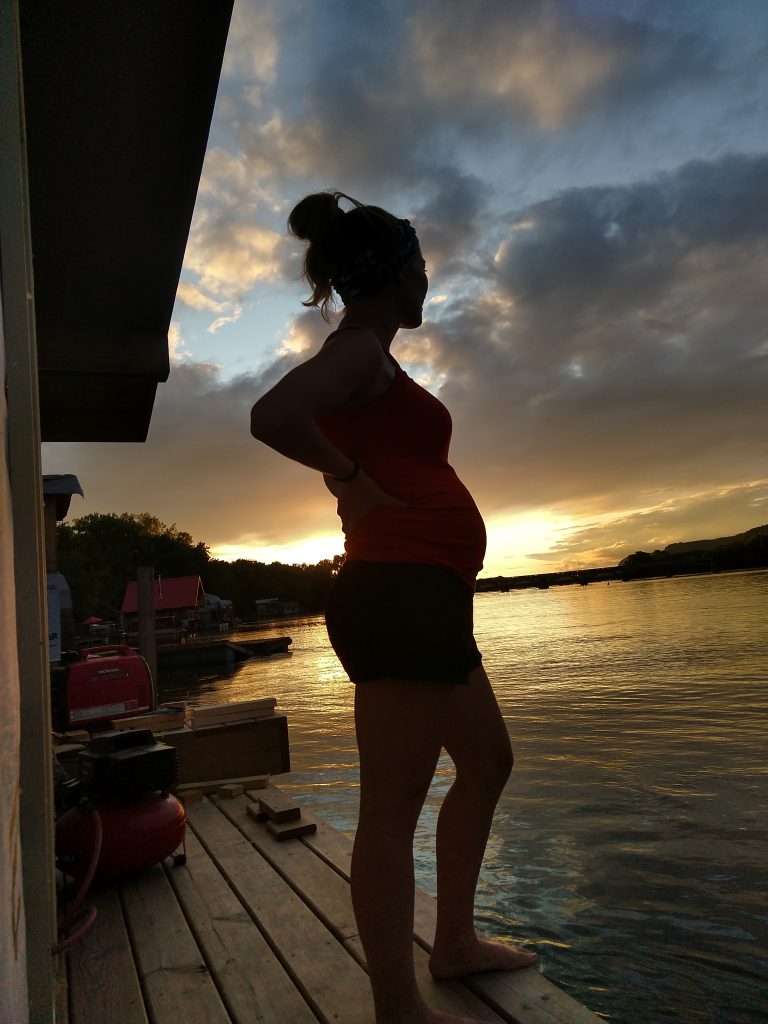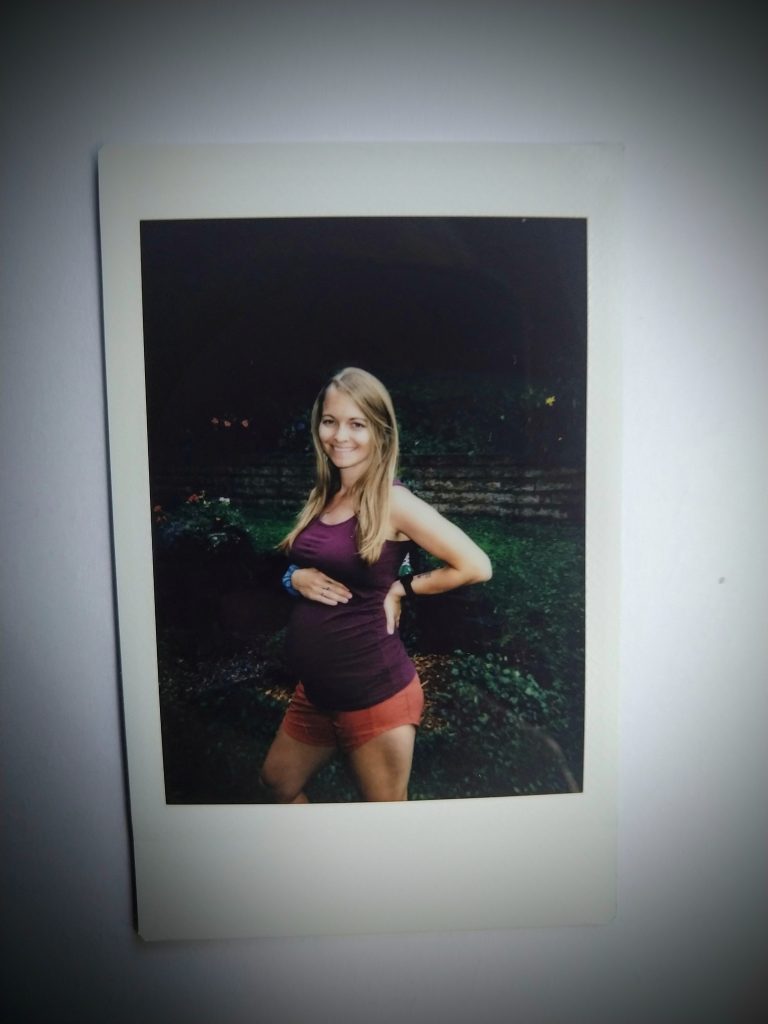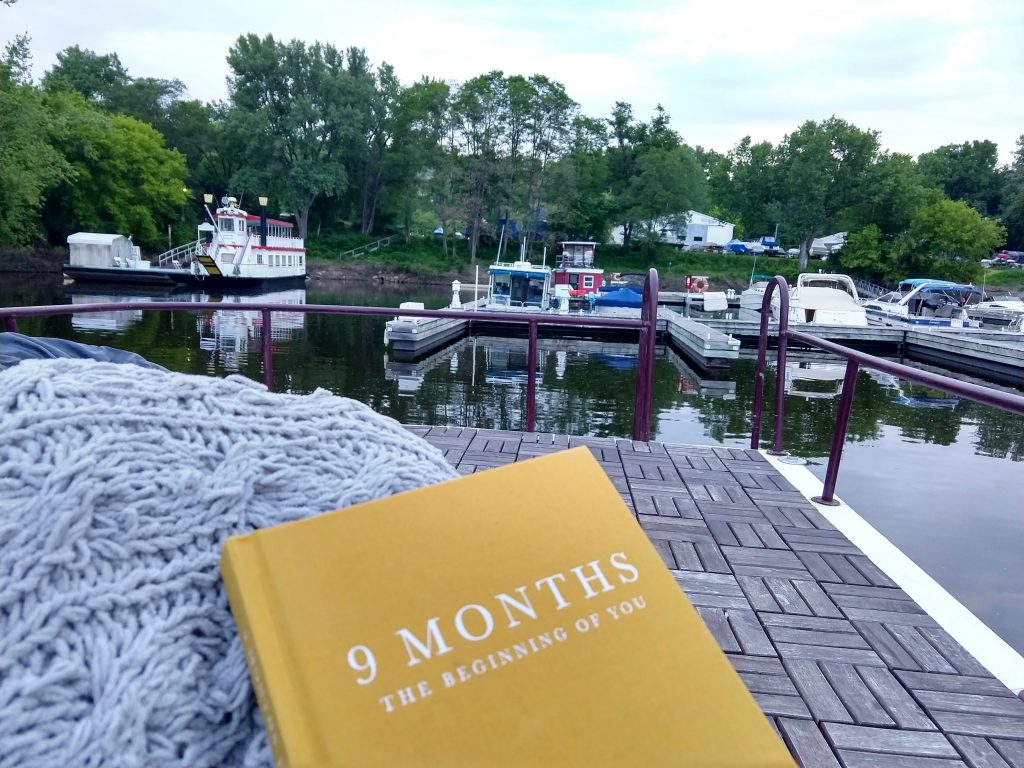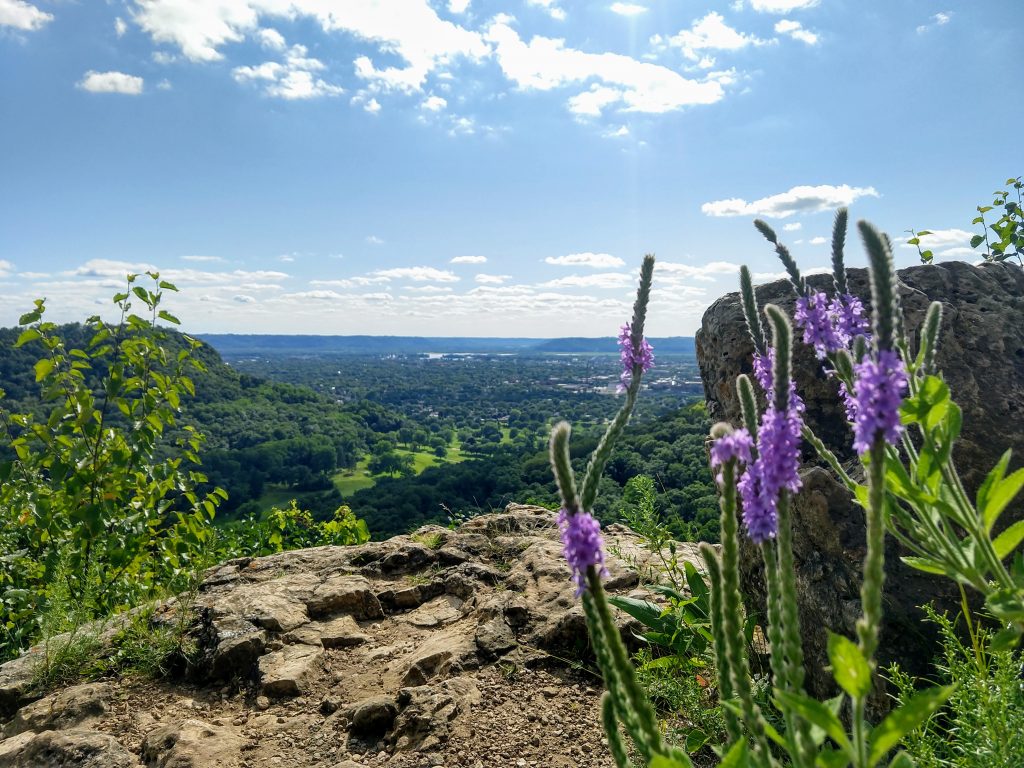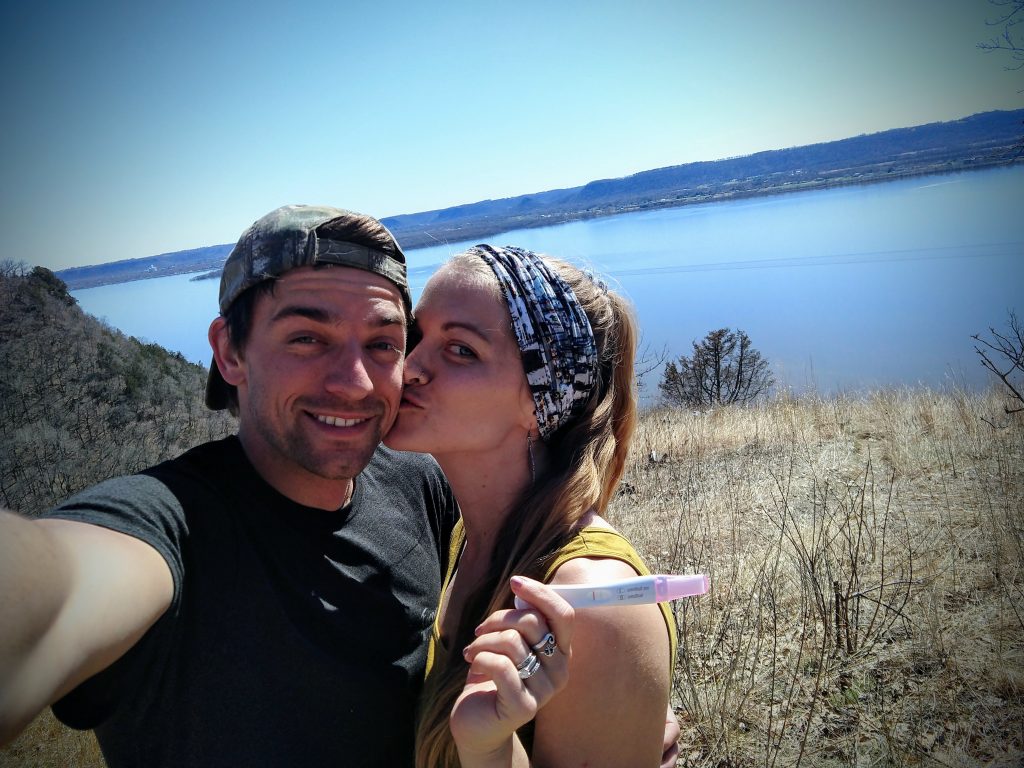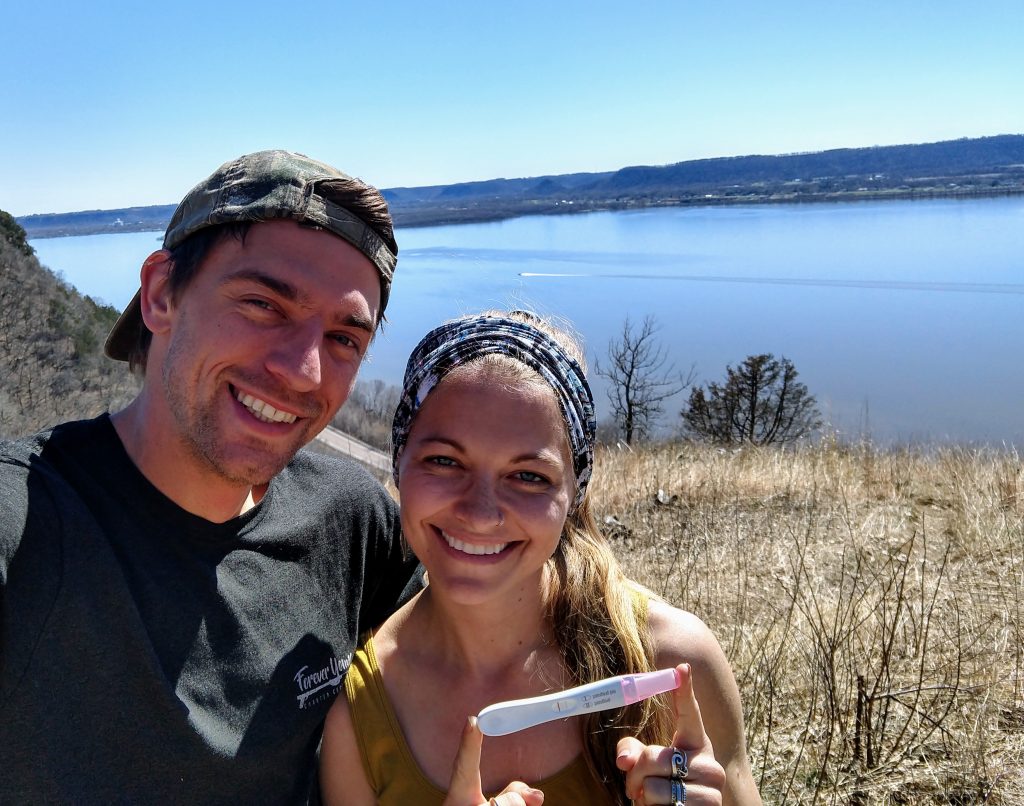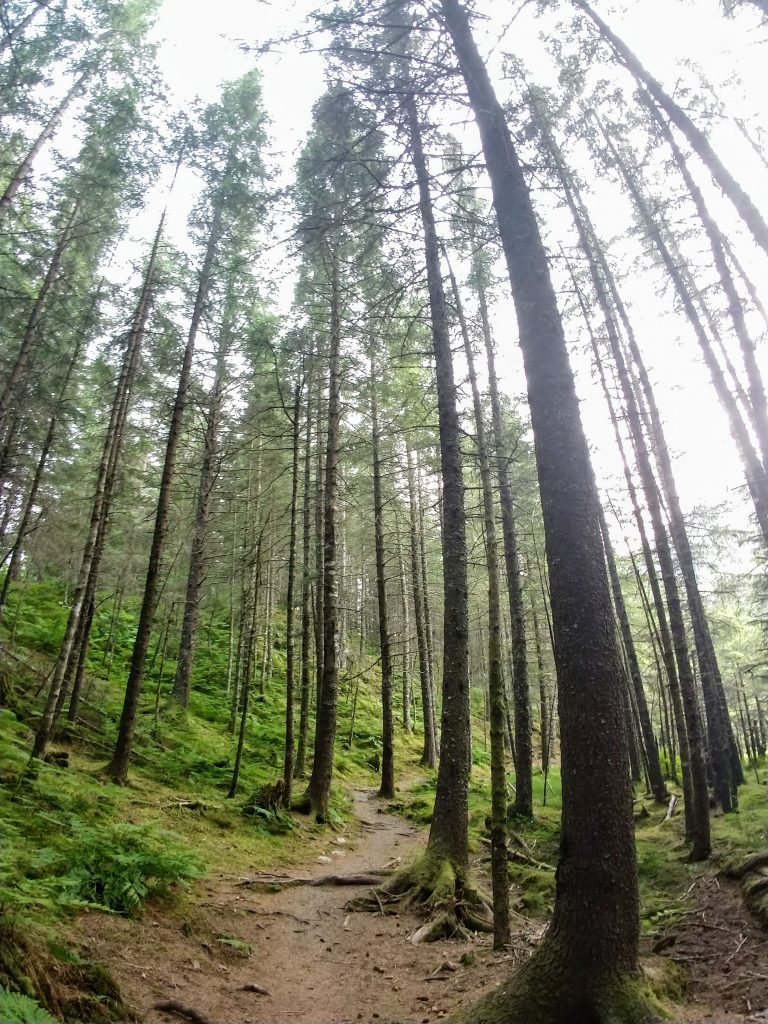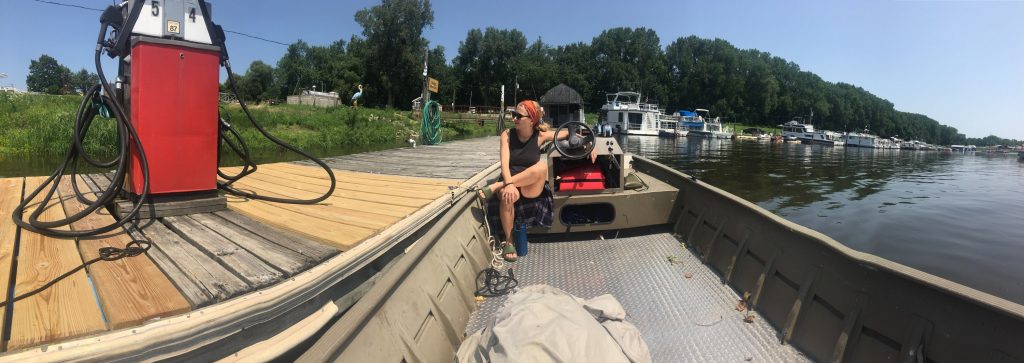It is 6:45am on Saturday, August 24, 2019: Day #2 of driving Neighbor Girl down the river to her new port of Latsch Island, Winona, MN. We beached our sturdy steel houseboat on a sandbar last night near Mile Marker 810. One lock and dam down, four to go.
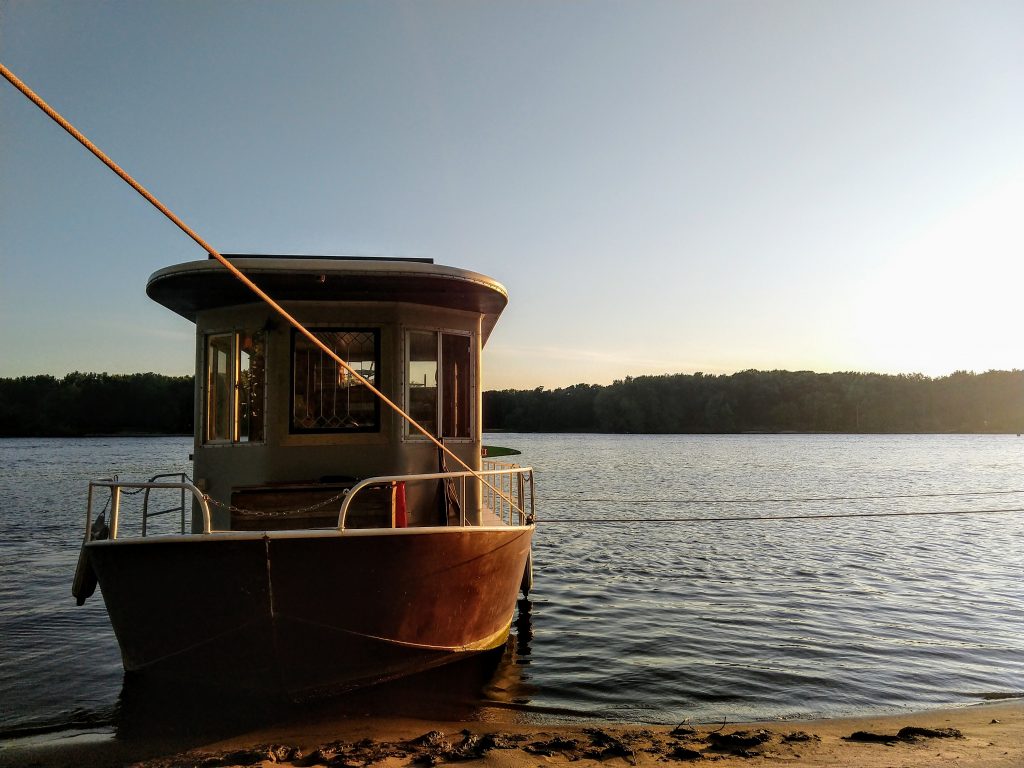
The river treated us kindly yesterday. Perhaps she feared that I would flood her with my tears. We left our home yesterday. More specifically, we drove our houseboat out of her home port. We left Watergate Marina in Saint Paul, Minnesota- our home base for the last four years.
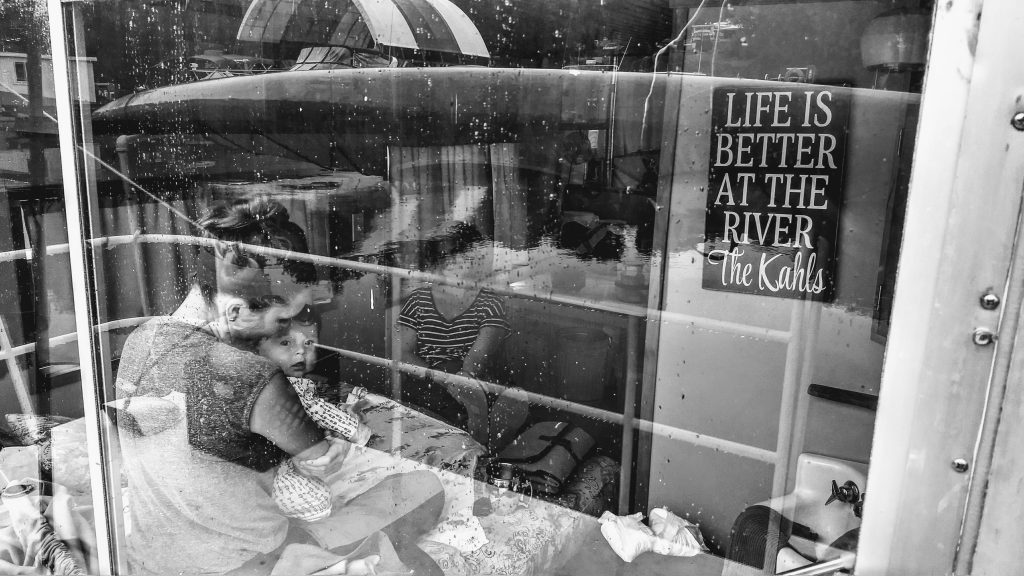
We bought our houseboat there five years ago, left the country to travel to 13 others assured that in six months, we would have this 142 square feet of living space to exist on for the summer. One summer of living aboard turned into a fall, a winter, a spring, and three more years just like that. Michael and I joyfully resided on this tiny floating home together tucked away in a quiet park marina along the floodplains of Saint Paul where even the locals don’t know we exist. (Trust me, getting an Uber pickup had about a 45% success rate.) We continued to exist there purposefully and peacefully with eight other boats year-round and countless more during the seasonable and vibrant summers.
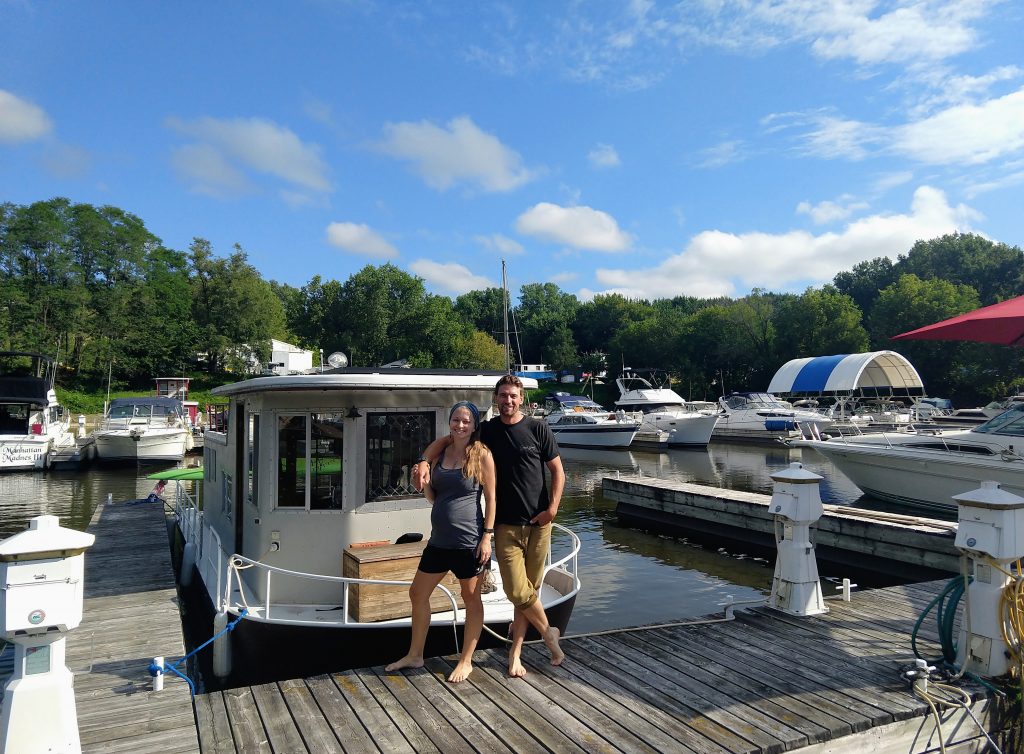
During these last four years of life, I worked at Hennepin County Medical Center at a job that I loved for challenging every part of me and showing me the hardest and most beautiful parts of humanity. Michael and I spent weekends building our cabin up north. We got married. We made a baby. We made a whole family in this marina and some very best friends; I’m looking at you tugboat and sailors. So, as we leave port with Ken and Roger tossing our lines, it’s no wonder that the Mighty Mississippi fears I may flood her waters with these unsupressable tears that well up from the pit of my gut and burn my heart on their way up to my pathetic sniffling face.
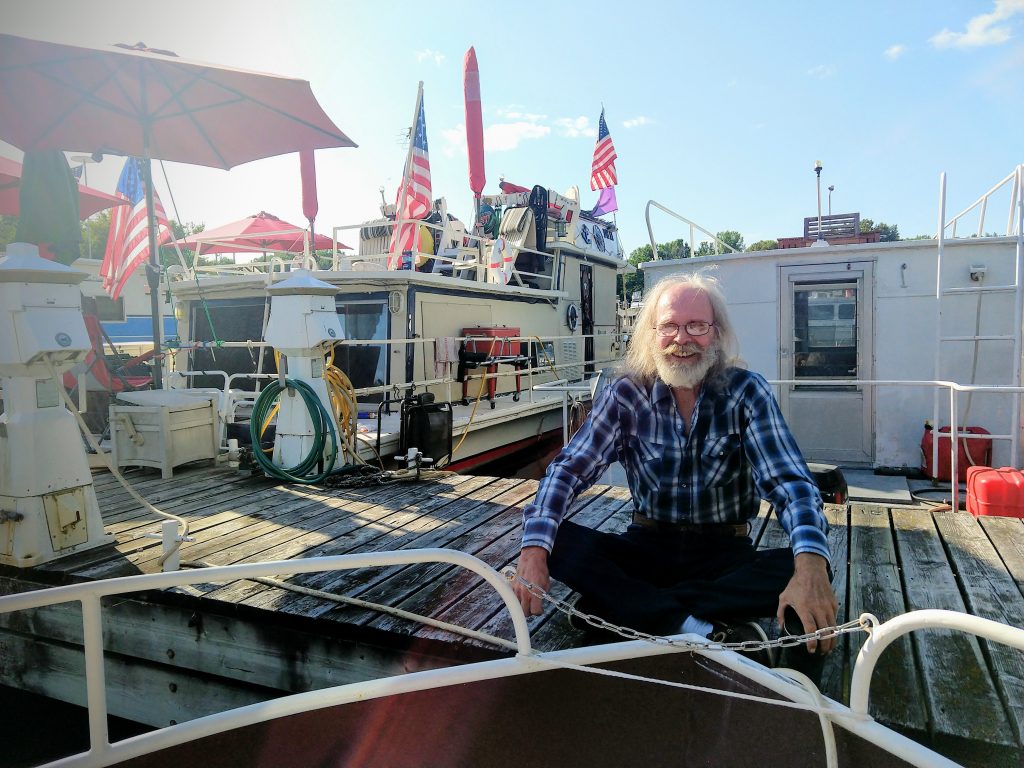
Watergate Marina is beautiful on this day- a sky as blue as I’ve ever known it and a sun that casts down an easy 70 degrees.
Video: Leaving Port
As we slowly leave the marina, I hand the wheel to Michael and spend a minute on the stern (slightly embarrassed by the puddle I’ve become) as our home harbor disappears from sight. Michael joins me, and I tell him, “I’m not sad, I’m just so so grateful.” He hugs me and says, “me too.” We agree that there is nothing more we could have wanted out of these last four years. For us, they were perfect. When I finally clear my eyes to look up at Michael, he has two big tears living on his cheeks- a rare sight on his typically cheerful and mischievious face.
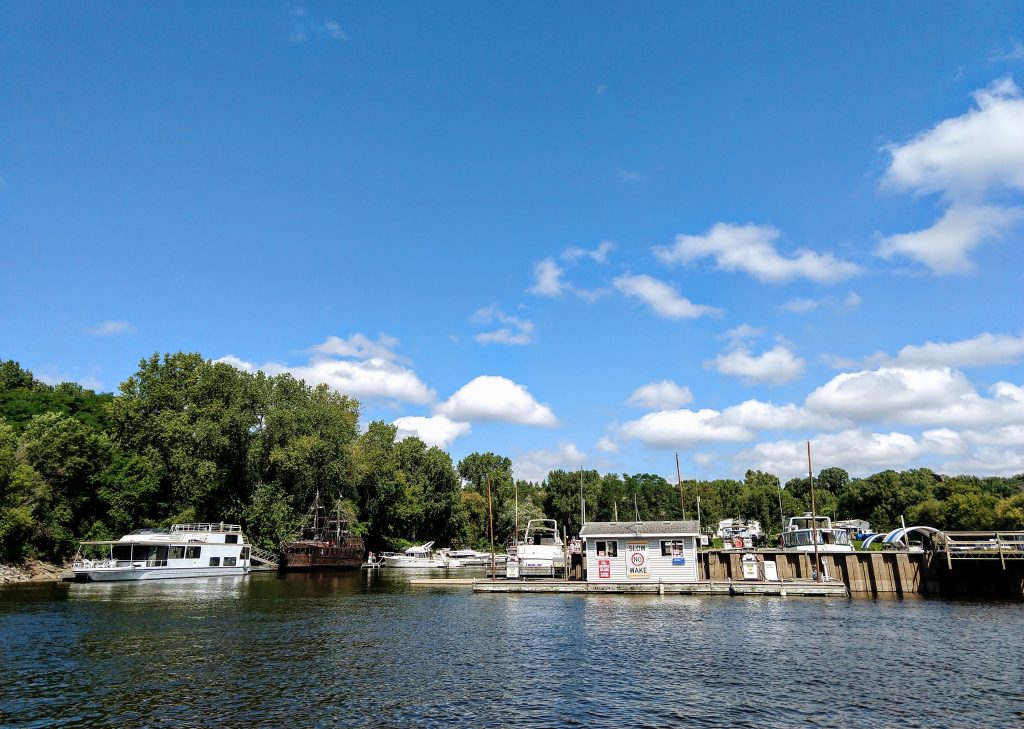
Now, on this Saturday morning, we revel in our first day of river boat journey success and last night’s very primal joy of sitting along the river’s shores with our feet in the sand and a warm campfire glow across our faces. Today, we are fresh-faced and confident going in to the biggest test that trusty Neighbor Girl has had to face in her last four years with us and likely in her 49 years of existence: the Lake Pepin crossing.
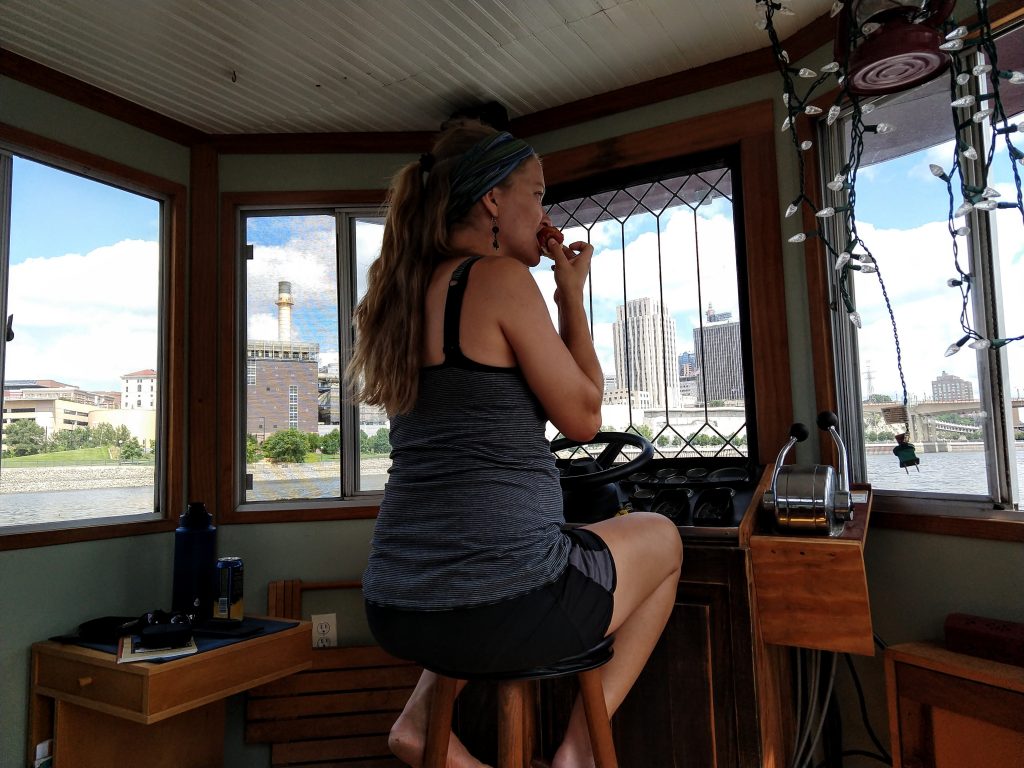
Lake Pepin is where the Mississippi River becomes it’s widest and deepest for a stretch of 22 miles. Lake Pepin widens to a distance of two miles and has an average depth of 21 feet and a maximum depth of 60 feet.
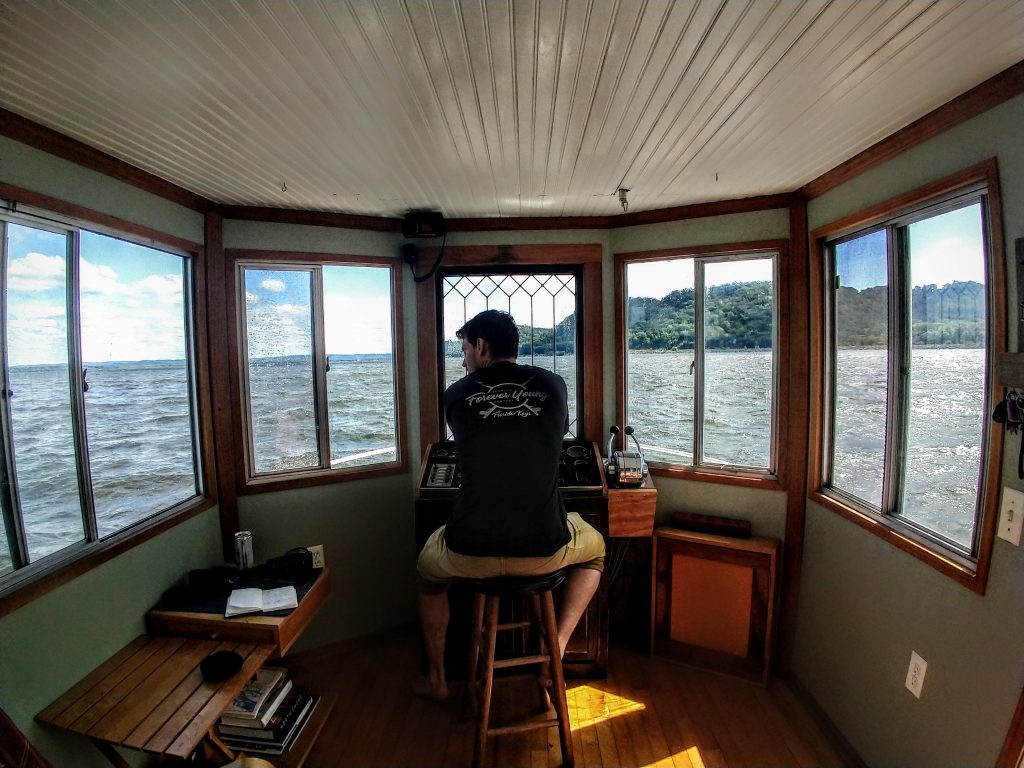
For those of you who have not done much river travel, I will enlighten you on the treachery of wing dams. The Mississippi River is lined with them. Wing dams are human constructs that were built during the 1930s and ’40s with the purpose of crafting a deeper and more reliable navigation channel. These wing dams were built prior to the present day lock and dam system as a means to control the flow of the river. Wing dams extend partway across a river channel and often go undetected depending on the depth of the water at that time. If the water is low enough, you will see a line across the water that delineates a smooth water surface upstream and a choppy water texture downstream of that wing dam. It takes a practiced eye to identify these.
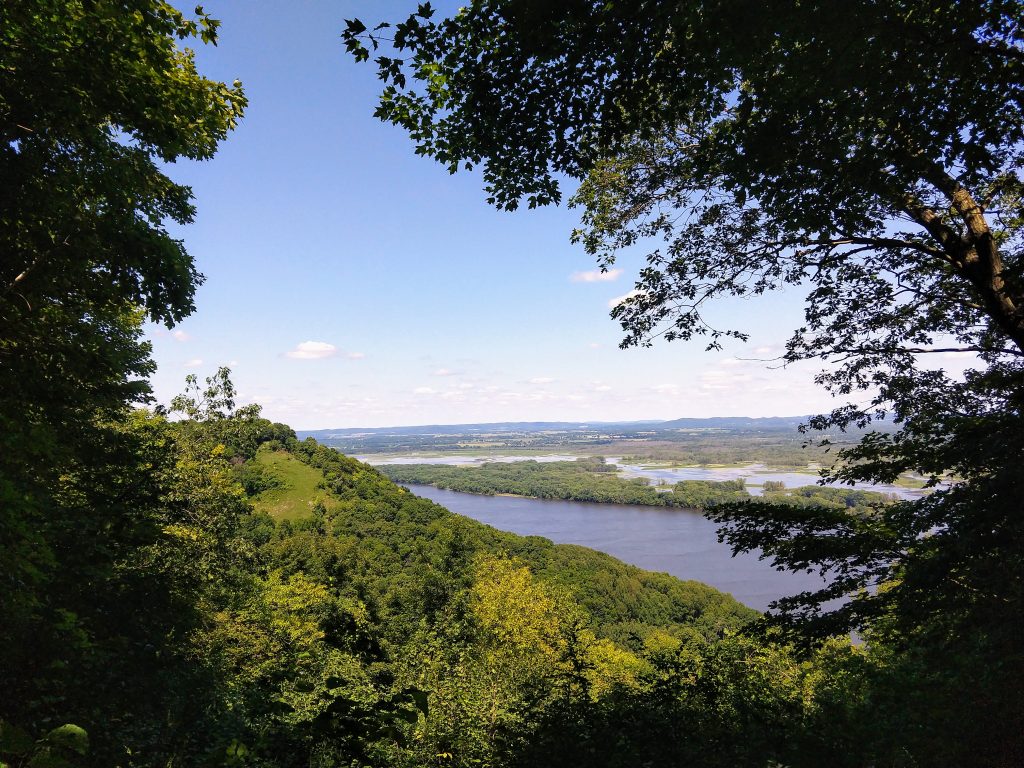
Now, on to the treacherous part. Wing dams are unmarked. Boats and boat engines are frequently wrecked by these shallow lurking structures. The good news? Wing dams do not exist within the main channel which is marked by red and green steel buoys. “Red, Right, Return” means that the red marker will be on your right as you return north. Since we are traveling downstream, the green is on our right and the red is on our left, or so we expected…
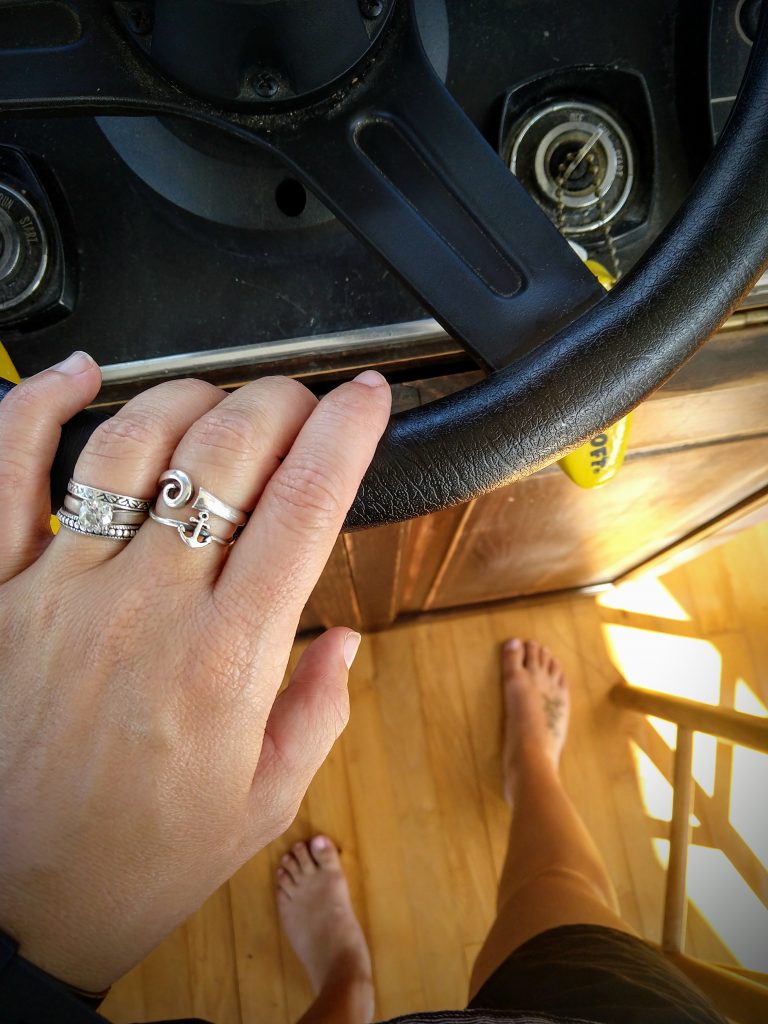
At the head of Lake Pepin where the water widens considerably, the reassuring red and green channel markers suddenly become non-existent. Things had been going very well so far. With a high level of confidence, I thought, “no big deal, the whole width of the river must be open for business.” We didn’t bother to check the river charts that Michael had downloaded on his phone. Within 15 minutes of cruising cockily along the Minnesota shore, I blazed our little houseboat right into a submerged sandbar. The engines grumbled as they tried to process the run-in with sand and thick weeds. My relaxed mood shifted to “shit, shit, shit.” This was not the spot to lose an engine.. or two. Thank God we have two. I inched out of this disaster and let the engines relax. They sounded gruff for ten minutes before regaining their deep calming purr. We lucked out. Michael checked his river charts and sure enough, the elusive submerged bar was marked on there. “What the f***. If that’s been known long enough to include on a chart, why isn’t there a frickin’ marker by it?!” I exclaimed this in defense of my sweet old boat and dented captain’s pride. Michael laughed, and we chugged on.
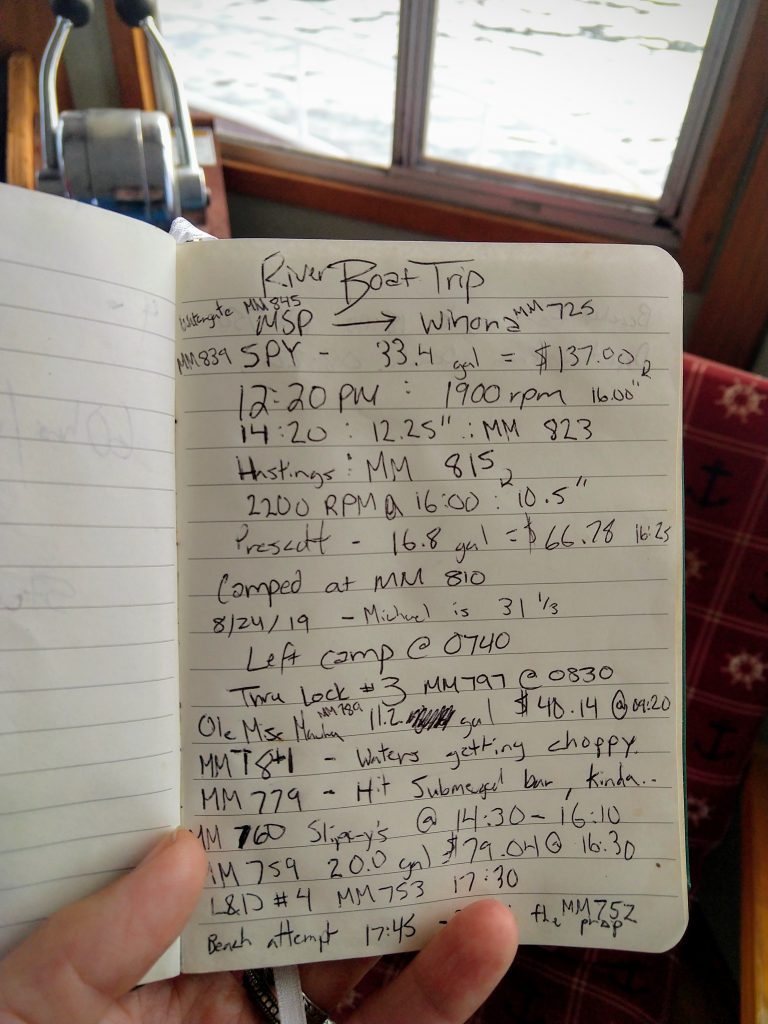
We had 22 miles of Lake Pepin ahead of us; three hours of white crested waves beating our steel hull from all sides. We were fortunate that the day’s wind came from ahead as Neighbor Girl does not fair well in a side wind. A side wind of today’s speeds would have forced us to sit this day out, but with a head wind, we pressed on. We quickly learned that both of our bilge pumps were in working order… whew. Water was leaking in from somewhere, or everywhere as the decks were fully rinsed with each wave. Thankfully, our pumps had no trouble keeping up and expelling this intake. Neighbor Girl was doing great.
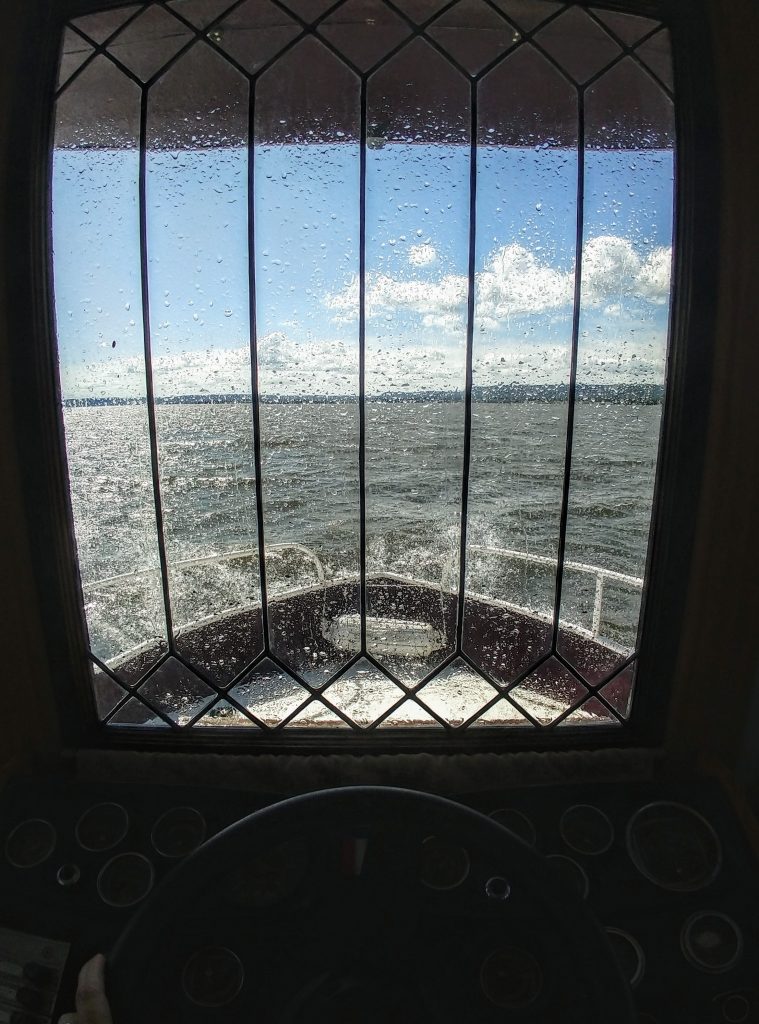
What I did not expect from our Lake Pepin crossing, besides that disruptive submerged sandbar at the start, was that the main channel crosses through the middle rather than along the shoreline; this caused us to be nearly a mile from shore for most of the venture. With the wild wind splashing from ahead, mysterious dark waters for a mile on all sides, and migrating birds overhead, we felt like true river nomads now! We cranked the music, danced at the helm, and celebrated feeling free and dry in our little moving home.
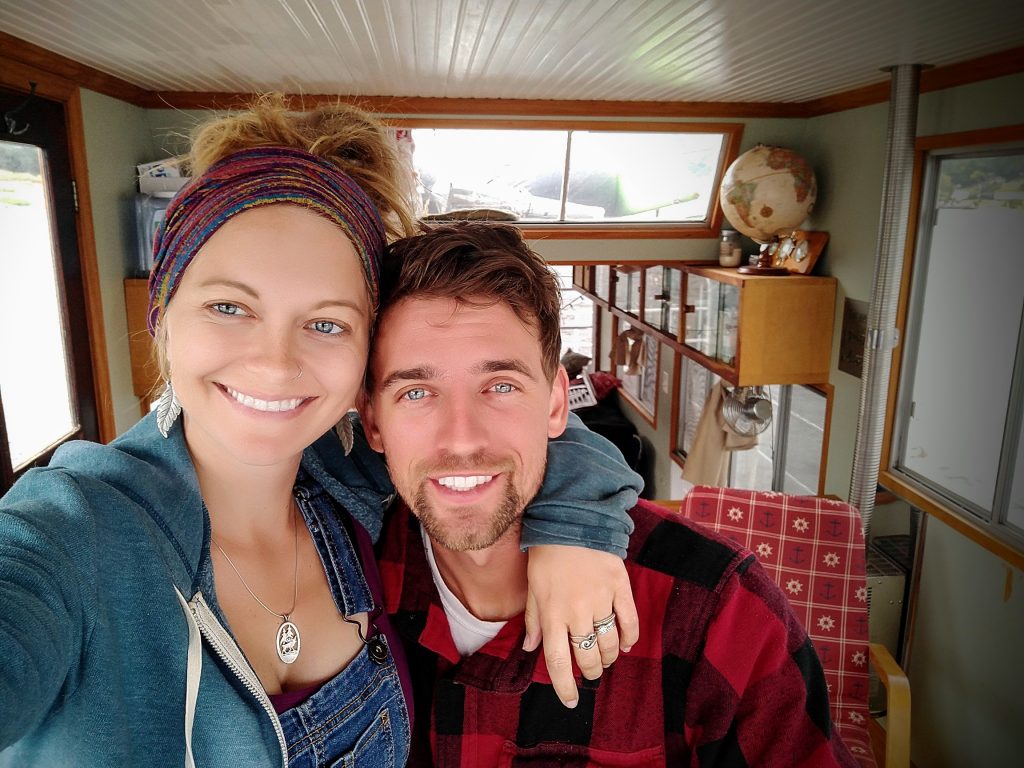
Later that night, following a celebratory dinner at Slippery’s Bar in Wabasha, we ran our boat aground once again in an attempt to beach up for the night. Neighbor Girl made it out of grounding incident #2 unscathed, and we found another, more perfect spot to make dinner and watch the sun set behind the distant bluffs.
Video: Beach Camping
As night fell, a beaver played near our boat. We did our best to keep quiet and observe his antics, but he caught a glimpse of us, slapped his tail, and dove smoothly away.
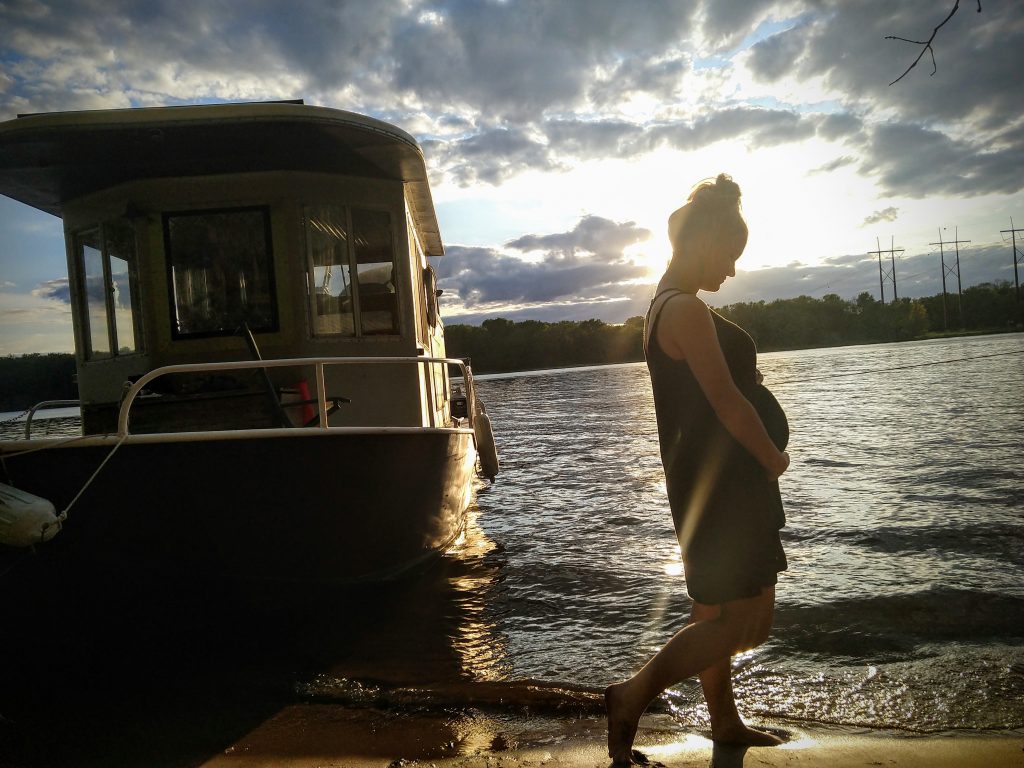
It is now Day #3 of this river boat adventure. We wake just south of Alma, WI to find that we have no maple syrup for the pancakes I have been dreaming of all night. These are the things that matter at sea- a good warm meal in the morning and a cold hard drink at night.
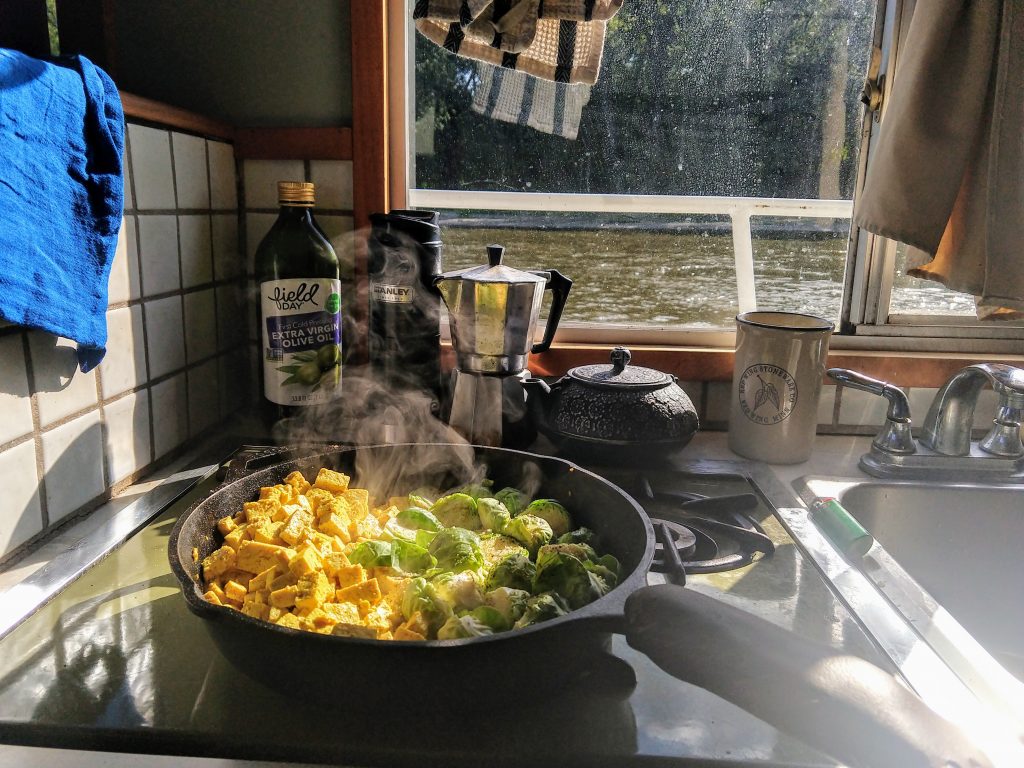
Since my little growing fetus disallows me from the cold hard night drink, I am living for these warm morning meals. My husband must love me or something, because we backtrack a mile to Alma’s city dock with the mission of maple syrup acquisition and a propane tank refill. We get distracted by good conversation and fresh pretzels at The Alma Bakery where we are introduced to a 50% off closing sale at The Junk Market down the street. Two hours later, we reboard our boat with propane, fresh pretzels, four wooden folding chairs, a canvas painting of a ship, some sort of antique cutting tool, and with the baker himself for more conversations on scheming and dreaming. The baker didn’t end up departing with us. I suppose he had more pretzels to make after we cleaned him out. The syrup never made it on board either. We are far too distractable to ever become pirates, at least productive ones.
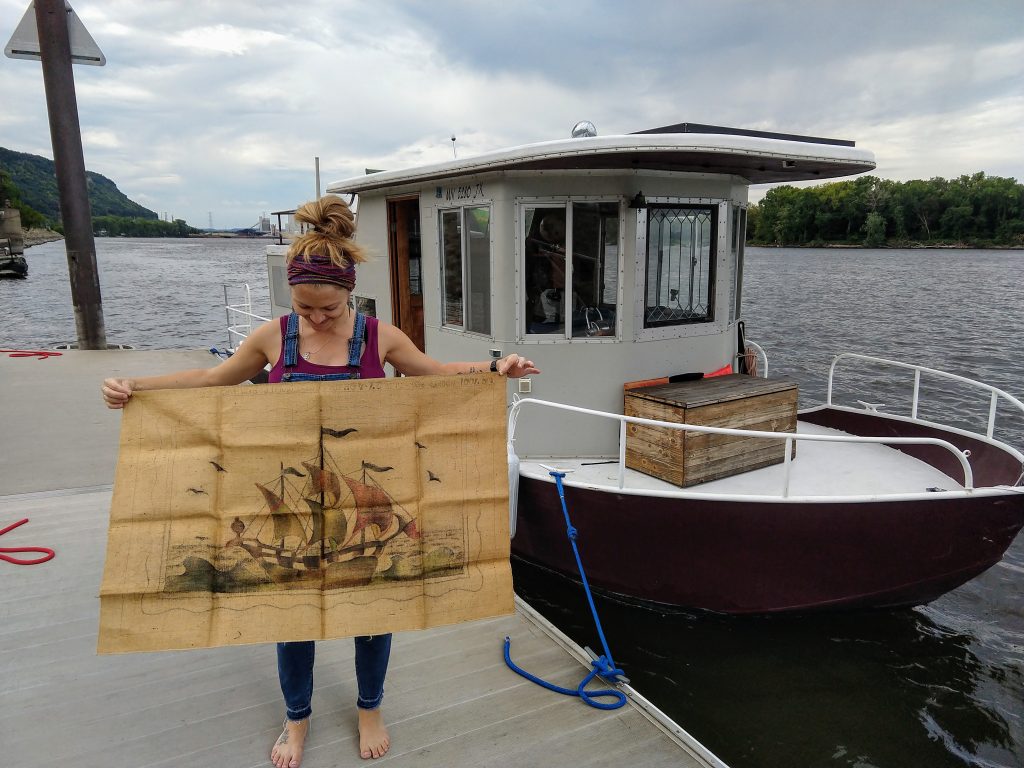
We left Alma at 11:15am, made it through Lock and Dam 5 at 1:12pm, and through the final lock, Lock and Dam 5a, at 2:35pm. We were greeted on the other side of the lock by two boats- one with my parents and the other with the Brandon family. It was a lovely welcoming. We made a small parade to my parent’s cabin where my sister and more family boarded for the final stretch to Latsch Island.
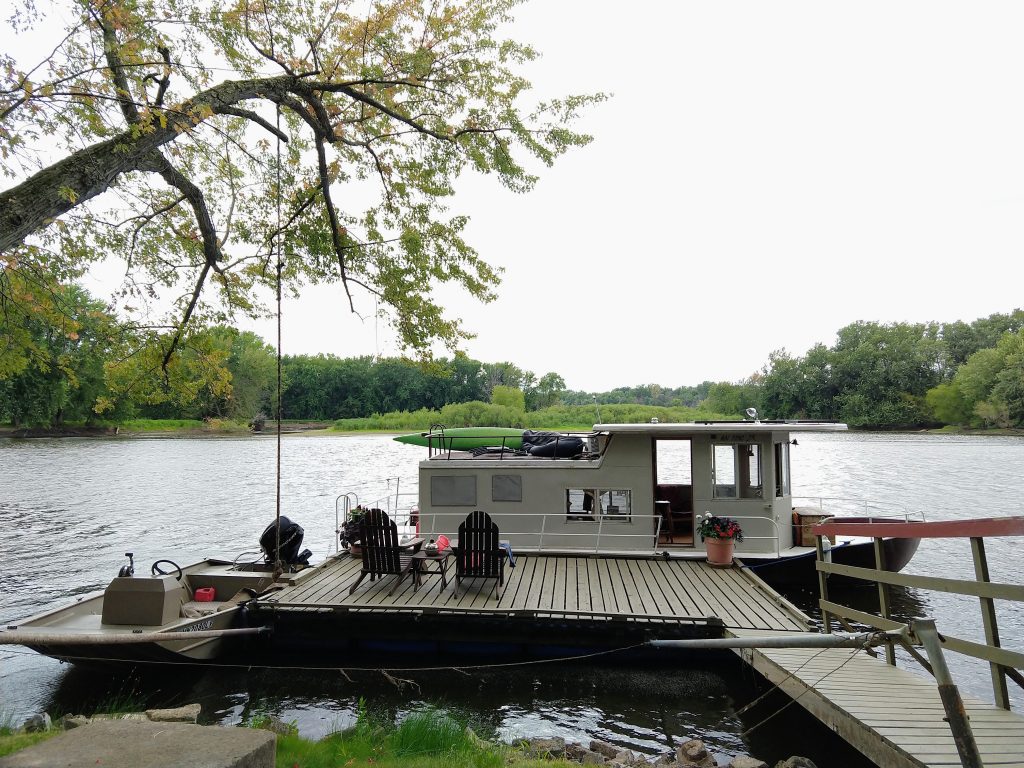
We arrived at The Wheel House, our future floating home under construction, at 4:45pm. We docked with a bang… literally. Michael drove flawlessly up until this climatic point when he made a small but very audible dent in the side of our new boathouse. The excitement got the best of him. I’m taken back to over four years ago when we took Neighbor Girl out for her first trip. With a fresh coat of paint, newly placed engines, and not a bit of knowledge on how to drive this big box of steel with twin engines and no keel, we enthusiastically headed for open water. As brave as ever, we felt like two free birds exploring a world of new possibilities; it was a very familiar feeling that resided in us throughout these last three days. Eventually, on this day four years ago, Neighbor Girl’s maiden voyage came to an end; it was time to dock her back in the slip. Michael took the wheel, used both the wheel and the two throttles to steer (We later learned that this was the beginner’s mistake. You must only use the throttles and no wheel if you hope to park without incident.), and not-so-gently rammed in to the bowsprit of our neighbor’s much nicer boat. Luckily, only ours came out with a scar- a four foot gash through the cabin’s port side. Neighbor Girl’s beauty scar still remains today.
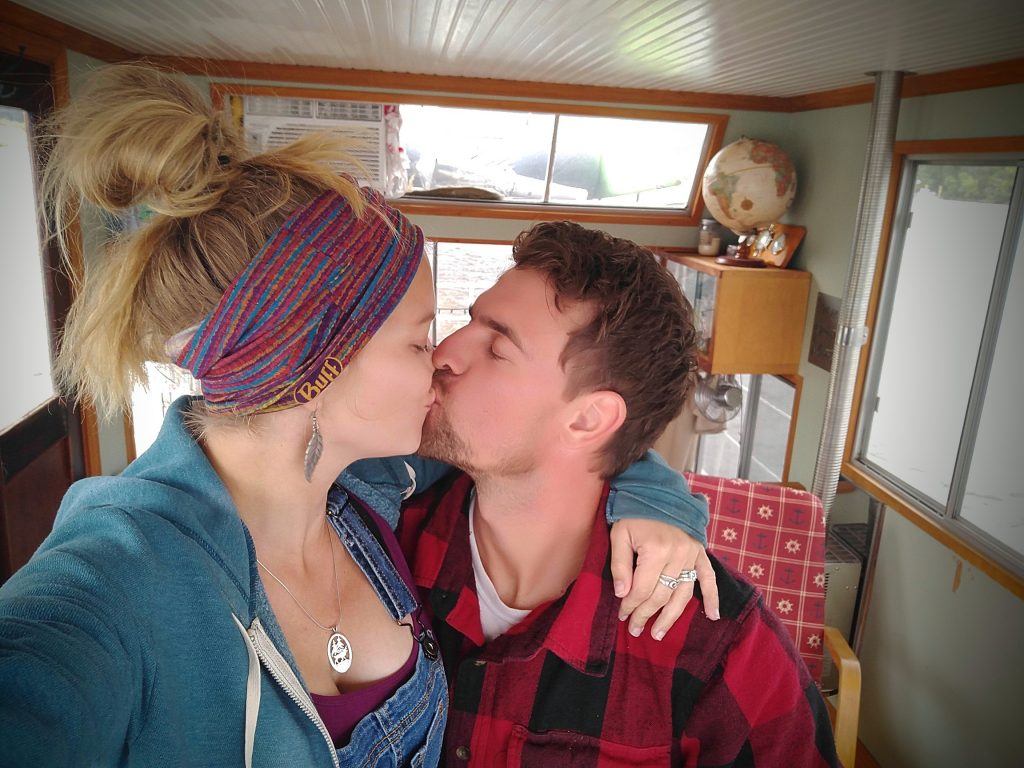
The Wheel House now has an upstream scar to match. These two little river homes now live side by side, each with an imperfection to remind us of the joy in our wildest ideas and new beginnings. May we never be ashamed of these scars or scared to make new ones; they each tell a great story. May we continue to live our lives being too novice, unintimidated, a little stupid maybe, and much too eager in all the new and unusual waters that come our way. May we sometimes forget the syrup and come home with pretzels and a new friend instead.
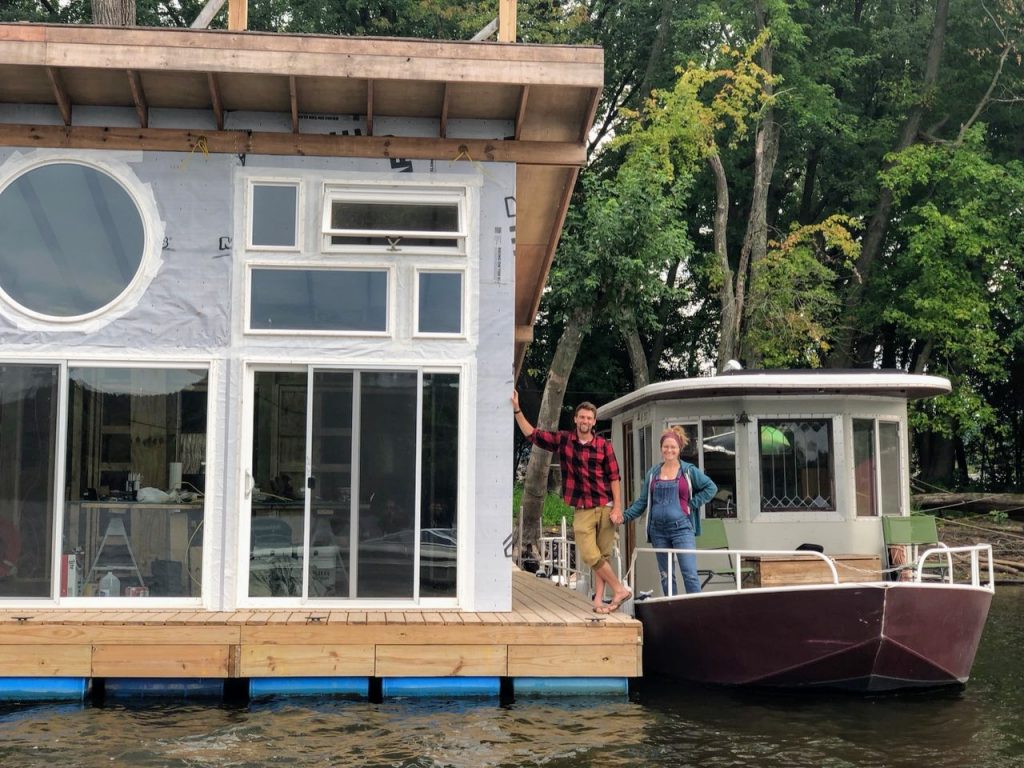
Video: Celebratory Champagne
